- Philippines
- New Zealand
- Netherlands
- United Kingdom


Cape Town or Durban: Which South African City to Visit?
Best honeymoon destinations in egypt: 5 romantic places, basic arabic phrases: 40 essential sayings to learn, maldives or seychelles how to choose between two paradises, the 5 cheapest countries to visit from india in 2022, is india a good travel destination 7 reasons we say yes, the 7 warmest places in india, nightlife in india: 9 best party places in goa, sailing down under: the 7 best places to sail in australia, the 7 most venomous snakes in australia to know about, sydney or melbourne: which destination to visit in australia, dangerous animals in australia: 9 species to look out for, is tallinn safe: your safety guide to estonian capital, the 7 most underrated european travel destinations in 2022, why is luxembourg the richest country in the world rags to riches, best water parks in greece: 7 spots for a great day out, the 5 best places to see monkeys in costa rica in 2023, is campeche safe 2022 safety guide for the yucatan peninsula, los angeles or las vegas: which city should you visit, seattle or san francisco: which us city is better, lima vs. quito: 9 things to compare these capital cities, is argentina safe your complete safety guide (2022), is ecuador expensive our ultimate spending guide, is peru expensive: 2022 south america money guide, how to travel between canary islands: the ultimate guide.

Ah, the Canary Islands – a land of smoke-belching volcanos, black-sand beaches, barreling surf breaks, and buzzy resort towns where end-of-holiday tans are all but guaranteed. This sunny archipelago is considered one of the greatest spots in Spain, and, for some travelers, hitting just one island is simply never enough. Cue this guide to how to travel between the Canary Islands…
Here, we’ll delve into the main ways you can trade one for another mid-trip, no matter whether that means going from the lush laurel forests of Gran Canaria to the whitewashed towns of inland Lanzarote , the carnival streets of Santa Cruz de Tenerife to the teal bays of Fuerteventura, or something else entirely.
The good news is that there are pretty darn good links between this set of Spanish isles. Flights and ferries combine to offer a whole load of different options, both quick and interesting, affordable and comfy. Let’s dig a little deeper…
Table of Contents
An intro to the geography of the Canary Islands
First thing’s first: Let’s get a ballpark feel for the geography of the Canary Islands. Doing that should give you an idea of what it’s like to travel around this much-vaunted Spanish archipelago, what sort of travel times you can expect between the different destinations, and what transport options are on the menu.
Find A Travel Buddy!
Set out in the Atlantic Ocean just 62 miles off the sun-scorched coast of North Africa, this autonomous region of Spain – the southernmost, just so you know – is pretty darn remote. It’s a four-hour flight in from London before you even get to start hopping from isle to isle. Thankfully, there are oodles of connections and multiple entry points. Picking the right one is certainly worth thinking about when planning a cross-island jaunt, too, because some are better starting positions than others.
In total there are eight main islands in the group, but a whole scattering more smaller islets that have tiny populations, and, on top of that, oodles of rocks that are little more than perches for seagulls above the swells. The ones we’ll focus on here are the eight main islands since they are by far the ones that you’re most likely to want to visit for your holidays.
Said isles fall into two main groups: The western and the eastern group. There’s a strait of about 58 miles dividing the two sets, but they are more discernable thanks to their geography – the western isles are lusher and more altitudinous, while the eastern group is more rugged and volcanic. Here’s a closer look at which islands belong to which group:
- The western group: Tenerife, Gran Canaria, La Gomera, La Palma
- The eastern group: Fuerteventura, Lanzarote.
In total, all the islands in the Canaries span a section of the Atlantic that’s about 300 miles long from east to west. The biggest divide is between the two groups, but it’s still navigable and easy to cross, as you shall see…
How to travel between Canary Islands – a quick overview
Now we’ve got the geography lesson out of the way, let’s take a look at how you can hop and cross that 300 miles of Atlantic Ocean from west to east, east to west, all in search of perfect beaches and the best volcano hikes. Let’s begin by stating the obvious: There are only two ways to cross from isle to isle, by sea or by air. To put it another way, by plane or by boat.
Mhmm, there are no bridges that link any of the isles, no underwater tunnels, no causeways. You’re going to have to ditch the wheels for this one. The good news is that actually makes things pretty simple, as you always know there are only ever two choices for getting from A to B in these parts.
Generally speaking, flying is considered the fastest option while sailing is more relaxed. However, there are some routes that you might have to do by one method simply because there is no boat or flight connection on the menu. That’s why it’s worth getting to know a bit about both modes of transport…
How to travel between Canary Islands by plane
Here’s the good news: Every single major island of the eight in the Canaries has its own airport, while Tenerife – one of the most popular – even has two. That probably makes this one of the best-connected regions for aviation in the whole of Europe, although most of the terminals are pretty small and only host a handful of carriers.
Talking of carriers…there are two main names to know about when it comes to internal flying here. Let’s take a quick look at each in turn:
- Binter Canarias – The biggest of the two carriers who operate domestic routes throughout the Canaries, Binter, as it’s known for short, has an encompassing array of links between major islands but also serves international destinations in mainland Spain and other Atlantic archipelagos like Cabo Verde.
- Canaryfly – A relatively new name on the block, Canaryfly was founded in 2008 and currently runs flights on eight of the most popular routes in the chain.
Both of the above operate airplanes designed specifically for short haul carrying. That means no massive Boeing and Airbus models, but rather smaller prop planes built by Bombardier and the like. The upshot? Capacity tends to be smaller so flights can sell out faster, but there’s also not an overload of demand and there are often multiple departures each day on the most popular routes.
Route wise, things are pretty good when it comes to moving from major islands to other major islands. For example, you can get upwards of 10 connections a day on Binter Canarias between Lanzarote and Gran Canaria. The same can’t be said for getting to smaller islands like La Gomera, which only has two or three daily links to Gran Canaria, and sometimes no links to other islands at all, meaning a stopover will be needed if you want to do certain legs in a single trip.
Prices tend to be VERY attractive for flights. As an example, springtime fares on Binter from Tenerife North to La Palma can be as low as €12.50 ($13.15) each way, while connections on the most popular routes rarely swell past €27 ($28.40) each way. These are also full-service fares, mostly allowing for some changes and with a checked baggage allowance of 20kg per person (10kg for infants). Not bad, eh?
The truth is that flying from Canary to Canary is now the number-one choice among travelers. Dropping airfare and high convenience means it’s very often the best way to get from A to B, especially when looking to move quite far across the archipelago, say from Lanzarote in the east all the way to La Palma in the west.
How to travel between Canary Islands by boat
If you don’t have a head for heights or want to travel slow, then there’s always the option of the boats. At least four big companies still offer a comprehensive array of island-to-island links here, including Armas , Biosfera Express, Líneas Romero, and Fred Olsen. Some specialize in different regions of the Canaries, while others cover the whole shebang.
Laying out every route there is by ferry in the Canaries would take a short book but suffice to say there are lots to pick from. A good starting point for planning a trip is to get to know the major ports of each island. That’s Arrecife in Lanzarote, for example, but Las Palmas in Gran Canaria, and then much smaller Puerto de la Estaca over in El Hierro. Knowing the places where the boats depart from makes it easy to search for routes out to the places you want to go, helping you put together island-hopping itineraries in full.
Ferry links naturally take longer than connections in the air. While a flight from Lanzarote to Gran Canaria is in the range of 45 minutes, a boat trip can clock up 5.5-6.5 hours in all. It’s certainly not for commuters or hurried vacationers. In fact, one of the great draws of the trip by water is the journey itself – it’s not unusual to spot dolphin pods and whales as you go, while the vistas of other islands passing by can be wonderful.
Sadly, the prices don’t seem to mirror the extra effort it takes on many routes, so ferries in the Canaries are a bit of a labor of love. You can pay under €20 for a ride from Arrecife to Gran Canaria by plane but will have to fork out nearly €100 for the same trip done by the sea!
Of course, the major upside of ferry travel is that you can transport more than just yourself and your baggage. You can take whole cars and motorbikes if you like. However, if you plan on doing that and are renting a car, it’s certainly worth checking with your hire company that their policy allows for inter-island travel.
How to travel between Canary Islands – our conclusion
There are two main ways to travel from Canary Island to Canary Island: Boat and plane. Most travelers will try the latter first these days. That’s because flying is not only a whole load quicker but also cheaper in many cases. It’s also now possible to get to all eight of the major isles by the skies, though some journeys might require a stopover.
Ferries are slower and tend to be more expensive when it comes to getting between the major islands. Reasons you might want to take them include the ability to transport cars and more luggage, but also the pleasantness of the ride itself (whale spotting is a possibility, you know?). Also, short ferry rides to a minor islands, like to La Graciosa from Lanzarote, are often the ONLY option on the menu.
Destinations
- North America
- South America
- Group Tours
- Cookie Policy
- Privacy Policy
- Terms & Conditions
© 2022 Journeying The Globe. All Rights Reserved.
Got a Travel Question?
Ask questions, get inspired, and plan your next adventure with us! Join our free Facebook group for travelers and connect with a global network of passionate explorers.
JOIN FOR FREE
How To Travel Between Canary Islands: The Ultimate Guide

There are two main ways to travel from Canary Island to Canary Island: Boat and plane. Most travelers will try the latter first these days. That’s because flying is not only a whole load quicker but also cheaper in many cases.
Ferries are slower and tend to be more expensive when it comes to getting between the major islands. Reasons you might want to take them include the ability to transport cars and more luggage, but also the pleasantness of the ride itself ( whale spotting is a possibility , you know?).
There are pretty darn good links between this set of Spanish isles . Flights and ferries combine to offer a whole load of different options, both quick and interesting, affordable and comfy. Let’s dig a little deeper…
Table of Contents
How to travel between the Canary Islands – a quick overview

Now we’ve got the geography lesson out of the way, let’s take a look at how you can hop and cross that 300 miles of Atlantic Ocean from west to east, east to west, all in search of perfect beaches and the best volcano hikes. Let’s begin by stating the obvious: There are only two ways to cross from isle to isle, by sea or by air. To put it another way, by plane or by boat.
Mhmm, there are no bridges that link any of the isles, no underwater tunnels, no causeways. You’re going to have to ditch the wheels for this one. The good news is that actually makes things pretty simple, as you always know there are only ever two choices for getting from A to B in these parts.
Generally speaking, flying is considered the fastest option while sailing is more relaxed. However, there are some routes that you might have to do by one method simply because there is no boat or flight connection on the menu. That’s why it’s worth getting to know a bit about both modes of transport…
How to travel between the Canary Islands by plane

Here’s the good news: Every single major island of the eight in the Canaries has its own airport, while Tenerife – one of the most popular – even has two. That probably makes this one of the best-connected regions for aviation in the whole of Europe, although most of the terminals are pretty small and only host a handful of carriers.
Talking of carriers…there are two main names to know about when it comes to internal flying here. Let’s take a quick look at each in turn:
- Binter Canarias – The biggest of the two carriers who operate domestic routes throughout the Canaries, Binter, as it’s known for short, has an encompassing array of links between major islands but also serves international destinations in mainland Spain and other Atlantic archipelagos like Cabo Verde.
- Canaryfly – A relatively new name on the block, Canaryfly was founded in 2008 and currently runs flights on eight of the most popular routes in the chain.
Both of the above operate airplanes designed specifically for short haul carrying. That means no massive Boeing and Airbus models, but rather smaller prop planes built by Bombardier and the like. The upshot? Capacity tends to be smaller so flights can sell out faster, but there’s also not an overload of demand and there are often multiple departures each day on the most popular routes.
Route wise, things are pretty good when it comes to moving from major islands to other major islands. For example, you can get upwards of 10 connections a day on Binter Canarias between Lanzarote and Gran Canaria. The same can’t be said for getting to smaller islands like La Gomera, which only has two or three daily links to Gran Canaria, and sometimes no links to other islands at all, meaning a stopover will be needed if you want to do certain legs in a single trip.
Prices tend to be VERY attractive for flights. As an example, springtime fares on Binter from Tenerife North to La Palma can be as low as €12.50 ($13.15) each way, while connections on the most popular routes rarely swell past €27 ($28.40) each way. These are also full-service fares, mostly allowing for some changes and with a checked baggage allowance of 20kg per person (10kg for infants). Not bad, eh?
The truth is that flying from Canary to Canary is now the number-one choice among travelers. Dropping airfare and high convenience means it’s very often the best way to get from A to B, especially when looking to move quite far across the archipelago, say from Lanzarote in the east all the way to La Palma in the west.
How to travel between the Canary Islands by boat

If you don’t have a head for heights or want to travel slow, then there’s always the option of the boats. At least four big companies still offer a comprehensive array of island-to-island links here, including Armas , Biosfera Express, Líneas Romero, and Fred Olsen. Some specialize in different regions of the Canaries, while others cover the whole shebang.
Laying out every route there is by ferry in the Canaries would take a short book but suffice to say there are lots to pick from. A good starting point for planning a trip is to get to know the major ports of each island. That’s Arrecife in Lanzarote, for example, but Las Palmas in Gran Canaria , and then much smaller Puerto de la Estaca over in El Hierro. Knowing the places where the boats depart from makes it easy to search for routes out to the places you want to go, helping you put together island-hopping itineraries in full.
Ferry links naturally take longer than connections in the air. While a flight from Lanzarote to Gran Canaria is in the range of 45 minutes, a boat trip can clock up 5.5-6.5 hours in all. It’s certainly not for commuters or hurried vacationers. In fact, one of the great draws of the trip by water is the journey itself – it’s not unusual to spot dolphin pods and whales as you go, while the vistas of other islands passing by can be wonderful.
Sadly, the prices don’t seem to mirror the extra effort it takes on many routes, so ferries in the Canaries are a bit of a labor of love. You can pay under €20 for a ride from Arrecife to Gran Canaria by plane but will have to fork out nearly €100 for the same trip done by the sea!
Of course, the major upside of ferry travel is that you can transport more than just yourself and your baggage. You can take whole cars and motorbikes if you like. However, if you plan on doing that and are renting a car, it’s certainly worth checking with your hire company that their policy allows for inter-island travel.
Reece is the creator and editor of Travel Snippet. He has visited more than 38 countries over a 10-year period. His travels have taken him through the majestic mountains of Italy, into the cities of central Europe, across the islands of Indonesia, and to the beaches of Thailand, where he is currently living. He is passionate about travel and shares his expertise by providing the best travel tips and tricks to help you plan your next adventure.
Related posts
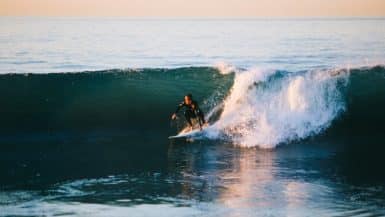
The 5 Best Fuerteventura Surf Spots For Beginners

Whale Watching In Tarifa: Best Time, Prices, & Tour Operators

The Best Snorkeling In Spain: 7 Spots To Dive Into
A first-timer’s guide to the best Canary Islands
Book your individual trip , stress-free with local travel experts
Select Month
- roughguides.com
- a-first-timers-guide-to-the-canary-islands
Plan your tailor-made trip with a local expert
Book securely with money-back guarantee
Travel stress-free with local assistance and 24/7 support

written by Joanne Owen
updated 05.06.2024
The Canary Islands are home to the world’s second largest Carnival and the highest mountain in Spain . It is also home to world-class wines and beaches. Tenerife, Fuerteventura, Gran Canaria, Lanzarote, La Palma, La Gomera and El Hierro - all have a lot to offer travellers. But what is the best Canary Island? Read our guide and choose for yourself.
What is the best Canary Island?
1. tenerife - best for an infinite variety, 2. fuerteventura – best for wind sports and beaches, 3. gran canaria – best for diverse landscapes, 4. lanzarote - best for an elegant ambience, 5. la graciosa - best for secluded getaways, 6. la palma - best for jaw-dropping scenery, 7. la gomera - best for heavenly hiking, 8. el hierro - best for utter escape, how to get to the canary islands:.
The information in this article is inspired by The Rough Guide to Spain , your essential guide for visiting Spain .
Travel ideas for Spain, created by local experts

9 days / from 2491 USD
Andalucía Explored
Discover the best of Andalucía's breathtaking palaces, churches, museums, vineyards, and more, as you travel through spectacular scenery dotted with pueblos blancos and bordered by rugged mountains and coast en route to Granada, Seville, Ronda and Jerez de la Frontera.

4 days / from 649 USD
A culinary experience in Seville
Explore the cuisine and surroundings of Seville in Andalucia. From Iberian ham over sherry wines to the production and secrets of olive oil, this tour is an ideal weekend getaway. Decide yourself if you prefer a rental car or a chauffeur-driven car to explore the beauty of Andalucia.

10 days / from 3826 USD
Spanish Honeymoon
Discover Andalusia, starting with the cultural city of Seville, then on to Córdoba and Granada, home of the stunning Alhambra Palace. Next you'll visit Granada and the Albayzin Arab quarter, then enjoy a stunning hot-air balloon ride, before ending your trip with a luxury boat trip from Marbella!
The diversity of landscapes on the Canary Islands really is staggering, spanning dramatic deserts and snow-capped mountains, verdant valleys and towering cliffs. Then there’s the seemingly infinite number of beaches - of both the black and white sand variety - take a look at our guide to finding the best beaches in Gran Canaria as proof.
What’s more, the Canaries are volcanic (hence that black sand), and volcanic islands are never dull. For example, La Palma’s Teneguia erupted as recently as 1971 - if you find that thought exciting take a look at our guide to the top 20 volcanoes around the world .
Given all this diversity, there's no question about which is the best Canary Island - rather, it’s a case of which is best for you. And the good thing is, no matter what your travel style, there’s an island to suit your needs.
If you're planning a trip to Spain, don't miss our Spain itineraries and information on how to get there .

The caldera of Tenerife's Mount Teide © Shutterstock
The largest of the Canary Islands in size - Tenerife is especially suited to families and couples whose interests diverge. Say one of you is a confirmed beach bum while the other likes to hike.
While Tenerife’s dry southern strip is its tourist epicentre - a string of resorts, restaurants, water parks and bars beloved by Brits - most of the island’s attractions lie beyond this entertainment enclave.
On the north coast, picturesque Puerto de la Cruz has been attracting northern Europeans for over a century, with much of its colonial grandeur remaining intact, despite the commercialisation of its seafront promenade.
Fans of Spanish food and old-time charm would do well to visit La Orotava, an unspoiled town perched on a steep hill above Puerto de la Cruz. Blessed with stately mansions, ancient churches and cobbled streets, it’s also home to an abundance of beautiful local restaurants.
To experience Tenerife’s jaw-dropping crowning glory, head inland through cool pine forests to Teide National Park, home to the eponymous iconic volcano, and Spain’s highest peak. The epic lunar landscape around Mount Teide is best seen from a cable car in the company of a local guide as part of a wider island tour.
Ready to escape the winter gloom? See our guide to the best places to visit in winter for sun .
Where to stay in Tenerife:
- For La Orotava stays: Hotel Alhambra
- For beach stays: Hotel Cleopatra Palace
- For luxury stays: Hacienda del Conde
Find more accommodation options in Tenerife

View Of Roque Nublo And El Teide, Gran Canaria © StockWithMe/Shutterstock
Next up in our guide to the best Canary Islands is Fuerteventura. The second largest island, Fuerteventura lies less than a hundred kilometres away from the African coast and is one of the least developed islands. Wind-swept, sandy and barren, it boasts the best beaches of the archipelago, most of which are blessed with fine golden sand.
Once a sleepy fishing port, unpretentious Corralejo is now a lively seaside resort town with a mix of Brits, Germans and locals contributing to its vibe. This tapas-bar-rich town is also close to some of the island’s top natural attractions.
The main highlight is Corralejo National Park, a swathe of protected sand dunes best explored on a buggy or quad bike trip . Alternatively, try a 4x4 fix with a juddering jeep tour which takes in Cofete Natural Park - think cacti and incredible coves.

Fuerteventura windmill against a typical beautiful, blue sky backdrop © Shutterstock
If you’re seeking a beautiful beach experience, look no further than the soft sand of Playa del Moro. Its epic, windy setting gives it an appealing wildness, and it’s also one of the area’s best places to surf.
Lastly, no visit to Fuerteventura would be complete without heading to idyllic Isla de Lobos. Travelling to, and exploring, this largely uninhabited nature reserve is rewarding for nature-lovers and families alike.
Where to stay in Fuerteventura:
- For Corralejo stays: Luxury Cayetana
- For beach stays: Castillo Playa
- For family stays: H10 Tindaya
Find more accommodation options in Fuerteventura

The fine sand and turquoise waters of Fuerteventura's Jandia Beach © Shutterstock
The third largest of the Canary Islands, Gran Canaria comes a close second to Tenerife in terms of having all-around appeal - dramatic scenery, perfect beaches, lively resorts, cultural sites aplenty, and restaurants worth writing home about.
Gran Canaria’s dramatic landscape comes courtesy of its classic volcanic cone profile and if you're up for an adventure take a look at our guide to exploring the rugged heart of Gran Canaria on foot . The island's mountainous nature also causes huge climate variations. So you might leave Las Palmas in damp and cloudy conditions and an hour later be enjoying the blazing hot sun on the spectacular Maspalomas Dunes.
As for Las Palmas itself? At once a major commercial hub, historical centre, cosmopolitan resort, and essential seaport, this is arguably the most beguiling of Canarian capitals. Adorned with attractive museums and galleries, it’s a stunning place to amble an afternoon with an informed Canary Islands travel guide taking you on an Old Town walking tour .
For an easy hike to an epic sight that the entire family can enjoy, head to Roque Nublo. Given that this mighty rock was once worshipped by the island’s indigenous population, this is sure to satisfy culture vultures and outdoorsy types alike.
Where to stay in Gran Canaria:
- For rural stays: El Rinconcito de Tejeda
- For beach stays: Valentina Beach Apartments & Suites
- For family stays: Hotel Cordial Mogán Playa
Find more accommodation options in Gran Canaria

Sunset on Gran Canaria - one of the best Canary Islands © Shutterstock
Related articles from the blog

The youngest of the seven main islands, the stylish Lanzarote is also the most aesthetically pleasing - largely thanks to the work of one man. César Manrique was a visionary architect who stamped his creative architectural style on lots of local projects.
To see the magical side of Manrique’s vision in situ, head to Jameos del Agua. The first visitor attraction Manrique designed, this mood-music accompanied fantasy journey through a gorgeous volcanic grotto and underground lagoon really is out-of-this-world.
Alongside Manrique’s unique architectural vision, Lanzarote is also known for its idiosyncratic viticulture that sees Malvasia wine grapes grown in the island's craters. Seeing as the island’s wine is made distinct by its volcanic terrain, it makes good sense to combine wine-tasting with a visit to the island’s Timanfaya National Park.
For family-friendly resort life, plus golden beaches and a bustling marina that’s perfect for people watching, Playa Blanca comes up trumps. It’s also where you catch the forty-minute ferry to Fuerteventura. Speaking of ferries, for a more remote (and incredibly beautiful) beach experience, head to tiny La Graciosa - a picture-perfect place to get away from it all for the day.
Where to stay in Lanzarote:
- For boutique stays: Hotelito Rural Flor de Timanfaya
- For beach stays: Apartamentos Acuario Sol
- For family stays: Grupotel Cinco Plazas
Find more accommodation options in Lanzarote

Lanzarote's weird and wonderful wine production landscape in La Geria © Shutterstock
At the northern tip of the Lanzarote is the small fishing port of Orzola. This is the embarkation point for a ferry service to the tiny Isla Graciosa, run by Líneas Maritimas Romero. With superb beaches, this is the place to get away from it all for the day and is also a great place for a family holiday .
For an unforgettable view of Isla Graciosa drive up to the Mirador del Río an observation gallery built into the cliffside – yet another of César Manrique’s unmissable creations. This is probably the most spectacular mirador in the Canaries. Great cliffs curve down to the beach, with Graciosa just across the strip of water called simply El Río (The River), and two smaller islands, Montaña Clara and Alegranza, in the background.
Combined with a small section of the northwest coast of Lanzarote, the islands form the Parque Nacional del Archipiélago Chinijo. The only sound here is the wind gently whistling through El Río.
Spain is well known for its amazing wines and this tailor-made trip to The Lands of Wine allows you to explore two famous regions: Ribera del Duero and La Rioja. Four different wineries, from traditional to modern, and many restaurants on the way await your visit.
Where to stay at La Graciosa:
- For couples stays: La Pardela Excellence Apartamentos
- For beach stays: La Graciosa Camelia Beach Vistas Mar
- For family stays: Apartamentos Graciosamar
Find more accommodation options in La Graciosa

La Graciosa © Shutterstock
The entire island of La Palma has been declared a UNESCO biosphere reserve for its remarkable scenery - some parts are dramatically volcanic, and others are lushly forested. It’s no wonder that the most north-westerly of the Canary Islands is known as both La Isla Bonita (The Beautiful Island) and La Isla Verde (The Green Island).
The capital, Santa Cruz de la Palma, is an attractive history-rich town that’s well worth a day (or two) of exploration. Clean and bright with a mix of traditional and modern architecture, back in the day (namely, the Renaissance era), it was the third most important port of the Spanish Empire, after Seville and Antwerp.
A cool way to uncover La Palma’s volcanic origins (in both senses of the word "cool" - these caves are chilly) is to take a guided tour of the unique 500-metre-long, 3-metre-wide lava tunnel .
Moving now from subterranean exploration to peak adventuring, the pinnacle of La Palma’s scenic highlights is the Caldera de Taburiente National Park, where the finest views of the archipelago can be seen from Roque de los Muchachos.
You can drive most of the way up and then ramble around the volcanic mound on foot. Blanketed in dense Canarian pine woods, and zigzagged with deep ravines, the park is a picture-perfect paradise for ramblers.
- For Santa Cruz de la Palma stays: Hotel Emblemático Holiday Time
- For beach stays: Puerto playa
- For country stays: Apartamentos La Caleta
Find more accommodation options in La Palma
The Rough Guides to Spain and related travel guides
In-depth, easy-to-use travel guides filled with expert advice.

Columbian history, rugged terrain, and honey rum - more on that later - La Gomera is cheese to Tenerife’s chalk. It’s a mountainous island, criss-crossed by long, winding roads, with a coastline dominated by dramatic cliffs - and few beaches.
But the real jewel in La Gomera’s crown is its interior - lots of vertiginous verdant valleys that are often capped by clouds, with the Parque Nacional de Garajonay at its heart. Declared a UNESCO World Heritage Site, this park has a well-marked circular trail and contains rare laurel forests, subtropical plant species and archaeological sites - all the while serving up sweeping views.
Though small in size, La Gomera is big on delivering food and drink specialties, such as almogrote, a spicy cheese paste. To wash it down, there’s lots of local wine to choose from, or ronmiel liqueur (literally, rum honey). While Canarian rum is popular on all the islands, this is a La Gomera speciality. As is guarapo - a honey-like syrup made from the heated sap of Canarian palm trees.
Ready to explore the food of Spain? Don't miss our guide to the best Spanish food.
Where to stay in La Gomera:
- For sea views: Apartamentos Tapahuga
- For various activities: Telegraph Hostel
- For town stays: Hotel Torre Del Conde
Find more accommodation options in La Gomera

Local specialities on La Gomera © Shutterstock
Last (but not least) in our guide to the best Canary Islands comes rustic El Hierro - the smallest and most south-westerly island in the archipelago is also the hardest to get to, and the least set-up for tourists.
If you’re looking for bouncing bars in the company of 24-hour party people, this isn’t the island for you. And, as with La Gomera, if you’re looking for picture-perfect beaches, this isn’t your nirvana either. El Hierro is a sanctuary from tourist trappings - a haven for divers, hikers, and get-away-from-it-all-ers.
Valverde, the only Canarian capital located inland is small, with a cluster of friendly bars and restaurants. Other impressive inland sights include the Tubo Volcánico, a 295-foot volcanic cave, and El Sabinal, a forest of juniper trees (sabinosas) that have been twisted, gnarled and bent by the wind. If you’re desperate for a bit of beach time, Playa del Verodal is El Hierro’s best.
For fine dining and diving, you’ll want to head to La Restinga, a laidback fishing village with a black sand beach, diving centre, and bunch of good fish restaurants. Neighbouring Bahía de Naos is a marine nature reserve.
Where to stay in El Hierro
- For wonderful views: El Laurel
- For coast stays: Salitre
- For beach stays: Lightbooking Varadero La Restinga
Find more accommodation options in El Hierro

El Hierro - a haven for hikers © Shutterstock
There are numerous airline flights from all UK airports to the Canary Islands. Some flights involve a stop-over in Madrid or Barcelona. You can also fly to Gran Canaria or Tenerife and get a connecting flight. Note that many people go to the Canaries on all-in package holidays, which can be the cheapest way to do it.
At present there are several flights to the Canary islands from the US operated by British Airways, Air Europa and Iberia, that usually go via Madrid or via London airports.
You can also travel to the Canary Islands by ship. The most popular operators are:
- The Trasmediterránea ferry company . Runs a weekly service from Cádiz to Arrecife, Las Palmas, Santa Cruz de Tenerife, Santa Cruz de la Palma.
- The Fred Olsen Shipping Line runs ferries between Gran Canaria and Tenerife and between Tenerife and El Hierro.
- Naviera Armas has services from Gran Canaria to Tenerife, Fuerteventura, La Gomera and Lanzarote, and Tenerife to El Hierro and La Palma.
Do you want to explore the highlights in Spain while staying in nature at the same time? Look no further. Start your tailor-made Spanish adventure in Barcelona before heading off to the mountains - drive your rental car to Andorra and further on to Basque Country. Decide between driving yourself or guided tours.
Ready for a trip to the Canary Islands? Check out The Rough Guide to Spain . If you travel further in Spain , read more about the best time to go , the best places to visit and best things to do in Spain. For inspiration use our Spain itineraries from our local travel experts . A bit more hands on, learn about getting there , getting around the country and where to stay once you are there.
If you prefer to plan and book your trip to Spain without any effort and hassle, use the expertise of our local travel experts to make sure your trip will be just like you dream it to be.
We may earn commission from some of the external websites linked in this article, but this does not influence our editorial standards - we only recommend services that we genuinely believe will enhance your travel experiences.
Joanne is a Pembrokeshire-born writer with a passion for the nature, cultures and histories of the Caribbean region, especially Dominica. Also passionate about inspiring a love of adventure in young people, she’s the author of several books for children and young adults, hosts international writing workshops, and has written articles on the Caribbean and inspirational community initiatives for Rough Guides. Follow her @JoanneOwen on Twitter and @joanneowenwrites on Instagram.
- Walking Hiking Trekking
- Coasts & Islands
- Inspiration
- See & Do
- Where to stay
Planning your own trip? Prepare for your trip
Use Rough Guides' trusted partners for great rates
Travel advice for Spain
From travel safety to visa requirements, discover the best tips for traveling to Spain
- Culture and Etiquette in Spain
- Eating and drinking in Spain
- Getting around Spain: Transportation Tips
- How to get to Spain
- Sports and Outdoor activities in Spain
- Travel Tips Spain for planning and on the go
- Best time to visit Spain
Find even more inspiration for 1 here
Ready to travel and discover spain, get support from our local experts for stress-free planning & worry-free travels.
- Itineraries
- Travel advice
Canary Islands Travel Guide

Courtesy of Westend61 | Getty Images

Why Go To Canary Islands
You'd be right in comparing Spain's Canary Islands to a tropical paradise. Located in the North Atlantic Ocean off the southwest coast of Morocco, all seven islands in this archipelago flaunt enviable strips of shoreline that roll out into aquamarine waters. Surfers, windsurfers, scuba divers and sunbathers all flock to different shores to revel in the gnarly waves, vibrant underwater world and soft sands. And if you're visiting some of the bigger islands — namely Gran Canaria, Tenerife and Lanzarote — you'll find the requisite plush resorts. These luxury accommodations boast gourmet restaurants, sprawling golf courses and prime beach access.
But we'd argue that the Canaries are as much about the four natural parks as they are about beaches and resorts. Take the Parque Nacional del Teide on the island of Tenerife, for instance: It contains the globe's third-largest volcano — and visitors can hike it. Lanzarote houses Timanfaya National Park , where travelers can take camel rides across the almost lunar-looking terrain. Upon discovering this combination of beautiful beaches, luxurious accommodations and out-of-this-world natural parks, you're sure to feel like the cat that swallowed the canary.
Find Flight and Hotel Deals
Navigate forward to interact with the calendar and select a date. Press the question mark key to get the keyboard shortcuts for changing dates.
Navigate backward to interact with the calendar and select a date. Press the question mark key to get the keyboard shortcuts for changing dates.
- # 2 in Best Beaches in Spain
- # 5 in Best Cheap European Honeymoon Destinations
- # 12 in Best Places to Visit in June 2024
See All 6 Rankings
Best of Canary Islands
Best hotels in canary islands.
- # 1 in IBEROSTAR Grand Hotel El Mirador
- # 2 in Royal Hideaway Corales Suites
- # 3 in Royal Hideaway Corales Beach - Adults only

Best Things to Do in Canary Islands
- # 1 in Las Palmas (Gran Canaria)
- # 2 in Playa de Maspalomas (Gran Canaria)
- # 3 in Parque Nacional del Teide (Tenerife)
Popular Tours

Whale and Dolphin Watching Catamaran with Transfer and Buffet
(1953 reviews)
from $ 65.51

Jet Ski Excursion (1H or 2H) in South Tenerife
(361 reviews)
from $ 49.95

Teide National Park Sunset & Stargazing with Dinner (Star Safari)
(1554 reviews)
from $ 83.27
Canary Islands Travel Tips
Best months to visit.
The best times to visit the Canary Islands are between March and May and from September to November. Winter and summer bring loads of tourists, which make accommodations more expensive and more difficult to find. Meanwhile, in spring and fall, the Canaries continue to enjoy the same pleasant weather as the peak seasons, only without the tourist crowds.
Weather in Canary Islands
Data sourced from the National Climatic Data Center
What You Need to Know
The national parks The Canaries' four national parks are just as worthwhile as the beaches.
The sunshine The weather is sunny and 70 practically year-round, so there's no bad time to visit. But don't forget to lather on the sunscreen.
The carnival The Canaries' version of Carnival is second only to Rio de Janiero 's. If you're visiting in February, book your hotel several months in advance.
How to Save Money in Canary Islands
Stay put The costs for inter-island planes and ferries can add up. Instead of island-hopping, save some coin by soaking in all of the charms of just one island rather than skimming the surface of them all.
Skip summer and winter Visit in the spring or fall when hotel rates are a bit lower and there are fewer tourists.
Book early and in a city Most of the budget hotels can be found in the island's big cities like Santa Cruz de Tenerife , Las Palmas and Arrecife. Book your accommodations a few months in advance to secure your spot.
Culture & Customs
Even though they're located hundreds of miles from the Iberian Peninsula — and about 70 miles from the northwest coast of Africa — the Canaries are a part of Spain. Residents of the Canary Islands think of themselves as Spanish citizens, just as much as those who live in Madrid .
The Canaries use the Spanish currency of the euro (€1 EUR). Since the euro to U.S. dollar exchange rate fluctuates often, be sure to check what the current exchange rate is before you go. Major credit cards are accepted at most restaurants and shops. When it comes to tipping, the Canary Islands also follow Spain suit. While tipping isn't compulsory, the service industry does appreciate it. Rounding up to the nearest euro in a taxi and leaving anywhere from 7 to 13 percent at a restaurant should be sufficient.
Locals in the Canaries speak Spanish, but you'll find that their accents sound more South American than Spanish. And on the island of La Gomera, some of the locals still speak their native language, Silbo. The deep whistle sound of the Silbo language supposedly carried quite a long way across the island, so natives could communicate from a distance.
Carnival is a big deal here, as are religious pilgrimages and parades that pay homage to different saints. The parades, known as Romeria , usually end up at a church or religious structure.
What to Eat
You'll find every cuisine imaginable on Tenerife and Gran Canaria. But if you want try one of the islands' culinary specialties, you should order parrot fish or sea bream, which are usually poached and served with hot sauce and fresh veggies. Sea salted potatoes served with a spicy pepper sauce are another common accompaniment to the main course.
Many restaurants on Fuerteventura serve up local goat cheese called majorero . And if you find yourself on Lanzarote, you should also sample some wine — the region's grapes are grown in volcanic ash, and labels like Los Bermejos have received high praise from wine experts.
Sunburn is the most likely risk you'll encounter when traveling to the Canaries. Make sure to slather on the sunscreen and hydrate with water, whether you're at the beach or in a national park. You should also guard yourself against the possibility of petty theft, especially in popular tourist areas, by concealing your valuables on your person or even storing them in a hotel safe. Do not bring any valuables to the beach, or if you do, make sure someone is attending them at all times.
Getting Around Canary Islands
The best ways to get around the Canary Islands are by car and by plane. Although there are bus systems available on all the islands, most don't run frequently enough to be useful to tourists. And the islands' attractions are far too spread out to see completely on foot. A car will enable you to get where you want to go quickly and efficiently. When you want to island hop, a plane is a reliable and efficient way to get around. If you'd rather get around by boat, several companies also offer inter-island ferry services.
Although all seven islands have airports, the busiest airports are Tenerife South Airport (TFS), Tenerife North Airport (TFN) and Gran Canaria Airport (LPA). At the moment, however, there are no direct flights from the U.S. to the Canary Islands. To reach the islands, you'll have to first make a pit stop at a European airport like Madrid . When it comes to ground transportation, all of the airports offer some combination of taxis, car rental agencies and buses.
Entry & Exit Requirements
You'll need a U.S. passport that will be valid for a minimum of three months after you return from the Canary Islands. Visit the U.S. State Department's website for the latest information on entry and exit requirements.
The seven isles that make up the Canary Islands boast everything from beaches and swimming to national parks and volcanoes to enjoy.
Explore More of Canary Islands

Things To Do
Best hotels.

You might also like

# 7 in Best Places to Visit in Africa in 2023

Hawaii - The Big Island
# 3 in Which Hawaiian Island is the Best to Visit? Our 2024 Ranking

# 3 in Best Cheap European Vacations for 2023-2024
If you make a purchase from our site, we may earn a commission. This does not affect the quality or independence of our editorial content.
Recommended
The 28 Best Water Parks in the U.S. for 2024
Holly Johnson|Timothy J. Forster May 8, 2024

The 18 Best Napa Valley Wineries to Visit in 2024
Lyn Mettler|Sharael Kolberg April 23, 2024

The 25 Best Beaches on the East Coast for 2024
Timothy J. Forster|Sharael Kolberg April 19, 2024

The 50 Best Hotels in the USA 2024
Christina Maggitas February 6, 2024

The 32 Most Famous Landmarks in the World
Gwen Pratesi|Timothy J. Forster February 1, 2024

9 Top All-Inclusive Resorts in Florida for 2024
Gwen Pratesi|Amanda Norcross January 5, 2024

24 Top All-Inclusive Resorts in the U.S. for 2024
Erin Evans January 4, 2024

26 Top Adults-Only All-Inclusive Resorts for 2024
Zach Watson December 28, 2023

Solo Vacations: The 36 Best Places to Travel Alone in 2024
Lyn Mettler|Erin Vasta December 22, 2023

26 Cheap Beach Vacations for Travelers on a Budget
Kyle McCarthy|Sharael Kolberg December 4, 2023

- Island hopping in the Canary Islands: the complete guide
Precious drops in the ocean!
- Ferry Tickets
The Canary Islands are the perfect destination for island hopping . The archipelago is famous for its diverse landscapes, amazing beaches, volcanic terrain, and exceptional culture. Read our complete 2023 guide with island hopping suggestions for the Canaries and start planning your trip with Ferryhopper.

The beautiful coast of Tenerife, perfect for swimming or surfing
Canary Islands: travel information and tips
The Canary Islands belong to Spain and are located in the Atlantic Ocean, opposite Morocco. The best time to visit the Canary Islands is from April to October, but their warm weather means it’s great to visit throughout the year! So, if you're thinking of visiting the archipelago during the winter or for your Christmas break, we guarantee you'll love it!
There are a total of 8 major islands and more smaller islands, and islets to explore. The smallest of the Canary Islands is La Graciosa, while the largest island is Tenerife. The archipelago has 2 capitals: Santa Cruz de Tenerife and Las Palmas in Gran Canaria.
Here are the major islands of the Canary archipelago :
- Fuerteventura
- La Graciosa
- Gran Canaria
Tip : one of the best times to visit the Canary Islands is in February , when the famous Carnival of Santa Cruz takes place.

Driving among the volcanoes on the island of El Hierro
How many days do you need in the Canary Islands?
We recommend that you stay for at least 1 week in the Canary Islands to get a feel for the culture and the extraordinary landscape. Tenerife , Lanzarote , Fuerteventura , and Gran Canaria are perfect for a longer vacation too. In case you only visit the Canaries for a short vacation break , you can stay on one of the smaller islands, like La Graciosa , El Hierro , La Palma , or La Gomera .
The Spanish archipelago is a diverse destination with many holiday options. If you want to fully experience the local culture and to visit many impressive landscapes, you can travel by ferry between the islands.
Your island-hopping extravaganza in the Canary Islands can last from a single day to a whole summer!
Why are they called the Canary Islands?
The name “Canary Islands” literally means “islands of dogs” , deriving from the Latin phrase “canariae insulae”. The island group owes its name to the dog breeds found on the islands since ancient times.
As for yellow canaries, there might be some (why not?), but there's no connection to the name of the archipelago.
Tip : want to introduce your doggo to a local Canarian breed? Learn how to travel by ferry in Spain with your pet .

Canarian hound enjoying a sunny day on the beach in Lanzarote
Island hopping and ferry travel in the Canary Islands
Traveling by ferry in the Canary Islands is easy . There are frequent ferry connections between all the islands. You can catch a ferry throughout the year, and go island hopping with one of the following ferry companies:
- Líneas Romero
- Fred. Olsen Express
- Naviera Armas
- Biosfera Express
How do you get around the Canary Islands?
You can get around the Canary Islands by ferry or plane. There are 8 major airports and more than 16 large ports .
The main transport hubs of the Canary Islands are Tenerife and Gran Canaria. From these 2 islands, you can travel by ferry to the whole archipelago.
Ferry routes in the Canary Islands
There are several routes to choose from when it comes to getting around the Canary Islands. Have a look at some of the most popular crossings below and find more info about ferry routes between the ports of the Canaries.
- From Gran Canaria to Fuerteventura : there are up to 5 daily ferry crossings from Gran Canaria to Fuerteventura . Tickets start at around €47 , and the journey duration ranges from 2 to 7 hours .
- From Lanzarote to La Graciosa : the Lanzarote - La Graciosa ferry route is available with 16 daily crossings on average. It takes 25 minutes to reach La Graciosa and tickets are €15 .
- From Tenerife to La Gomera : the Tenerife - La Gomera ferry crossing takes place at least 5 times daily . The journey duration is 50 minutes to 1 hour and tickets start at around €43 .
- From Lanzarote to Fuerteventura : ferries from Lanzarote to Fuerteventura are in operation daily with several crossings. The cheapest ferry tickets to Fuerteventura are €17.50 . The trip takes around 25-35 minutes .
Have a look here for more information about ferry schedules in Spain in 2023 .
Tip : you can also get to the Canary Islands by ferry from mainland Spain. There are regular routes departing from the ports of Huelva and Cádiz . Read about the mainland Spain - Tenerife ferry schedules for example.

The Naviera Armas ferry on the route from Tenerife to Fuerteventura
Popular island-hopping itineraries for the Canary Islands
There are many ways to explore the Canary Islands. Whether you’re in the archipelago for a short time or you’re having a multi-week vacation, it is worth visiting some of the beautiful islands.
Here are some island-hopping suggestions by the Ferryhopper Team:
One-day island-hopping in the Canary Islands
The Canary island group is great for short island-hopping trips, as there are many islands and islets with frequent ferry crossings. Some of the best short trips are: Lanzarote - Fuerteventura and Lanzarote - La Graciosa.
Lanzarote - Fuerteventura island hopping
For a single-day island-hopping excursion, you can catch the ferry from Lanzarote to Fuerteventura. Lanzarote is a beautiful island, great for relaxing holidays and endless exploration.
Before you hop on the ferry to Fuerteventura, make sure you visit the national park of Timanfaya with its impressive lunar-like hills and swim at one of the magical beaches in the south, such as Papagayo.

Breathtaking volcano at the Timanfaya National Park in Lanzarote
To get to Fuerteventura, you need to catch the ferry from the port of Playa Blanca on the southern coast of the island. There are at least 20 daily crossings from Playa Blanca to the port of Corralejo in Fuerteventura. The sailing duration is really short, just 25-35 minutes , and it’s ideal for island hopping. Also, tickets to Fuerteventura from Lanzarote start at around €17 .
We recommend you start your island-hopping trip around 08:30 to make the most of it! Once you arrive at the port of Corralejo, you will find yourself on a beautiful beach, where you can have your first quick swim. From the port, you can be in the Corralejo Natural Park in 10 minutes by car. Walk among impressive sand dunes and admire the view of the ocean.
Continue your trip by visiting the capital , Puerto del Rosario. Explore the local markets , grab a quick coffee and snacks, and head to the beach of Castillo in Caleta de Fuste.
After a few relaxing moments, you can start driving to the southernmost part of the island. Pass by impressive landscapes, until you reach the Natural Park of Jandía , where you can hike among green hills, rocky beaches and sand dunes.
Make your way inland and try delicious papas arrugadas and majorero cheese at the village of Antigua. Explore the island’s towns and villages such as La Oliva and Lajares, before driving further north to the famous Popcorn Beach , where you can take amazing photos with the popcorn-like rhodoliths. This would be your final stop before getting back to the port of Corralejo to catch the last ferry at 20:00 .
Tip : if you prefer to stay on the northern part of the island, you can catch a boat from Corralejo to the islet of Lobos , a destination of great natural beauty, just 15 minutes away from Fuerteventura.
Extra tip : with so many ferry crossings, you can always return to Fuerteventura the following day. Surfers, in particular, will love riding the waves at one of the best surf spots in the Canaries : the Bubble.

The Morro Jable lighthouse on the Jandía peninsula in Fuerteventura
Lanzarote - La Graciosa island hopping
The ferry route from Lanzarote to La Graciosa is one of the best island-hopping adventures you can try in the Canaries! The two islands are frequently connected and are very close. Also, island-hopping tickets are only €15 one-way with Líneas Romero and Biosfera Express.
So, head to the port of Órzola in Lanzarote and catch the 08:30 ferry to La Graciosa! The crossing only takes 25 minutes and, even though you cannot take your vehicle to La Graciosa, there are several transportation options on the island.
Once you reach La Graciosa, you will realize it is quite different from the rest of the Canaries, as it is very quiet and almost entirely untamed. We recommend that you focus on the outdoor exploration of the island, visit its majestic beaches , go hiking, enjoy the sunset from one of the awe-inspiring hills, and go on a jeep safari as well!
4x4 vehicles take visitors around the island to explore the must-see spots of La Graciosa, such as the Las Conchas beach and the Amarilla Mountain. You can also try snorkeling, diving and cycling!
Our favorite activity in La Graciosa is going on a boat tour around its coast. So, if you have enough time before you catch the last ferry back to Lanzarote which is usually around 19:00, hop on a boat and try to catch a glimpse of the magnificent dolphins that hang around this magical part of the Atlantic Ocean.
Tip : La Cocina beach is one of the most popular spots for dolphin-watching in La Graciosa.

The unspoilt beach of La Cocina in La Graciosa
Multi-day island hopping in the Canary Islands
The Canary group consists of large and small islands with impressive nature and beautiful sites. There’s something for everyone in the Canaries. From family-friendly attractions and calm beaches to extreme water sports and hardcore hiking, each island has a special tapestry of experiences.
Find some of the best multi-day island hopping trip suggestions in the Canary Islands below.
La Palma - La Gomera - Tenerife island hopping
For an extended island-hopping trip, you can travel by ferry from the island of La Palma to La Gomera and then catch the ferry from the port of La Gomera to Tenerife . In La Palma, you can hike along the impressive Volcano Route , go scuba-diving in Cancajos and visit the old town of Santa Cruz.

Hiking among volcanoes on the island of La Palma
Start your island-hopping vacation by catching a ferry from the port of Santa Cruz in La Palma to San Sebastián in La Gomera early in the morning. You’ll arrive in La Gomera in a little less than 4 hours . The port of San Sebastián is located on the eastern coast of the island.
The black-sand beach of San Sebastián near the port is a worthy first stop right after you drop off your luggage at the hotel. Enjoy the clear waters and head to the city center for a delicious meal or a short walk around the town. The Torre del Conde Park is one of the best parks in the Canary Islands.
La Gomera is an adventure-lover’s paradise, so you should visit some of the impressive natural sites, such as the Garajonay National Park and the Roques viewpoint. This is one of the best places to admire the ocean view and take amazing photos with a beautiful background.
Follow the island’s trails either by bike or on foot, and get to witness the grandeur of nature in an untouched landscape. For the thrill-enthusiasts out there, there are also whale-watching and horse-riding centers!

Hiking to Alto de Garajonay, the highest point on the island of La Gomera
You’ll need at least 3 days to explore the whole island, before catching the ferry to Tenerife. There are around 5-6 daily crossings between La Gomera and Tenerife, so there is a lot of flexibility for you to plan your trip.
We recommend catching the ferry from San Sebastián to Los Cristianos . The port of Los Cristianos is on the southern coast of the island and the journey duration is less than 1 hour .
While in Tenerife, make sure you visit some of the most majestic beaches . El Duque, Antequera and San Marcos are some of our favorite coves on the island. You can go hiking, visit the Siam Water Park and play golf at one of the golf courses . The Teide National Park and the Orotava Valley are surely worth a visit. You will be amazed by the incredible natural landscapes of the island.
If you want to experience the local way of life and taste amazing food, you can spend a morning browsing the Mercado Municipal Nuestra Señora de Africa in Santa Cruz. This amazing local market has everything you need for a great day in the capital: cafes, bars, shops, and traditional products.
You’ll need at least 5 days to explore the island of Tenerife. From there, you can catch a flight back home or travel by ferry to Huelva and Cádiz in mainland Spain.

The remote beach of Antequera on the northern coast of Tenerife
Useful tips about island hopping in the Canary Islands
Here are some useful travel tips about island hopping in the Canary Islands:
- We recommend that you drive or rent a vehicle when going island hopping in the Canary Islands. Although public transportation is good on most of the islands, a private vehicle gives you freedom to explore every hidden spot.
- Island hopping in the Canaries is all about nature exploration and amazing landscapes. Bring your best hiking shoes to walk comfortably among the hilltops and volcanoes.
- One-day island hopping is great if you’re short on time. Make sure you bring enough water and snacks for the whole group; you'll surely feel hungry spending a whole day on the road.
- One of the best ideas for island hopping in the Canary archipelago is to plan your trip so that you fly back home from the last island-hopping stop of your itinerary.
- Most of the islands have multiple ports , where you can catch a ferry. Make sure you find accommodation close to the port of departure to minimize traveling time.
- For the latest 2023 ferry schedules in the Canaries , follow the Ferryhopper updates!
Book island hopping tickets for the Canary Islands online
On Ferryhopper, you can easily book island-hopping tickets for the Canary Islands. Find all the information you need about available ferry routes on Ferryhopper’s Map of ferries , compare ferry companies and itineraries, and plan your trip in the Canaries with confidence.
Latest article

Keep on reading
- SNAV June offer: Italy - Croatia ferry tickets from €9 June 7, 2024
- Seajets ferry offers: up to 30% off for Crete & the Sporades June 5, 2024
- 25% Italy - Greece early-booking offer by Ventouris Ferries for 2024 June 5, 2024

The Perfect 2-Week Canary Islands Itinerary
- Pinterest 148

Fondly known as the islands of eternal spring, the Canary Islands are as close as you can get to Hawaii without leaving Europe. These volcanic islands enjoy a blissfully warm subtropical climate throughout the year, making them a great choice if you’re looking to shake off the snow and enjoy some glorious winter sunshine.
During your 14-day Canary Islands trip , you’ll have the chance to discover just how diverse the landscape of the Canaries really is. From wind-swept black sandy beaches that stretch on for miles and sleepy fishing villages that time forgot to lush jungles home to mysterious hidden walking trails and urban cities that will make you feel like you’re in Madrid or Barcelona, there’s absolutely loads to explore here.
Compiling your own travel itinerary can be a big challenge. Especially if you’ve never been to the place you’re visiting before. There are so many must-see places in the Canary Islands that it can feel overwhelming just getting started.
To help you out, we’ve done a lot of the hard work for you and have put together a fun-filled guide you can follow to explore the very best that the Canary Islands have to offer. We’ve also added some tips to help you get off to a great start before you even book your flight!
Disclaimer: This post may contain affiliate links. If you make a purchase or booking through one of our links we may earn a small commission (don’t worry, it’s at no extra cost to you).
Two Weeks in the Canary Islands
Preparing for the canary islands.
The Canary Islands form part of the EU. So as long as you plan on spending fewer than 90 days within the archipelago, you don’t need a visa to travel to the Canary Islands. All you need is a passport that’s valid for at least three months following your planned departure date from the Canary Islands. Your passport also needs to have been issued within the past 10 years.
The above information is true for most countries, including the US, but not all of them. To be safe, check official sources to find out exactly what paperwork you need to travel before leaving home for your 2-week trip to the Canary Islands. The Canary Islands’ currency is the euro. It’s possible to exchange your money for euros before you travel. But it’s a better idea to wait until you arrive on the islands before getting euros. All you need to do is go to an ATM and withdraw the cash directly from the machine. Getting euros this way is reliably cheaper than exchanging your money.
If you don’t want to use cash at all, you don’t have to. Almost everywhere, from tiny minimarkets to fine dining restaurants, accepts all major credit cards, with the exception of American Express.
Things to Know Before You Go
If you speak Spanish and you want to try to talk to the locals during your 2 weeks in the Canary Islands, you may struggle a little. While they do speak the same variety of Spanish that locals do on the mainland (Castellano/Castillian), they’ve got a distinct dialect that can be difficult to understand.
To make it worse, each island has its own dialect with its own slang words! Don’t worry too much about it. A lot of locals on the island speak at least basic English, so you shouldn’t have too much of a problem.
Most people in the Canary Islands have an extremely laid-back attitude. When your waiter tells you they’ll be back “in 2 minutes” with your bill, don’t be surprised if they take more than 10 minutes. Get used to being on Canarian time, and you’ll have a much more chilled-out vacation.
Avoid doing anything important in the middle of the day, on Saturday afternoons, or any time on Sunday. Many important businesses, such as banks, pharmacies, post offices, and supermarkets, close between 1 pm and 5 pm on weekdays, from 2 pm onwards on Saturdays, and all day on Sundays. Use the time to get out into nature and enjoy the gorgeous landscape.
Getting Around the Canary Islands
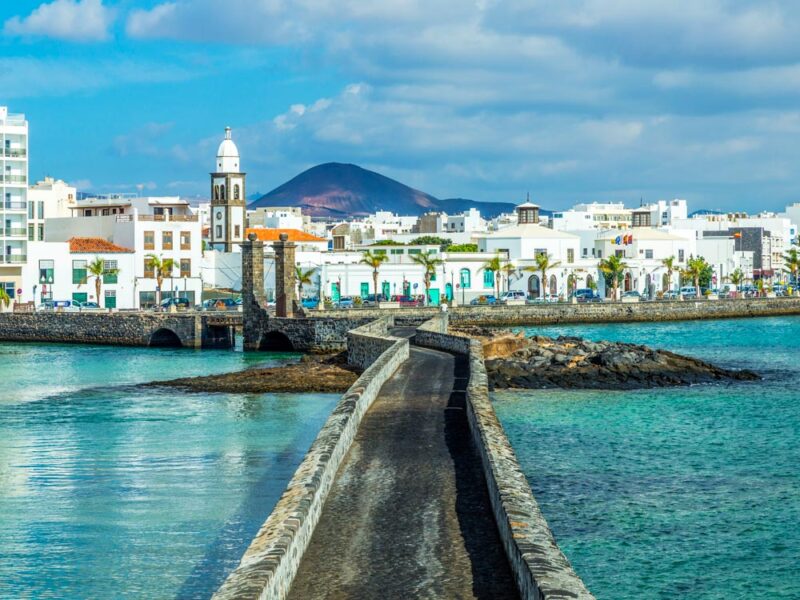
Depending on where you’re traveling from, you may find it a little tricky to get to the Canary Islands. We recommend you fly to Tenerife South Airport because this airport has the most connections to the rest of Europe. If you’re planning a big European trip, try to end up in Barcelona or Madrid before visiting the Canary Islands. You’ll find it easy to fly between the islands and these two cities.
There are no ridesharing companies in the Canary Islands, and taxis can be pricey. Public transport (buses and trams) are an option, but they can often be very infrequent and unreliable.
Because of this, we recommend flying into your starting airport and renting a car. Gas is very affordable in the Canary Islands compared to a lot of other places in the world. There are also very low-cost ferry routes that go between many of the islands several times each day.
Renting a car and moving between the islands via ferry allows you to be flexible with your schedule and carry all your stuff without worrying about paying extra for baggage.
Canary Islands Itinerary: 2 Weeks to Explore the Highlights
Tenerife north – 2 nights.
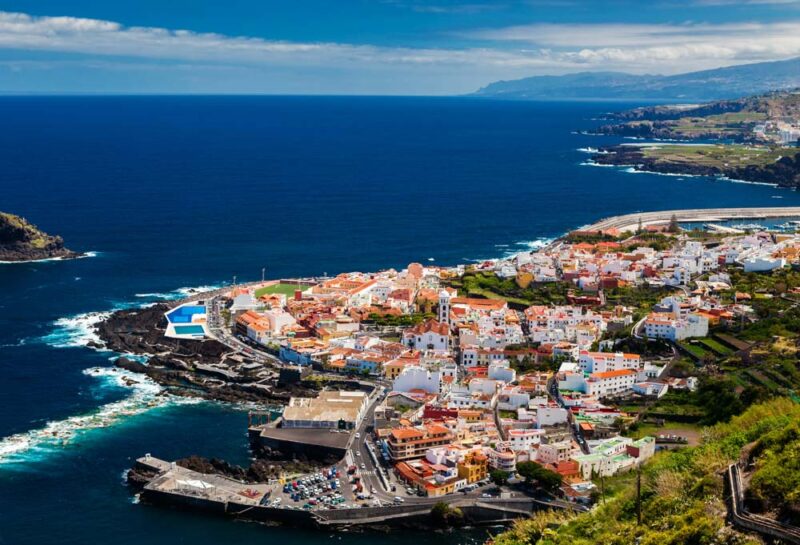
The north of Tenerife is the first stop on your Canary Islands itinerary. This part of the island is blanketed in lush greenery, dotted with hidden villages, and home to some of the most spectacular volcanic beaches you’ll ever see if your life.
Things to do in Tenerife North
Mount teide.

Start your 2-week trip to the Canary Islands with a visit to Mount Teide. The highest peak in Spain, this impressive volcano and the surrounding landscape look like something you’d find on an alien planet, not a subtropical island.
Guachinches

The north of Tenerife is where you’ll find “guachinches.” These are small Canarian restaurants that dish up great local food for less than the loose change in your pocket. We suggest checking out Guachinche Como En Casa .
Loro Parque

Loro Parque is, without a doubt, one of the top places to visit in the Canary Islands for animal and plant lovers. Or, for something a little less touristic, go hiking in the Anaga Mountains. This is one of the most stunning parts of the island, with trails ranging from 30 minutes up to 8+ hours.
Getting To Tenerife North
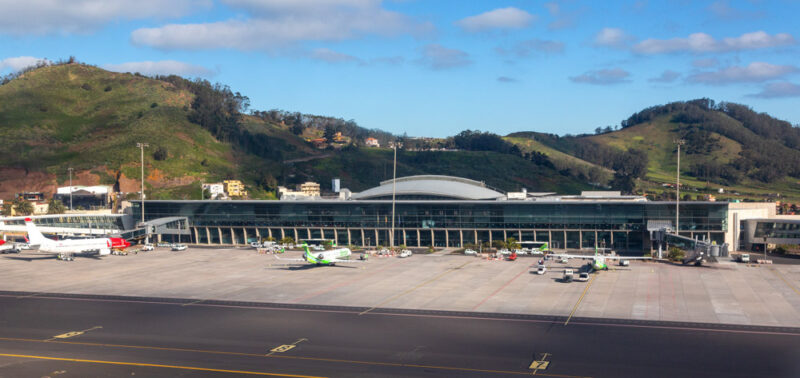
The easiest way to get to Tenerife North is to fly into Tenerife Norte-Ciudad de La Laguna Airport from mainland Spain or one of the other Canary Islands. There are cheap flights leaving from Barcelona and Madrid several times each day.
After you arrive in Tenerife North, we recommend you rent a car. Car rentals and gas are incredibly affordable in the Canary Islands. Driving yourself is the cheapest, quickest, and most convenient way to get around.
Where to stay in Tenerife North
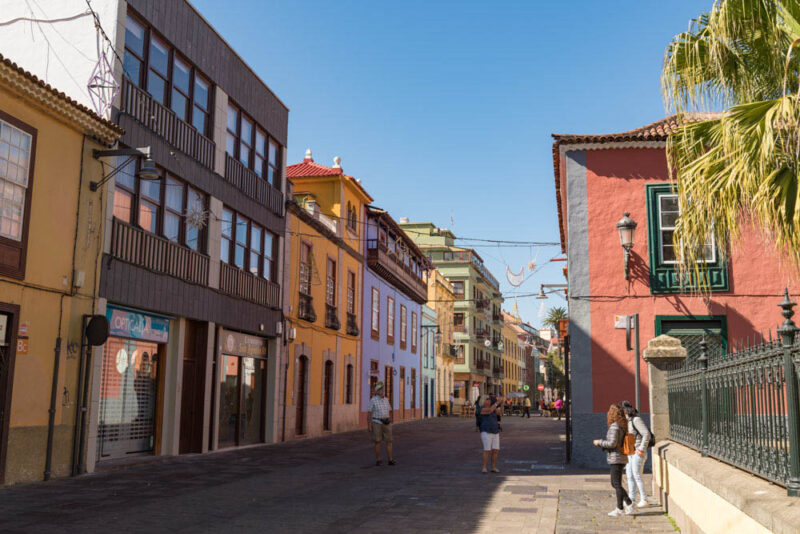
If you’re craving a bit of urban life, consider staying in Santa Cruz. This is the island’s capital city and is the liveliest place in the north of the island. The biggest vacation resort town in Tenerife North is Puerto de la Cruz. Here you’ll find loads of great hotels and attractions with a more laid-back vibe than the resorts in Tenerife South.
For a unique experience, stay in La Laguna. A UNESCO World Heritage Site, La Laguna is full of stunning buildings and beautiful parks with a distinctly local, Canarian feel.
Tenerife South – 2 nights
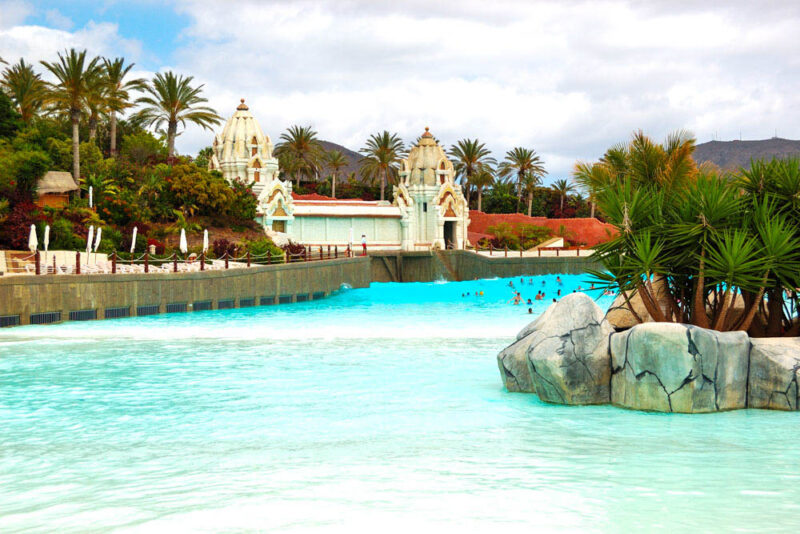
The most popular vacation destination in all the islands, the south of Tenerife boasts luxury resorts, dazzling beaches, and world-class attractions. Because the island is so compact, you can easily visit rural Canarian villages, mystical forests, and breathtaking viewpoints after just a short drive.
Things to do in Tenerife South
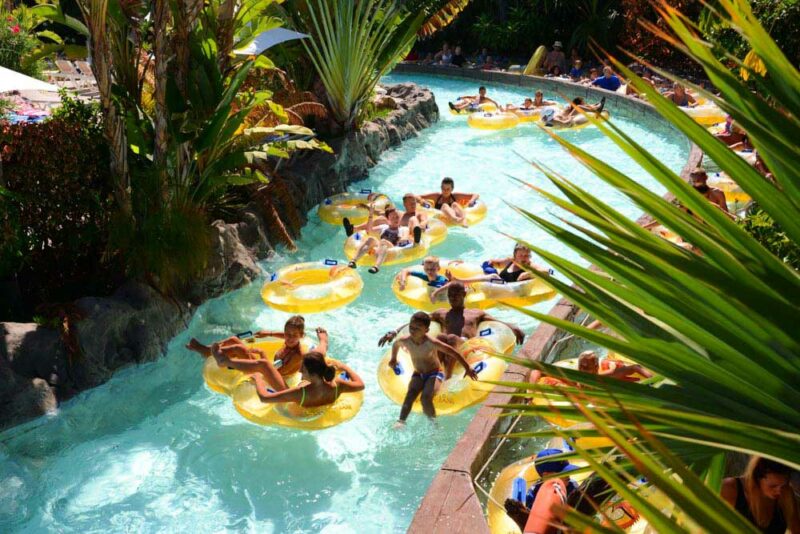
Tenerife South is home to so many of the best Canary Islands attractions that you’ll be exhausted after the end of your second leg! Siam Park , voted the best water park in the world for more than seven years running, is an absolute must-visit. If high-speed watercoasters aren’t your thing, there are plenty of beaches where you can enjoy a chilled-out day in the sun. Playa del Duque is one of the best.
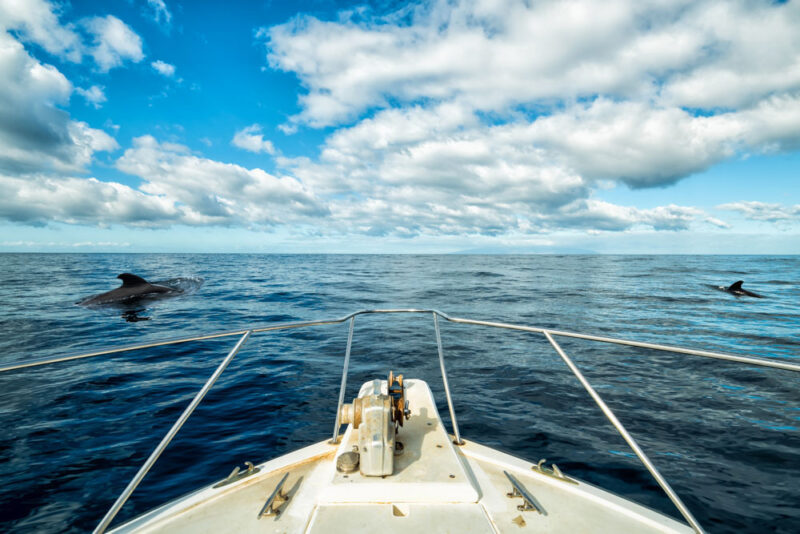
Tenerife is an amazing place for wildlife, so hop on an eco-friendly boat tour and go searching for whales and dolphins. When you need time to unwind, head to the bohemian surfer resort town of El Medano and barhop while enjoying the gorgeous views.
Getting To Tenerife South
The easiest way to get from Tenerife North to Tenerife South is to simply drive there. If you decide against renting a car, hop on the bus. While a taxi is convenient, the trip will be very expensive.
Where to stay in Tenerife South
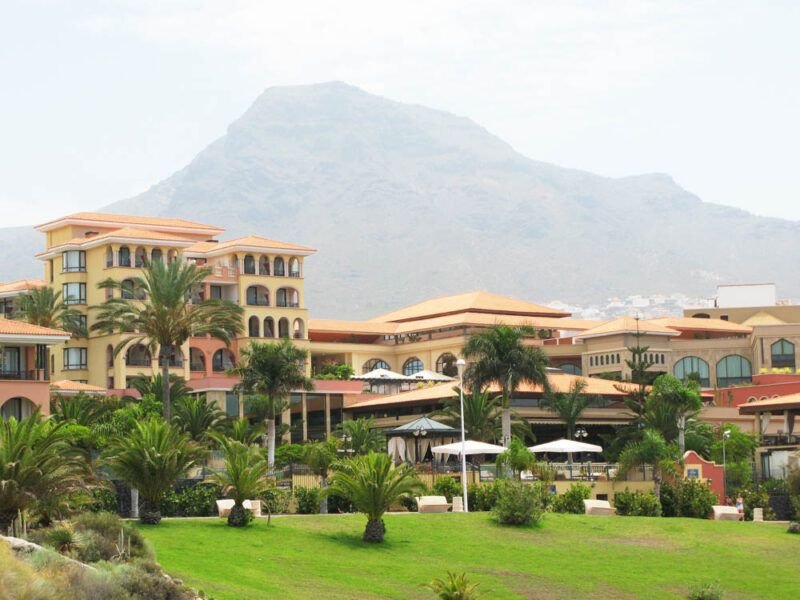
As Tenerife South is mostly a purpose-built vacation resort, there are plenty of fantastic places to stay. Costa Adeje is in the center of the region and boasts countless hotels, cafes, bars, restaurants, and stores. For something a little more laid-back, we suggest the older and more peaceful area of Los Cristianos.
If you want to get away from the tourist areas, consider staying in La Tejita. This neighborhood has a very local vibe and is home to the largest natural beach in Tenerife.
La Gomera – 2 nights
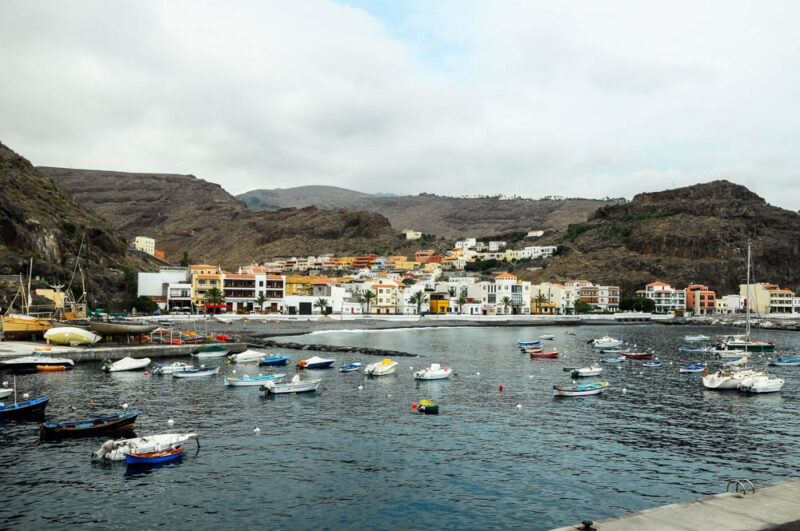
One of the smallest Canary Islands, La Gomera feels like a place that time forgot. This clandestine island is one of the best places in the Canary Islands, home to a never-ending number of hiking trails and viewpoints. Very few people speak English here, so brush up on your Spanish before you go!
Things to do in La Gomera
Garajonay national park.
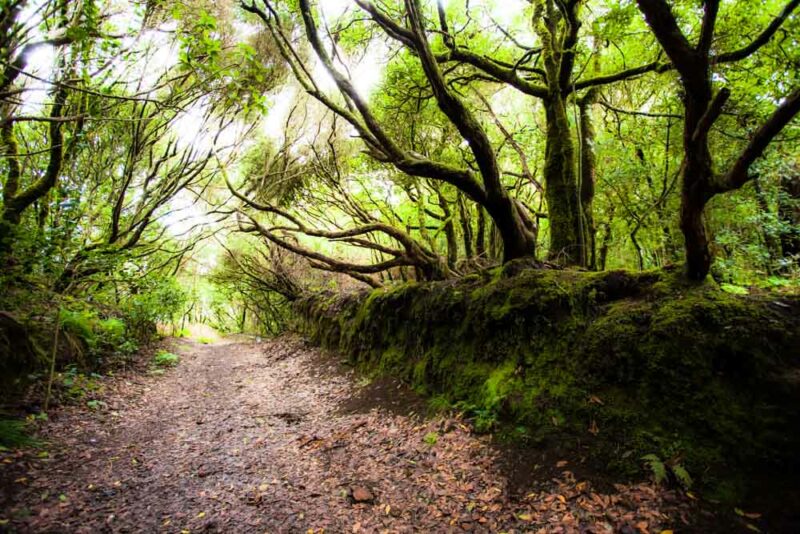
The best 2-week Canary Islands itinerary has to include hiking in La Gomera. The island is blanketed in thick, verdant forests that hide trickling waterfalls, centuries-old bridges, and fountains that boast some of the purest water you’ll ever drink. Whether or not you plan on hiking, the Garajonay National Park is a magical place to visit, with a labyrinth of trails, picnic and BBQ areas, and a visitors center.
Abrante Viewpoint
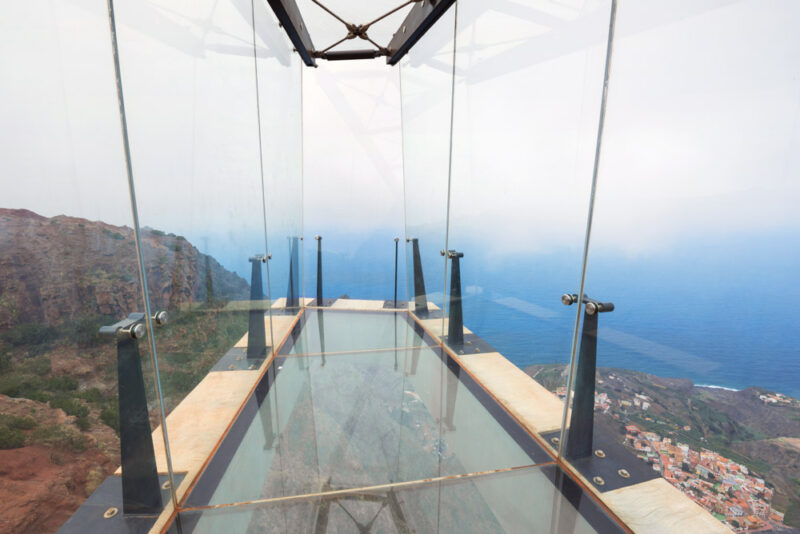
For an awesome view, visit Abrante Viewpoint. Here you’ll find a glass platform you can step out onto and gaze 1,300 feet below you, across the ocean and all the way to Tenerife. To get a little closer to the ocean, spend a lazy day at the volcanic beach at Valle Gran Rey.
Getting to La Gomera
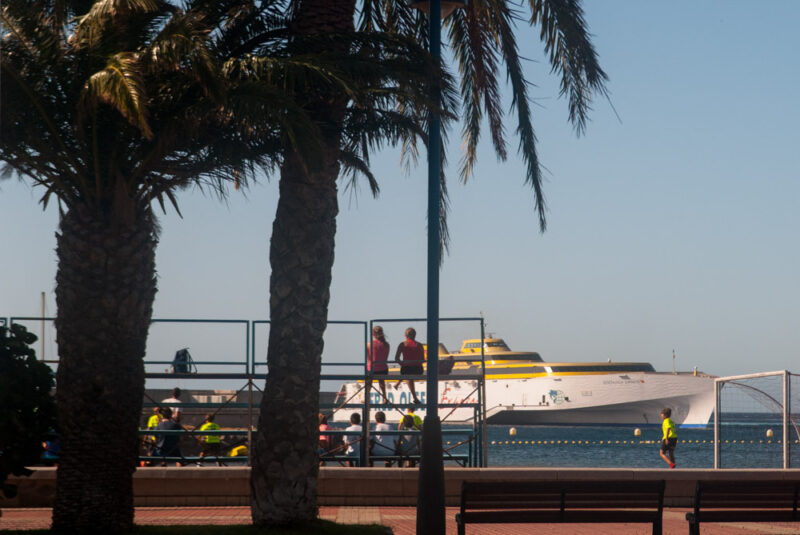
If you’ve decided to rent a car, you can reach La Gomera from Tenerife South via ferry. Fred Olsen is the fastest and cheapest ferry service, with several connections every day between Los Cristianos in Tenerife South and San Sebastian in La Gomera.
If you’re using public transport, you can fly from Tenerife South Airport to La Gomera Airport with Binter. The flight goes via Gran Canaria. So even if you don’t have a car, we still recommend you travel via ferry for a speedier journey.
Where to stay in La Gomera
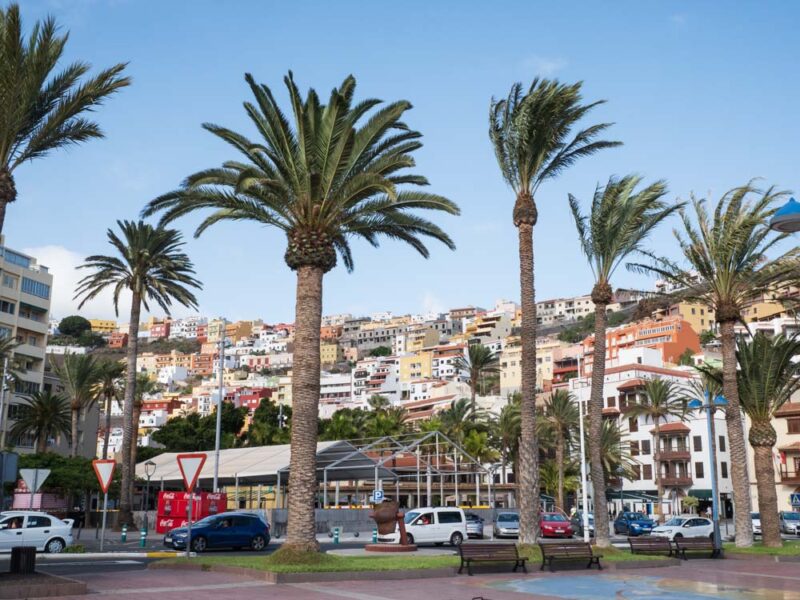
San Sebastian is the main city in La Gomera. Here you’ll find a decent selection of bars, cafes, and restaurants, which are all within walking distance. Valley Gran Rey is the biggest vacation resort on the island, although it has a much more serene and local vibe than anything you will have experienced in Tenerife.
La Palma – 2 nights
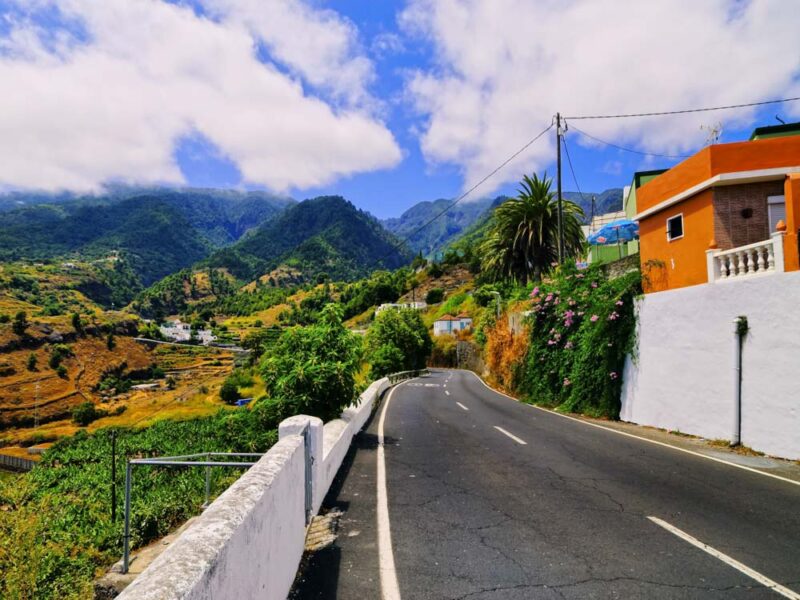
La Palma is where you’ll find some of the most stunning places to see in the Canary Islands. Fondly nicknamed “La Isla Bonita” (the Beautiful Island), La Palma is filled with misty forests, dramatic volcanoes, and a spectacular coastline.
The island was recently devastated by a volcanic eruption that lasted months. Although everything has settled down now and it’s completely safe to visit today, you can still see the remarkable aftermath of the natural destruction.
Things to do in La Palma
Start your La Palma adventure by hopping in your car and heading for one of the best places to go in the Canary Islands. The volcano that erupted (Cumbre Vieja) is located in the southern center of the island. Drive anywhere in this area, and you’ll be surrounded by giant mounds of ash the volcano left behind.
Salinas de Fuencaliente
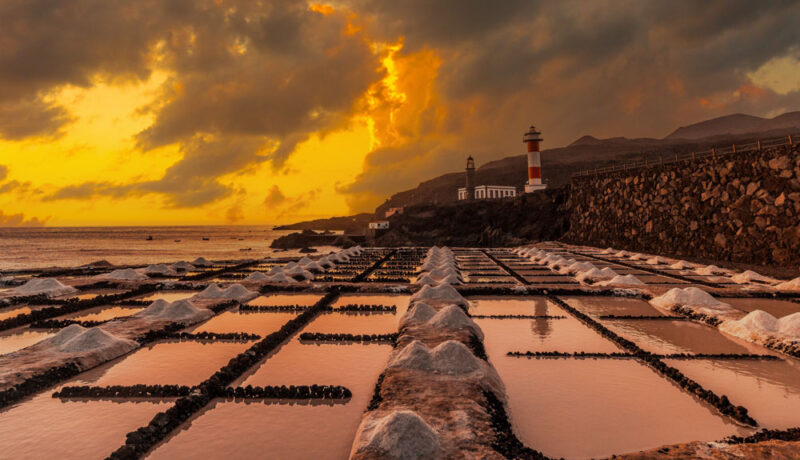
When you need a breath of fresh air, head to the coastline and visit Salinas de Fuencaliente . This fascinating place shows you how salt is harvested from the sea and used to make all kinds of wonderful products. If you’d prefer something a little sweeter, visit Quesería Luna de Awara and Bodegas Carballo for some cheese and wine tasting.
Roque de Los Muchachos

La Palma is one of the best places in the world for stargazing. End your visit to the island with a guided tour to Roque de Los Muchachos , where you’ll learn about everything in the night sky.
Getting to La Palma
You can reach La Palma from La Gomera by taking the Fred Olsen or Naviera Armas ferry. Both ferry lines operate between San Sebastian in La Gomera and Santa Cruz in La Palma. Alternatively, you can fly with Binter between La Gomera Airport and La Palma Airport.
Where to stay in La Palma
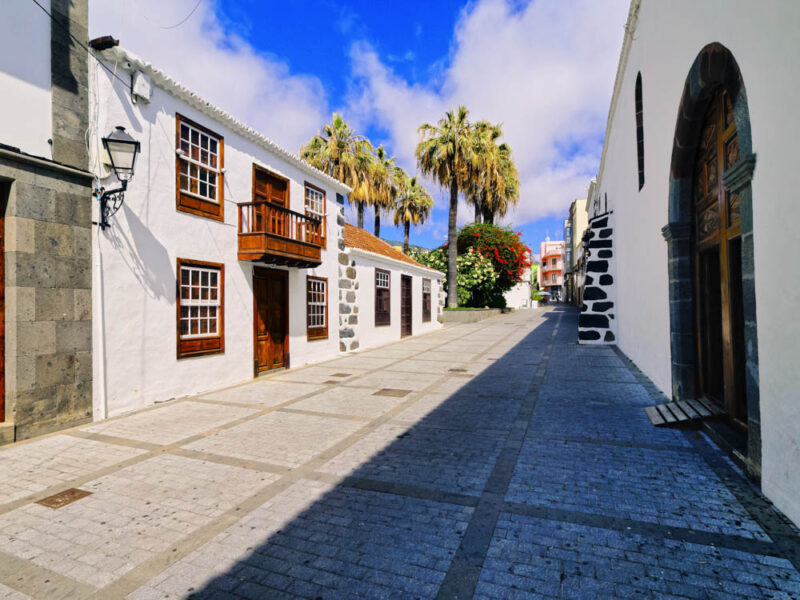
Llanos de Aridane is the most built-up part of La Palma, with the most cafes, restaurants, bars, boutiques, and stores. It’s very central, and staying here makes it easy to travel anywhere on the island. If you want to chill out somewhere and enjoy plenty of beach time, Tazacorte is the place for you. This small coastal village has black sandy bays and one stunning upmarket hotel.
Gran Canaria – 2 nights
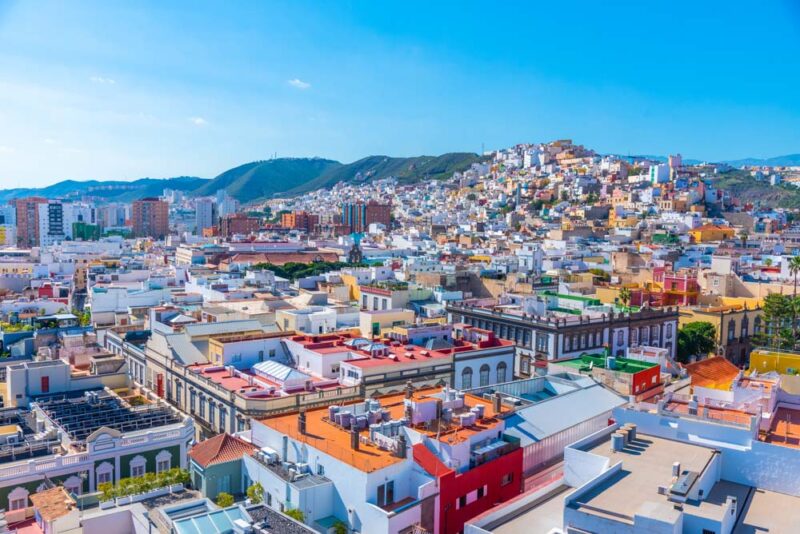
Part desert and part tropical paradise, Gran Canaria is where you’ll find some of the best places to visit in the Canary Islands. The second most popular of the Canaries, after Tenerife, Gran Canaria has it all. From wild, rugged landscapes and beaches that stretch on for miles to amazing family attractions and stunning coastal villages, you’ll have a great time here.
Things to do in Gran Canaria
Maspalomas dunes.
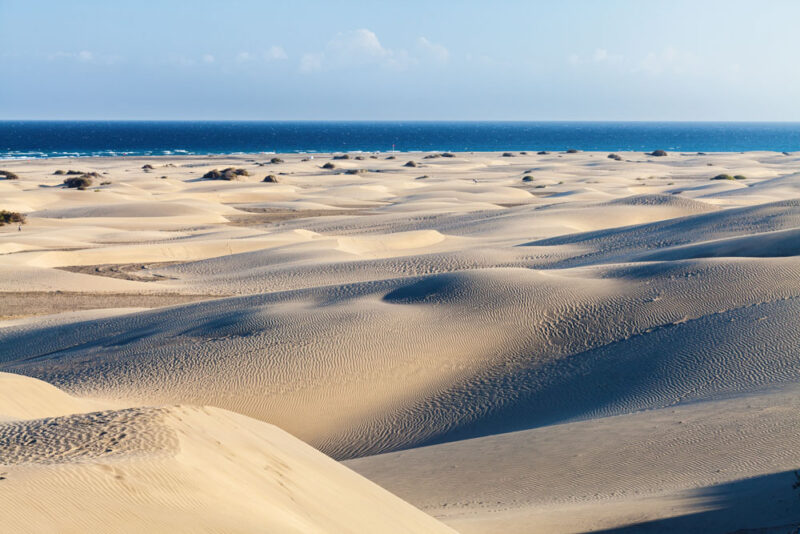
Start off the Gran Canaria leg of your journey with one of the best things to do in the Canary islands – the Maspalomas Dunes. Located in the south of the island, these undulating mountains of sand will transport you to a remote desert in an instant. For something a little less dry and arid, check out Poema del Mar . This amazing aquarium is packed with enough exhibits to keep you entertained for hours.
Poema del Mar
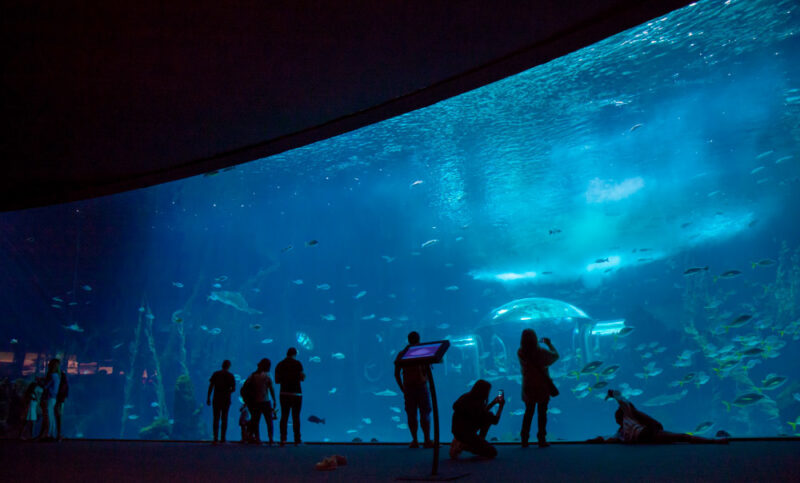
Whether you’re in the mood to explore or relax, Las Canteras Beach is a great place to visit. Here you can lounge under the sun on the soft golden sand or take a walk along the promenade that stretches on for 2 miles.
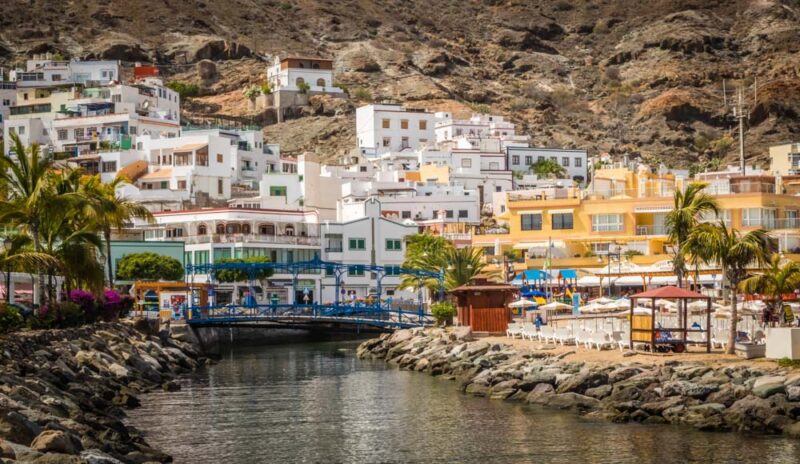
If you’ve got time, check out the resort town of Mogan. With gorgeous bougainvillea, rippling canals, and cute bridges, this place is as close as you can get to Venice without leaving the Canary Islands.
Getting to Gran Canaria
To get to Gran Canaria from La Palma, simply hop on the ferry at Santa Cruz. In a few hours, you’ll arrive at the Port of Las Palmas in Gran Canaria. A quicker option is to fly from La Palma Airport in La Palma to Las Palmas Airport in Gran Canaria.
Try not to get confused with the similar names! This journey takes less than one hour, although you’ll have to drop off your rental car in La Palma and pick another one up in Gran Canaria.
Where to stay in Gran Canaria
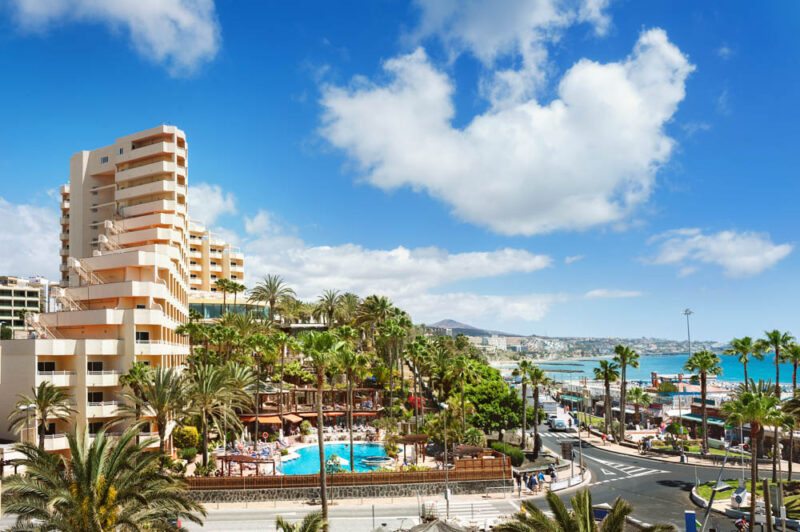
If you’re seeking a lively vibe with plenty of bars, restaurants, and nightclubs, plan to stay in Maspalomas or Playa del Ingles. You’ll find loads of evening entertainment here, as well as gorgeous hotels and dazzling beaches. For something a bit more peaceful, we suggest Puerto de Mogan, San Agustin, or Puerto Rico.
While there are still plenty of dining options and beaches at these resorts, they’re slightly more upmarket and peaceful. Check out our picks for the best hotels in Gran Canaria .
Fuerteventura – 2 nights
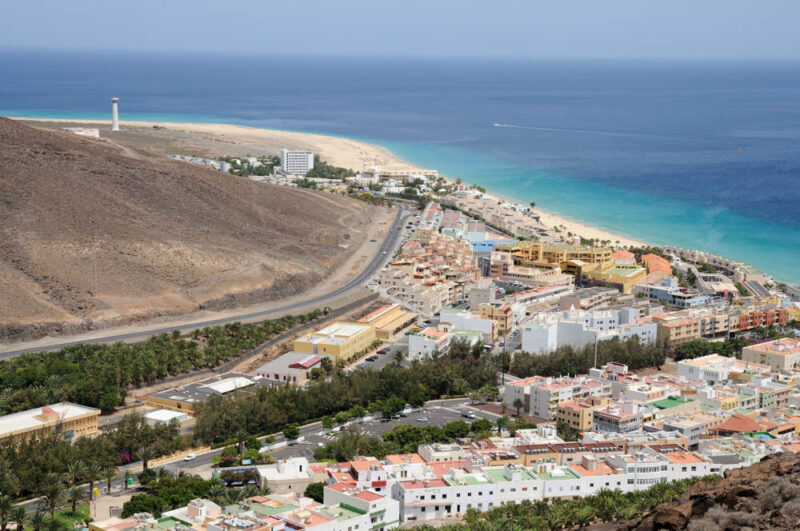
Not as developed as Tenerife and not as primitive as La Gomera, Fuerteventura is figuratively nestled comfortably in the middle of the two. While the island is home to some of the best cities to visit in the Canary Islands, Fuerteventura is best known for its dramatic sand dunes, rugged coastline, and spectacular conditions for all kinds of watersports. It’s a wonderful place to visit if you want to surround yourself with nature while still being just a short walk away from civilization.
Things to do in Fuerteventura
Caleta de fuste.
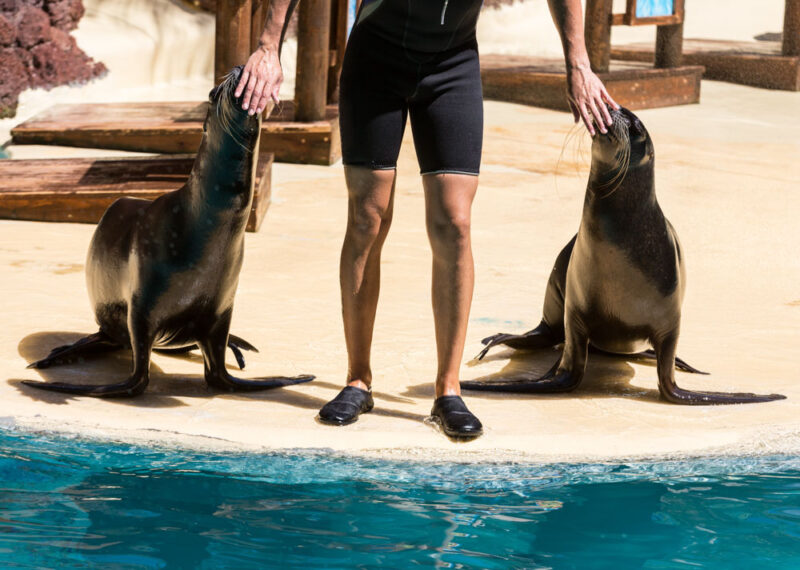
For an experience you’ll never forget, head to Caleta de Fuste and go swimming with sea lions. The port in this resort is home to three friendly sea lions who love showing off their skills and playing with visitors. For more animal antics, dry off and take a gentle stroll along the coastline. Keep a look out, and you’ll spot countless cute chipmunks hiding and playing among the rocks!
Corralejo Natural Park
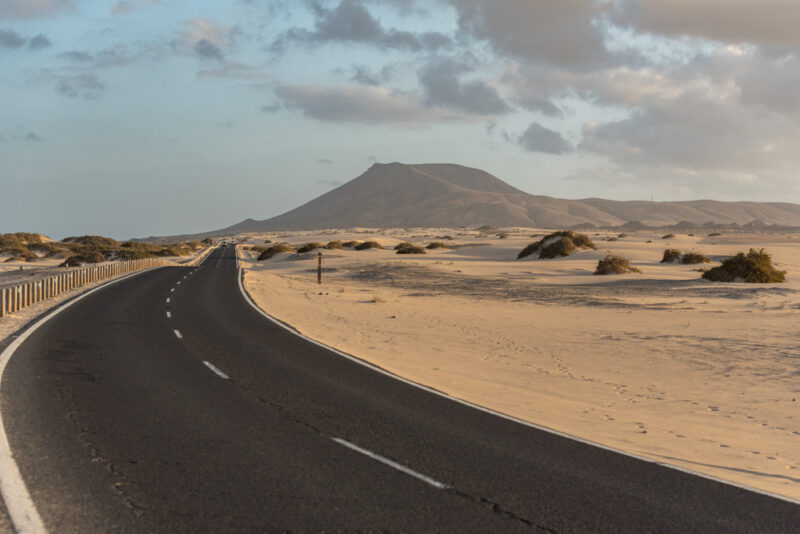
The must-visit attraction in Fuerteventura is the Corralejo Natural Park. With giant golden sand dunes that stretch into the sky, this part of the island is an excellent place to snap some amazing photos.
Majorero Cheese

When you need a break from all the sightseeing, visit one of the island’s many cheese museums. Fuerteventura is famous for its delicious Majorero cheese, which is something you’ve absolutely got to try.
Getting to Fuerteventura
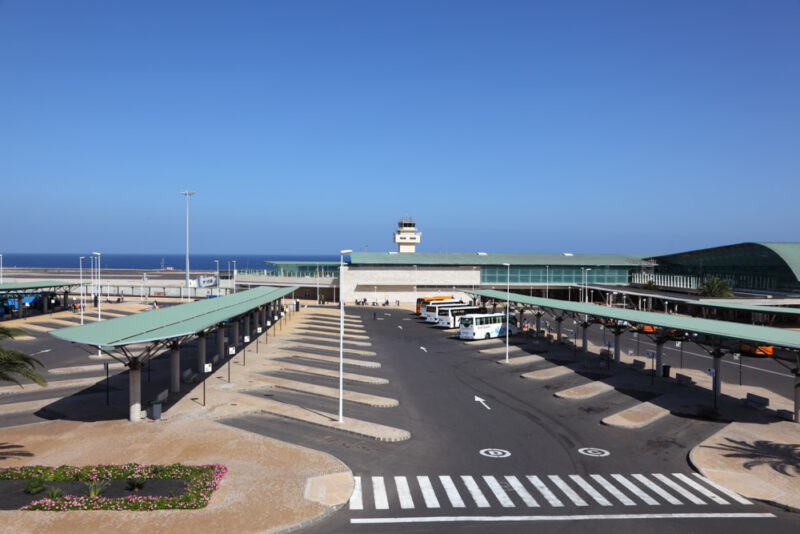
Getting from Gran Canaria to Fuerteventura is easy if you’ve got a rental car. Simply drive to the Port of Las Palmas and hop on a Fred Olsen or Naviera Armas ferry. In just a couple of hours, you’ll arrive at Puerto del Rosario in Fuerteventura.
If you want to avoid the ferry, you can also fly between the islands. There are several cheap flights every day connecting Las Palmas Airport in Gran Canaria with Fuerteventura Airport (also known as El Matorral Airport).
Where to stay in Fuerteventura
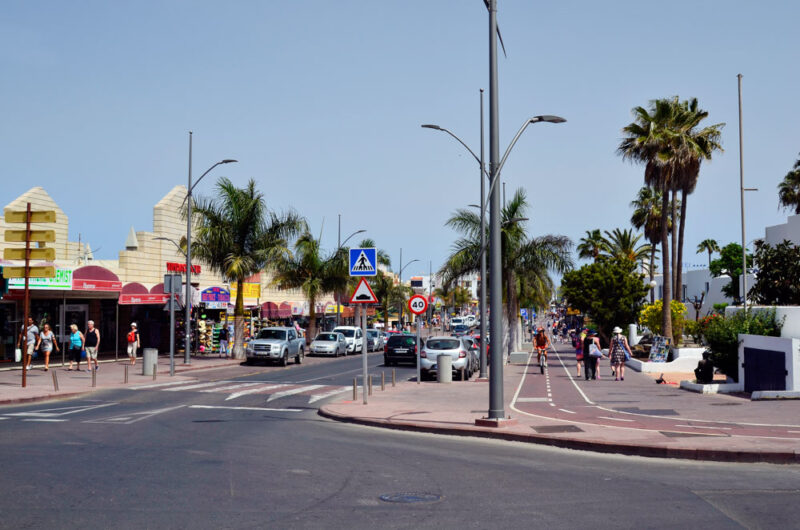
Corralejo is the liveliest place to stay in Fuerteventura. This part of the island is home to luxury hotels and small boutique inns, as well as great beaches, cool cocktail lounges, and trendy restaurants.
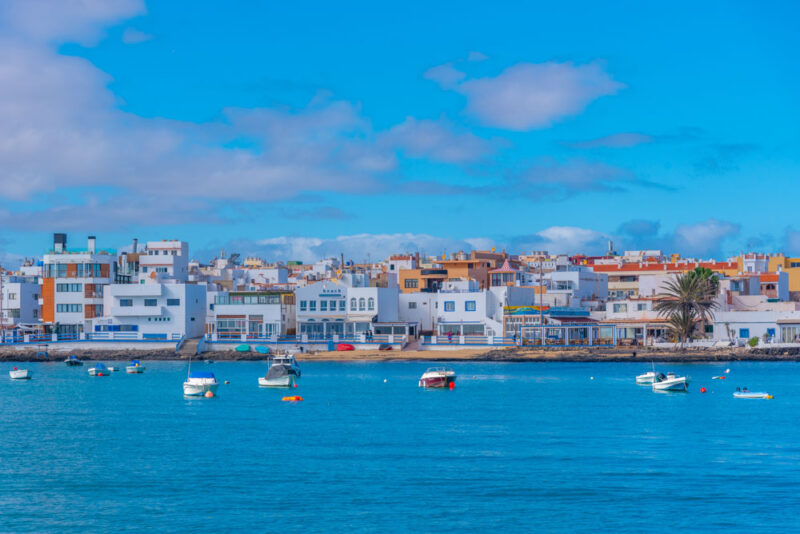
For something a bit more tranquil, consider staying in El Cotillo or Caleta de Fuste. These peaceful resort towns boast gorgeous beaches and natural volcanic swimming pools, as well as a good number of fish and seafood restaurants. Check out our picks for the best hotels in Fuerteventura.
Lanzarote – 2 nights
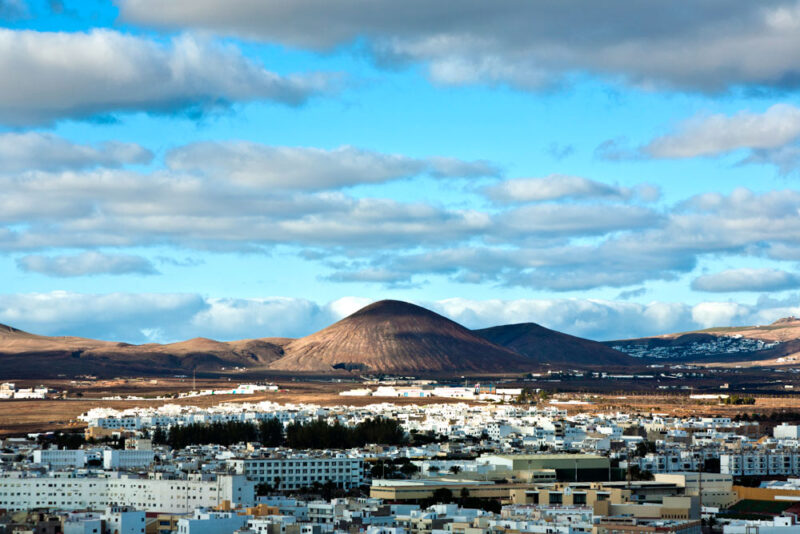
Last up on your Canary Islands itinerary is Lanzarote . This stunning island was formed by a volcanic eruption 180 million years ago and, as a result, has a spectacular landscape full of surprises. The coastline is dotted with luxury vacation resorts and gorgeous beaches, while inland, you’ll find incredible volcanic scenery and some of the most beautiful cities in the Canary Islands.
Things to do in Lanzarote
Timanfaya national park.
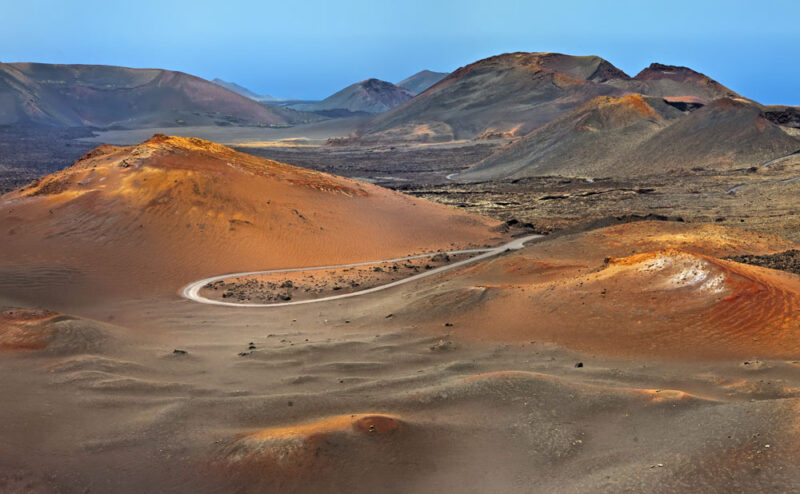
If you only do one thing in Lanzarote, you’ve got to visit the Timanfaya National Park. Here you can surround yourself with a phenomenal alien-like landscape created over millions of years. You can also stop by El Diablo restaurant and have your food cooked using the heat of a volcano!
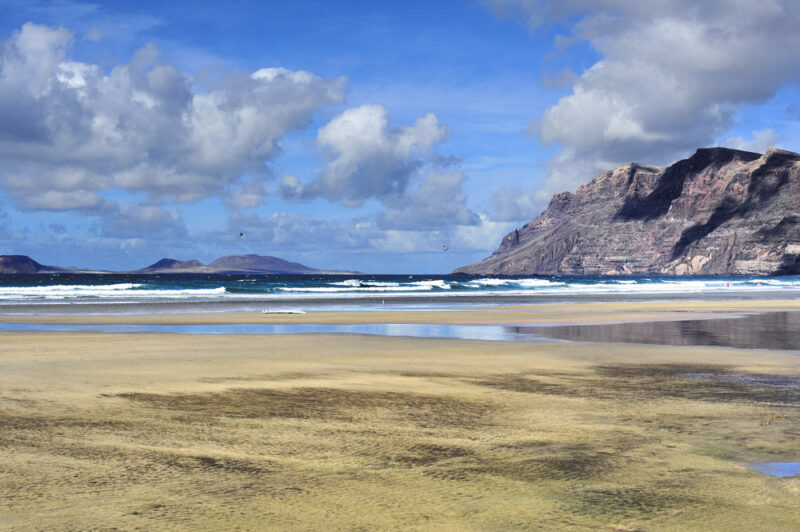
When you’ve had enough of mountains and volcanoes, head to the coast. If you want to stay on top of the ocean, try your hand at surfing in Famara. If you’d rather get underwater, go diving and discover the very first underwater museum in Europe .
Jardín de Cactus
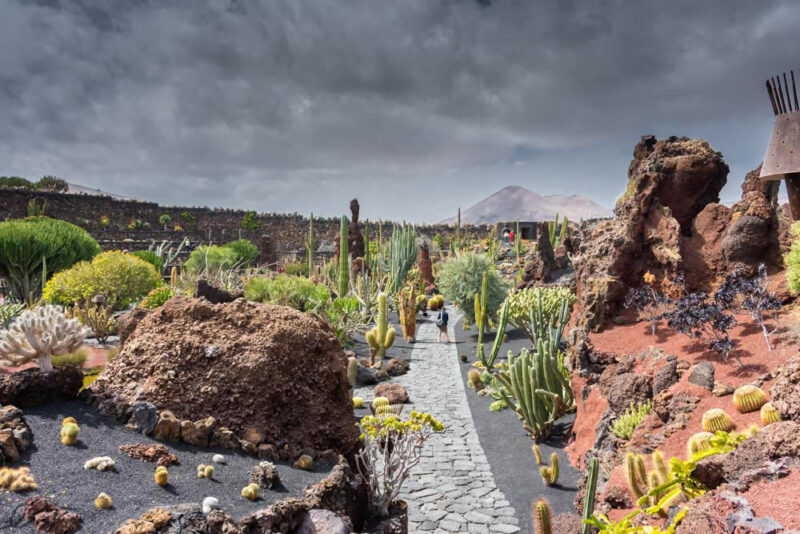
Not a fan of water? Stay on dry land and discover thousands of plant species at the Jardín de Cactus. Or visit the César Manrique Foundation and check out the amazing house where the famous local artist used to live.
Getting to Lanzarote
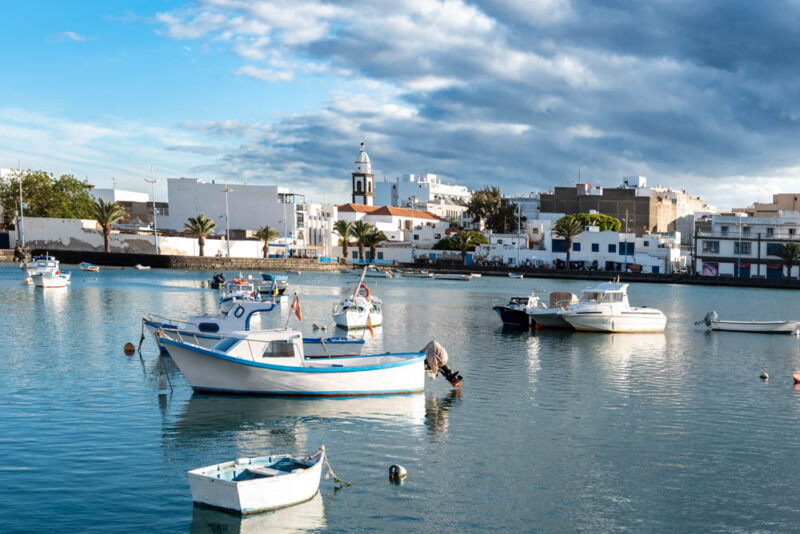
The final leg of your journey is just as simple as the others. Fuerteventura and Lanzarote are extremely close. Hop on a Fred Olsen or Naviera Armas ferry in Puerto del Rosario in Fuerteventura, and in 30 minutes, you’ll arrive at Arrecife Port in Lanzarote.
If you’d rather catch a plane, you can fly from Fuerteventura Airport to Lanzarote Airport (César Manrique-Lanzarote Airport). But there are no direct flights – you have to fly via Gran Canaria. Because of this, we definitely recommend catching a ferry. It’s both quicker and cheaper.
Where to stay in Lanzarote
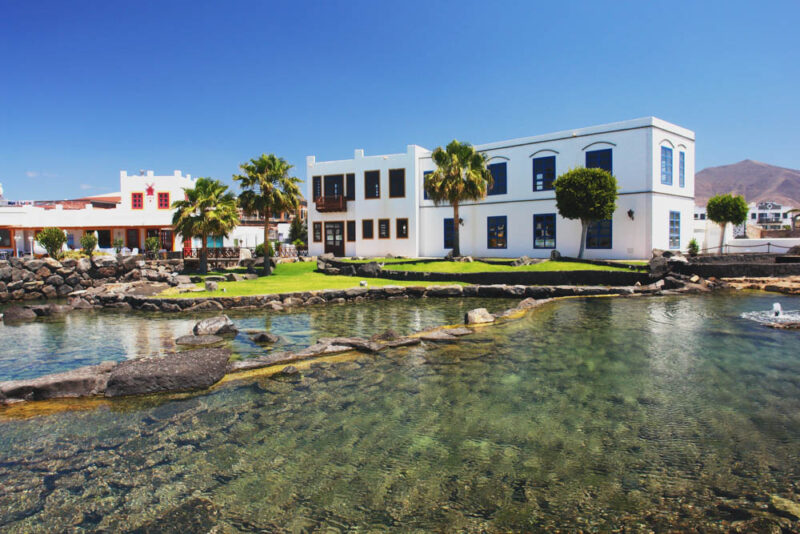
If you’re visiting Lanzarote as a family, Playa Blanca and Costa Teguise are great places to stay. These resort towns are in the middle of all the action, home to great hotels, bars, restaurants, shops, and beaches.
Consider staying in Famara if you’re an avid surfer and you want to catch some waves. This part of the island always has amazing surfing conditions. Or, for a little bit of peace and quiet, consider the laid-back resort of Haria. Check out our picks for the top boutique hotels in Lanzarote !
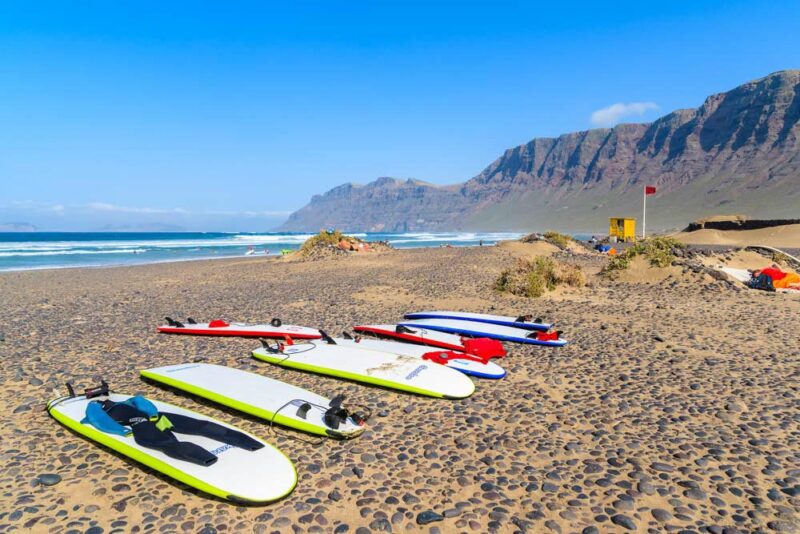
There you have it! That’s our perfect 2-week Canary Islands itinerary. Where will you be traveling on your trip to the Canary Islands?
Share this on pinterest.
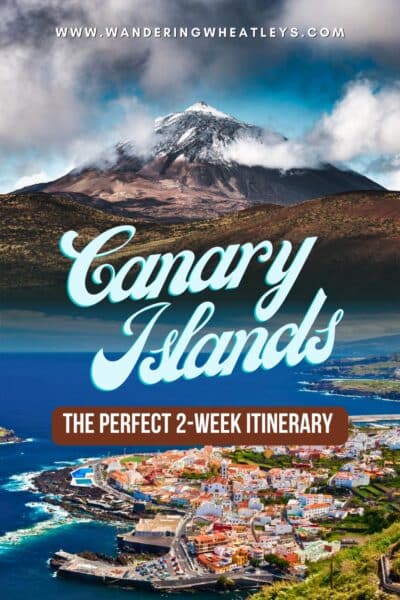
Nicola is a freelance writer with an insatiable hunger for travel. She swapped her home in the UK for the sunny Canary Islands when she was just 11 and she has been based there ever since. From crawling on her hands and knees inside pyramids in Egypt to swimming with baby sharks in Bali and searching (fruitlessly!) for the Northern Lights in Iceland, Nicola takes every chance she gets to explore new places. The incredible experiences she has around the world fuels her writing and inspires her to plan even more adventures for the future.
Related Posts
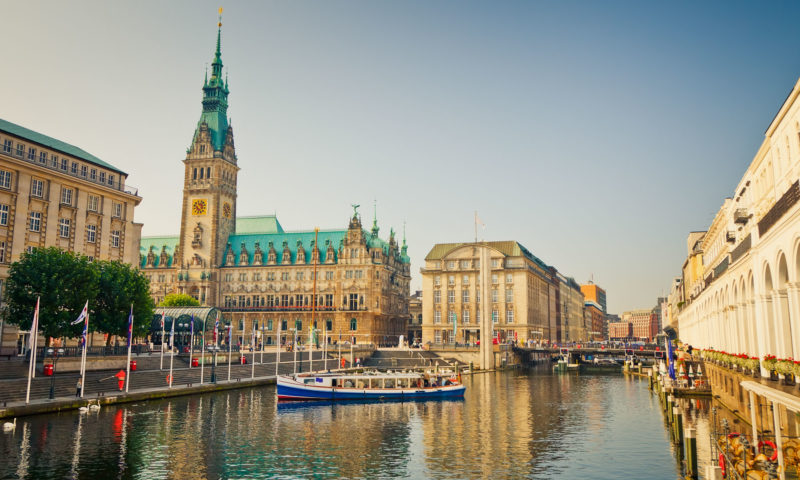
The 12 Best Hotels in Hamburg, Germany
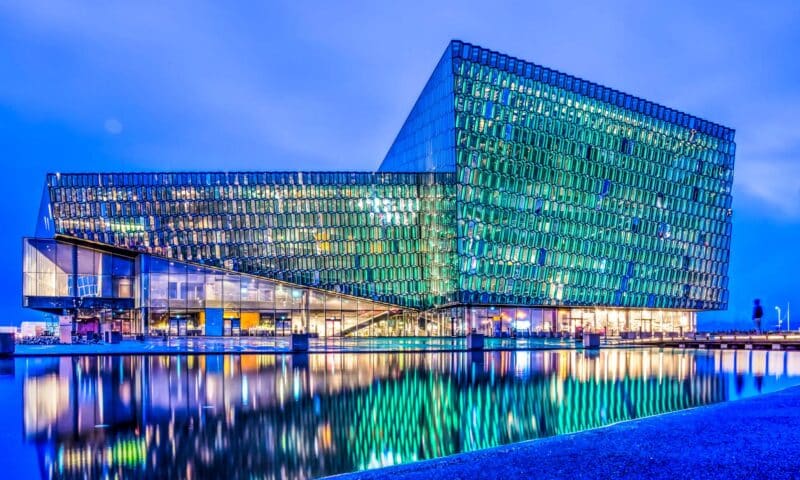
11 Must-Try Restaurants in Reykjavik (An Insider’s Guide!)
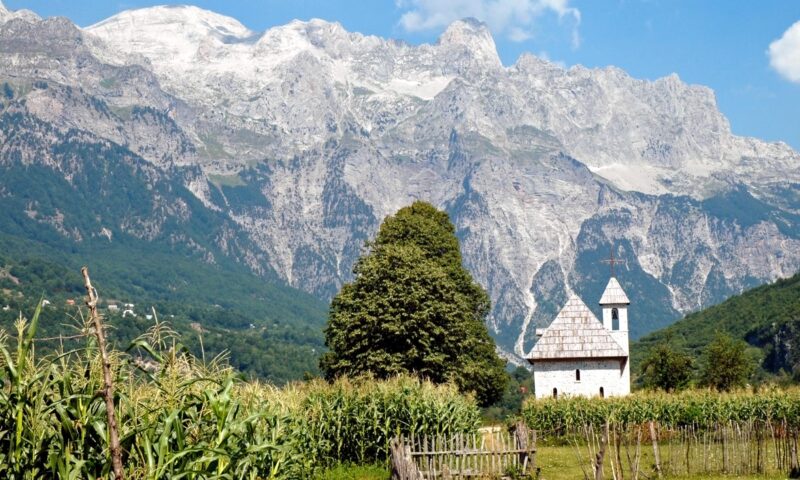
The Perfect 2-Week Albania Itinerary
Leave a comment cancel reply.
Your email address will not be published. Required fields are marked *
Travel Safe
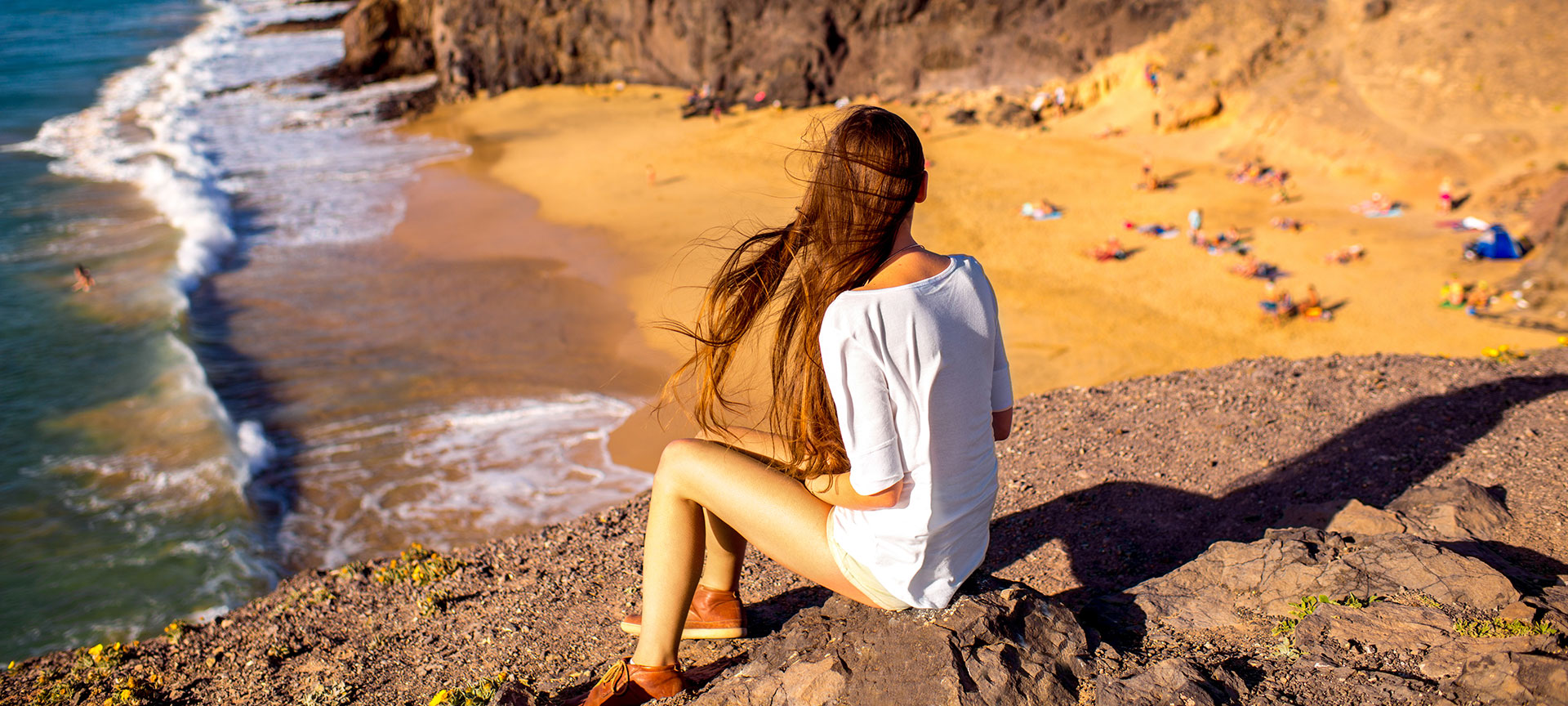
Canary Islands
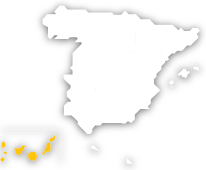
+34 928 290 579
Places not to be missed
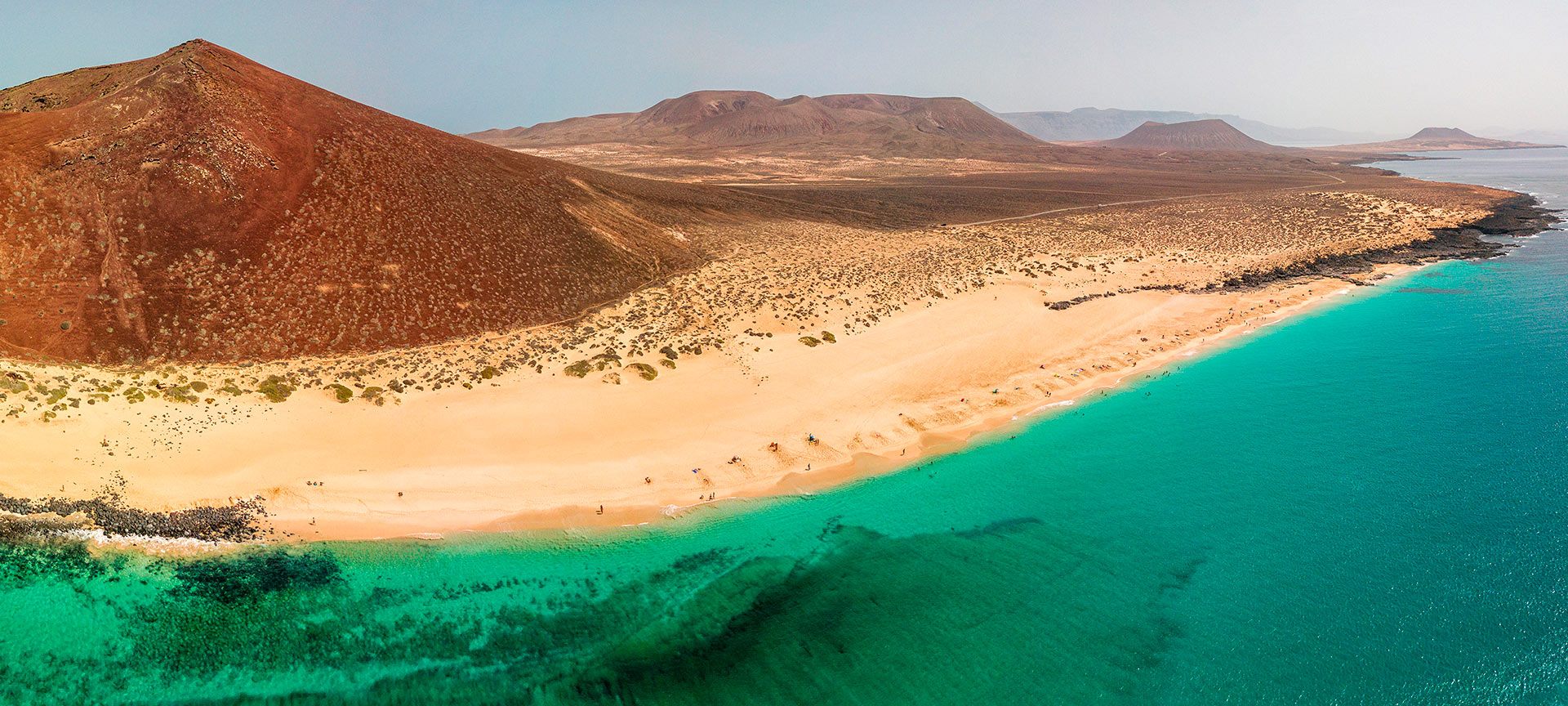
La Graciosa (Island)
The eighth Canary Island is a small, dreamy paradise island, the…
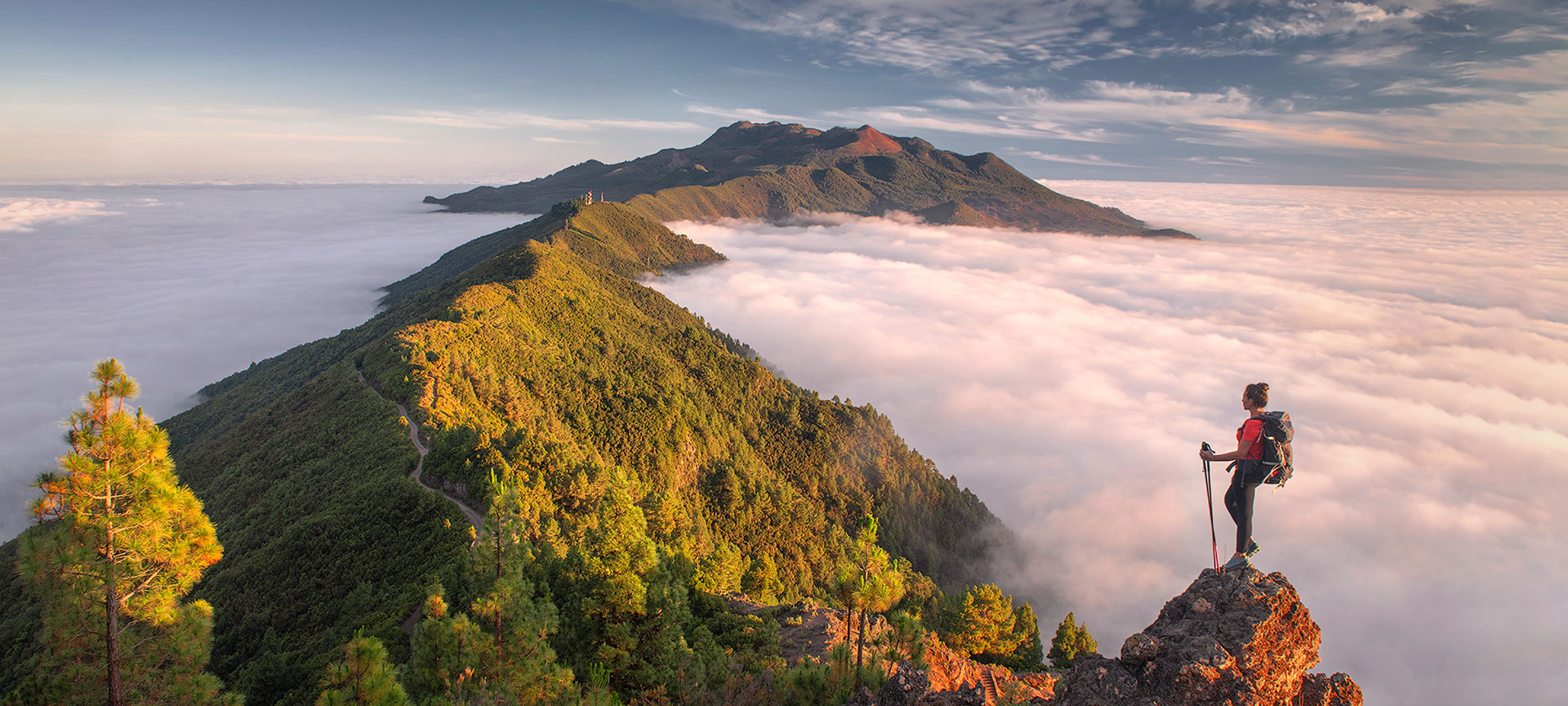
La Palma (Island)
Volcanic sands, bays surrounded by cliffs and exceptional natural…
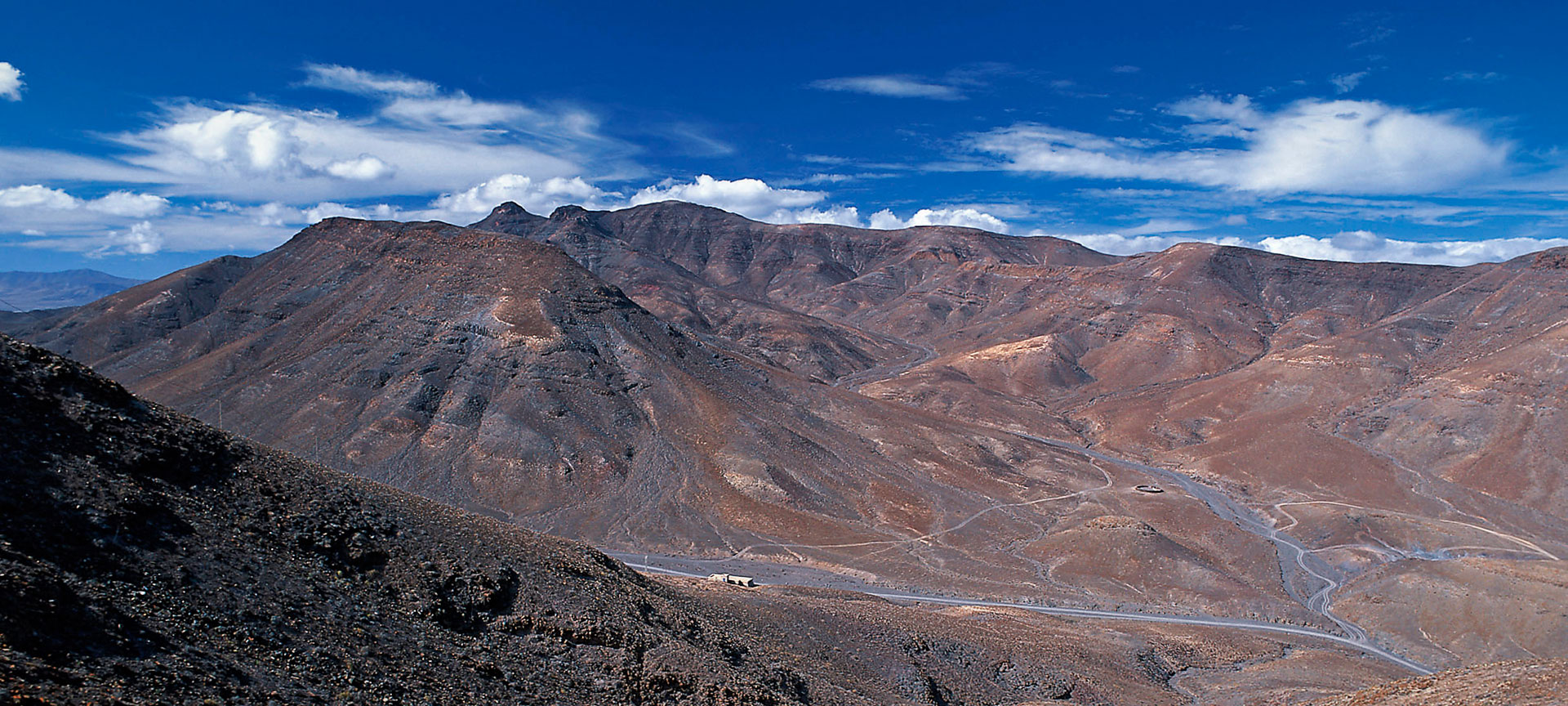
Fuerteventura (Island)
Fuerteventura is in the Canary Islands and measures 210…
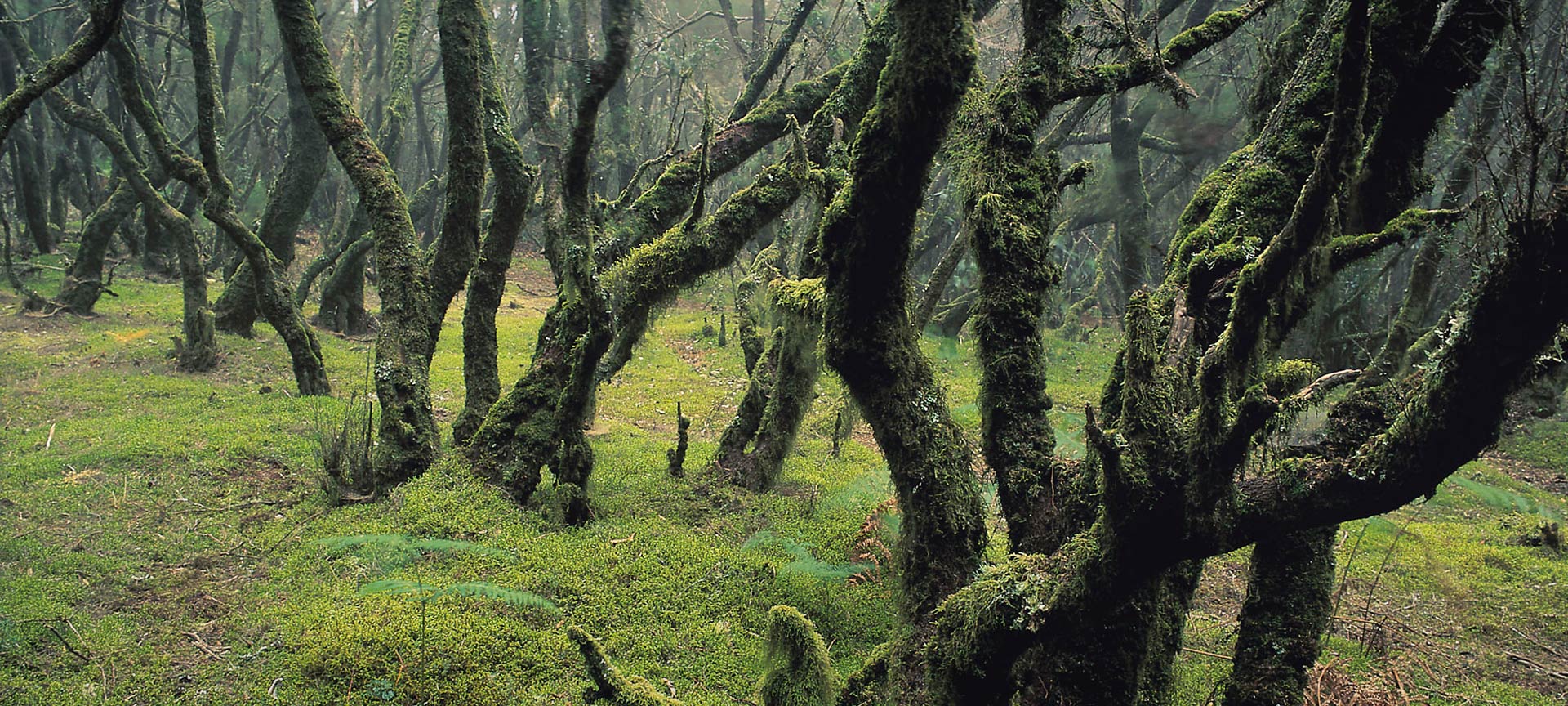
La Gomera(Island)
Peaceful and beautiful.…
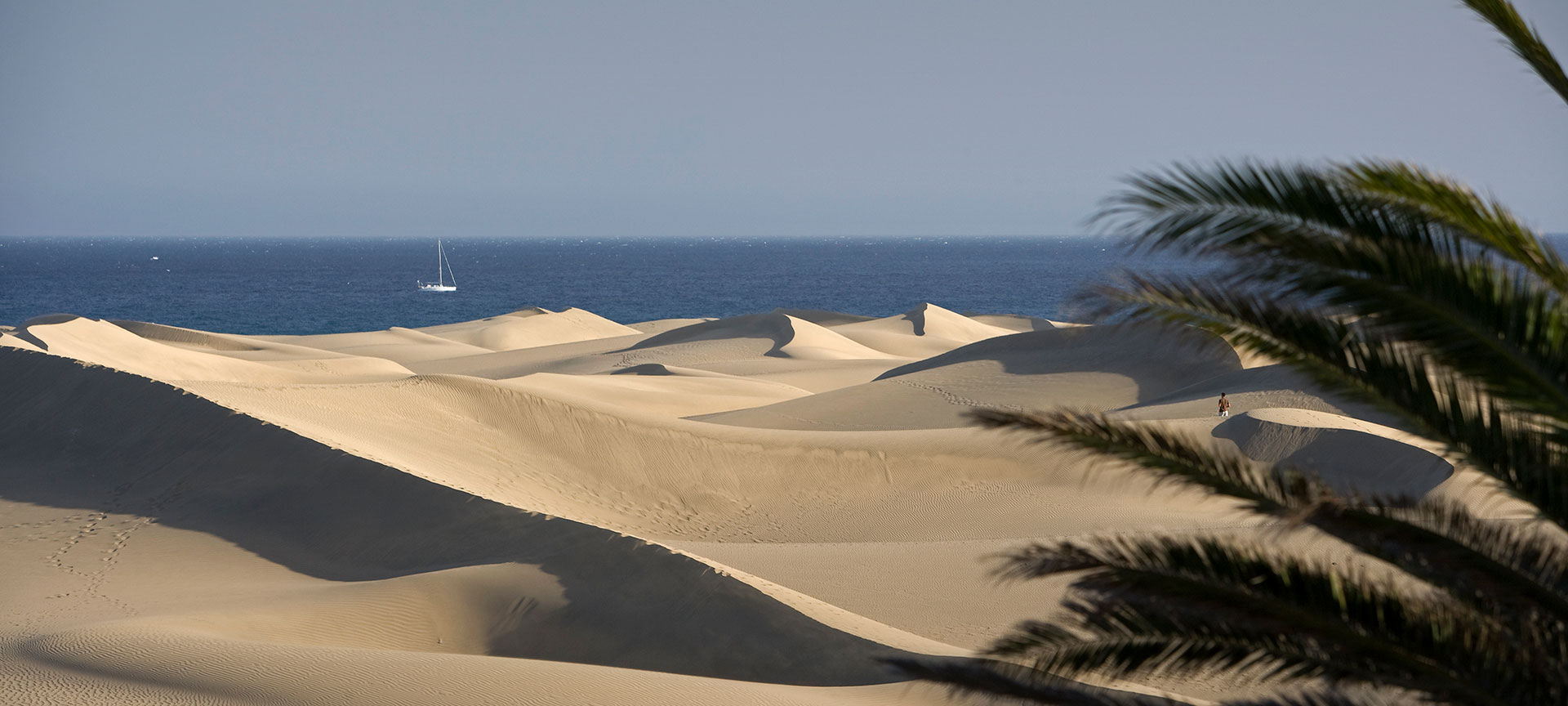
Gran Canaria (Island)
There are many reasons to choose Gran Canaria as your holiday…
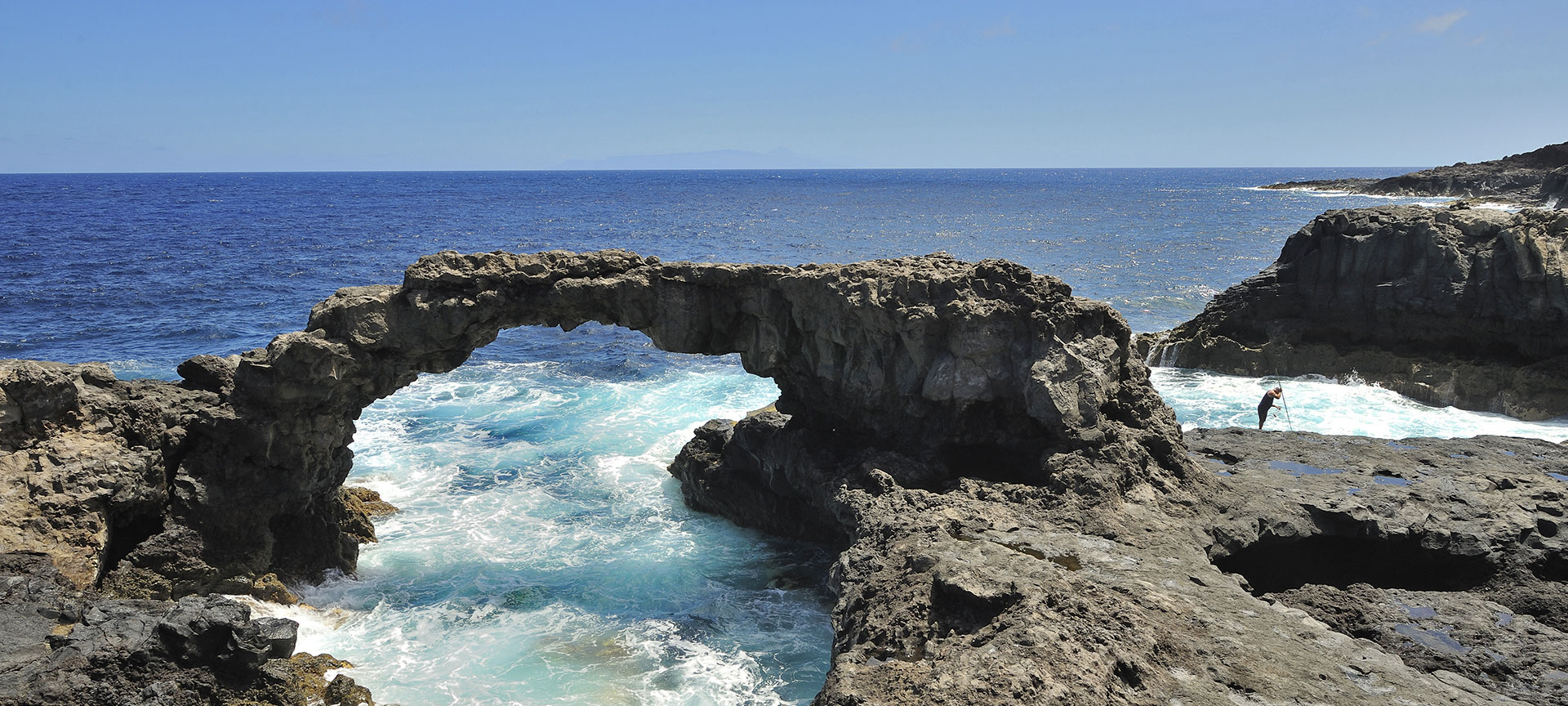
El Hierro (Island)
El Hierro is one of the Canary Islands.…
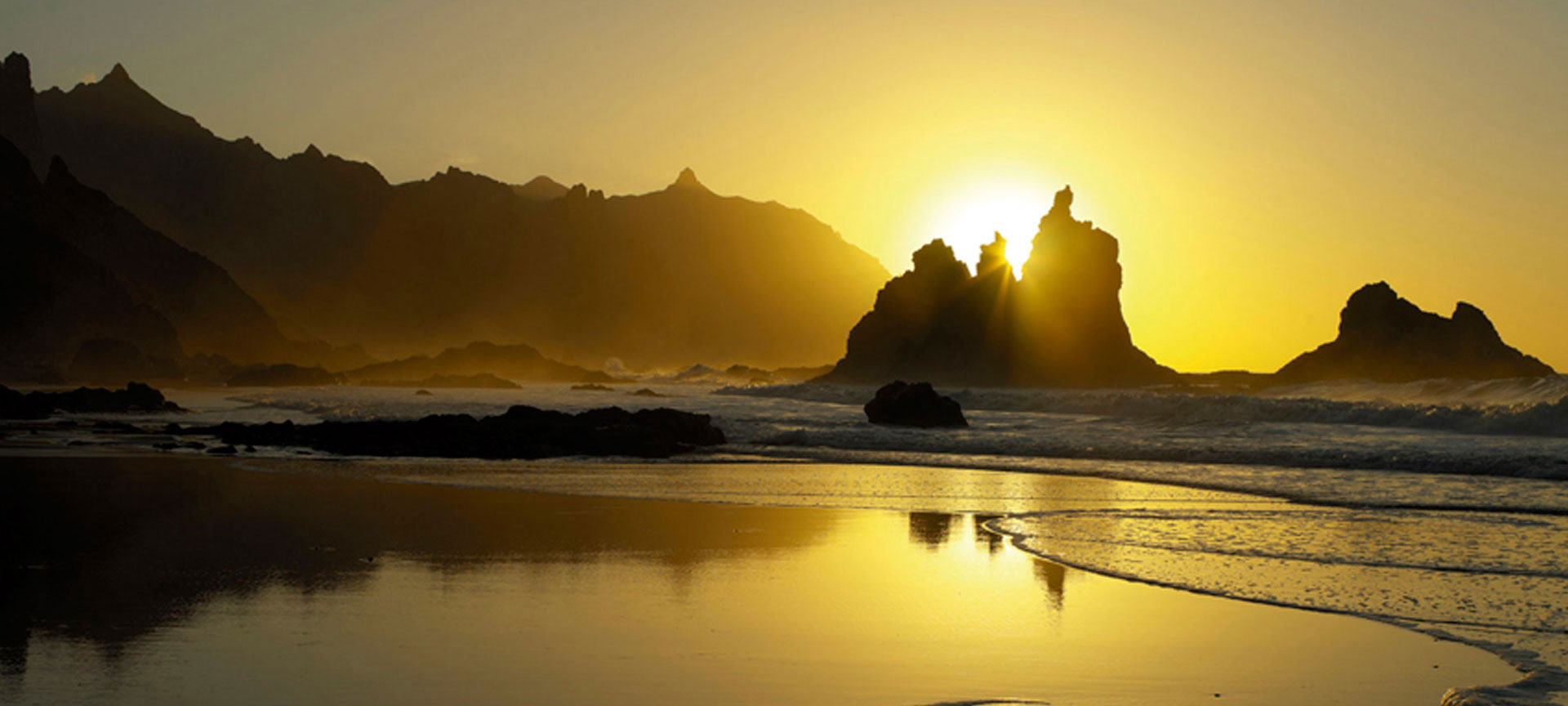
Tenerife (Island)
The ease of wearing summer clothes all year round.…
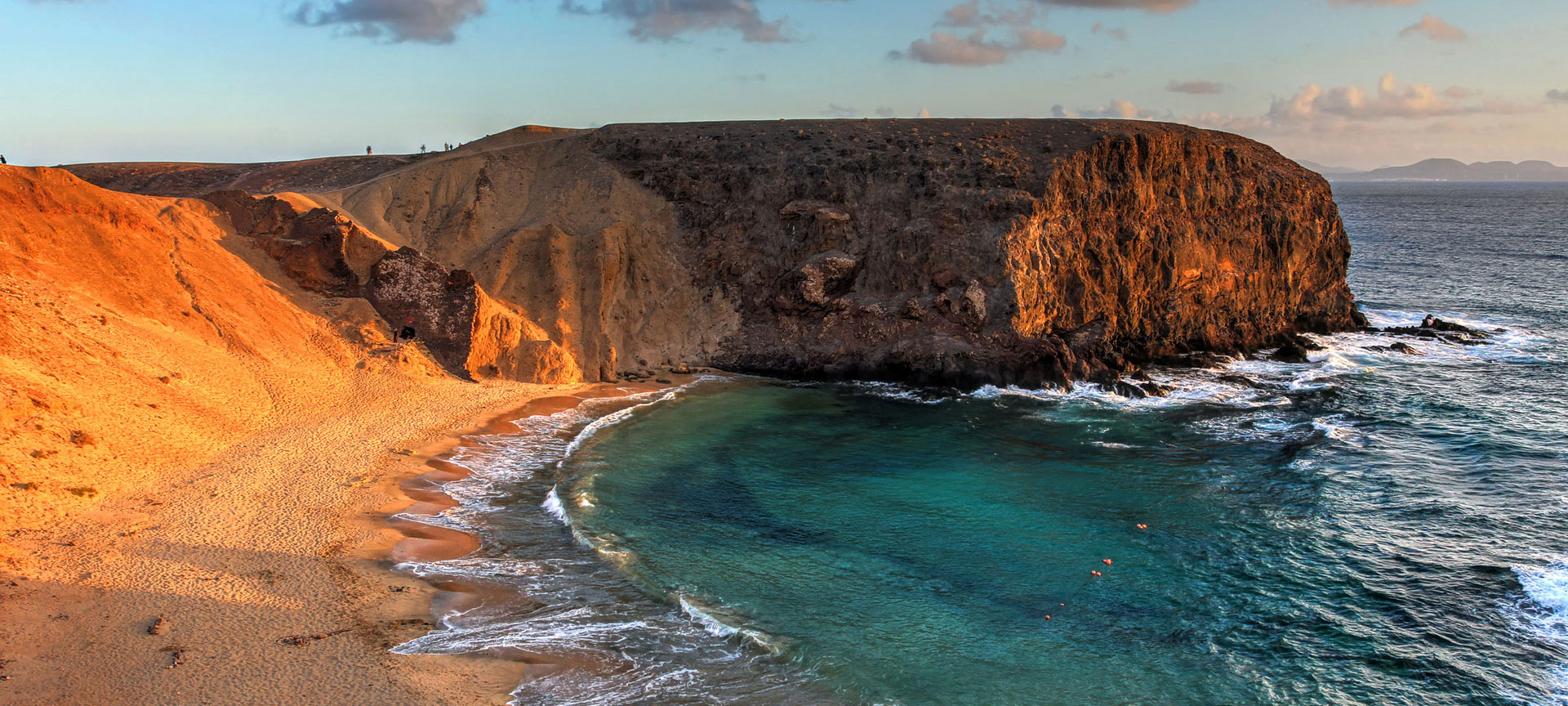
Lanzarote (Island)
Lanzarote is one of the most fascinating of the Canary Islands.…
Other ideas for your trip
Natural pools for taking the plunge in the Canary Islands
Without waves, calm and smooth even when the sea is choppy. These natural formations are found everywhere on the Canary Islands, creating natural swimming pools…
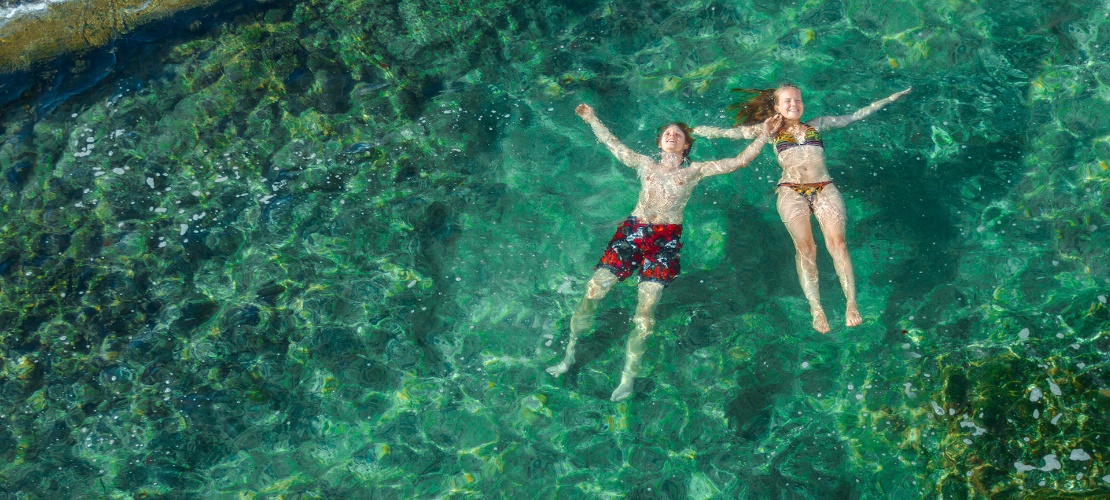
Some of the best hiking routes on the Canary Islands
As you explore these volcanic islands, you’ll find dense laurel forests, black sand beaches, extinct craters, cliffs, seas of clouds, and the highest peak in…

Holidays on the Canary Islands
So you can make the most of what's on offer in the eight Canary Islands, we suggest a travel plan with the essentials of each one.…

Why travel to the Canary Islands in winter?
Here are 7 reasons we think will convince you to start planning a holiday in the Canary Islands.…
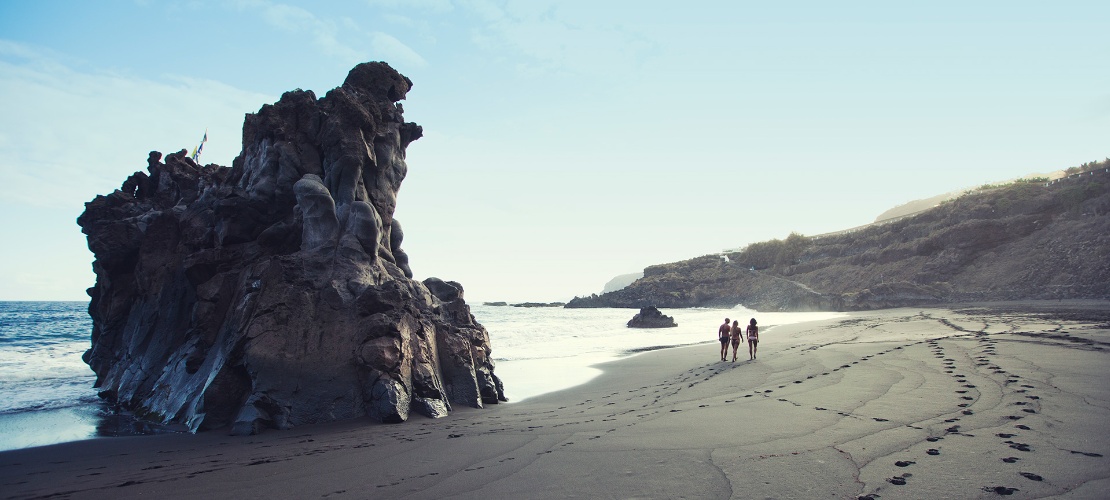
The Canary Islands, the destination where it’s always spring
This will cheer you up: there’s a place in Spain where you can enjoy spring sunshine and warm weather all year round.…

Lanzarote: the island designed by César Manrique
As soon as they set foot on Lanzarote, travellers know they are somewhere special: its volcanic landscapes are unlike anything they have ever seen, there are no…
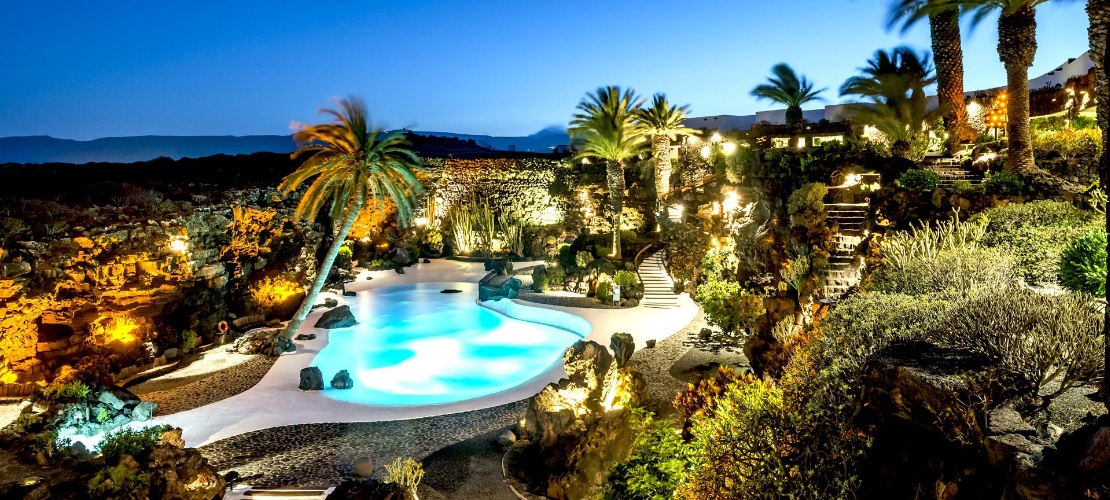
The paths that lead you to the most beautiful viewpoints in the Canary Islands
This archipelago is home to a great diversity of landscapes, from paradise-like beaches to long stretches of land where volcanoes reign supreme.…
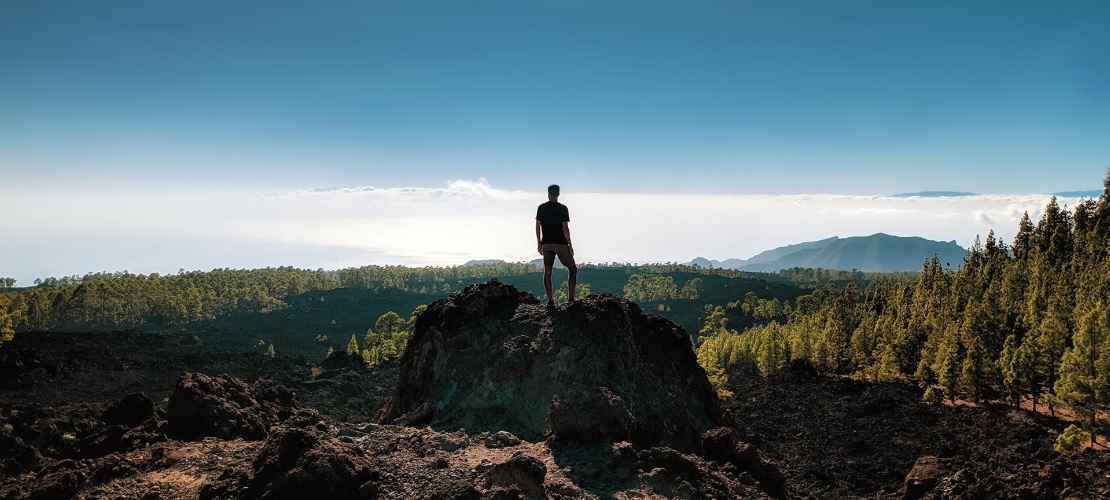
In the Canary Islands you can play golf in the summer and all year round
Did you know that you can play golf all year round in the Canary Islands? With an average yearly temperature of 22ºC, there's no winter, no bad weather and no…

Canary Islands – your kids will want to come back
When are we going back? That’ll be the question the kids will ask you when they leave the Canary Islands.…
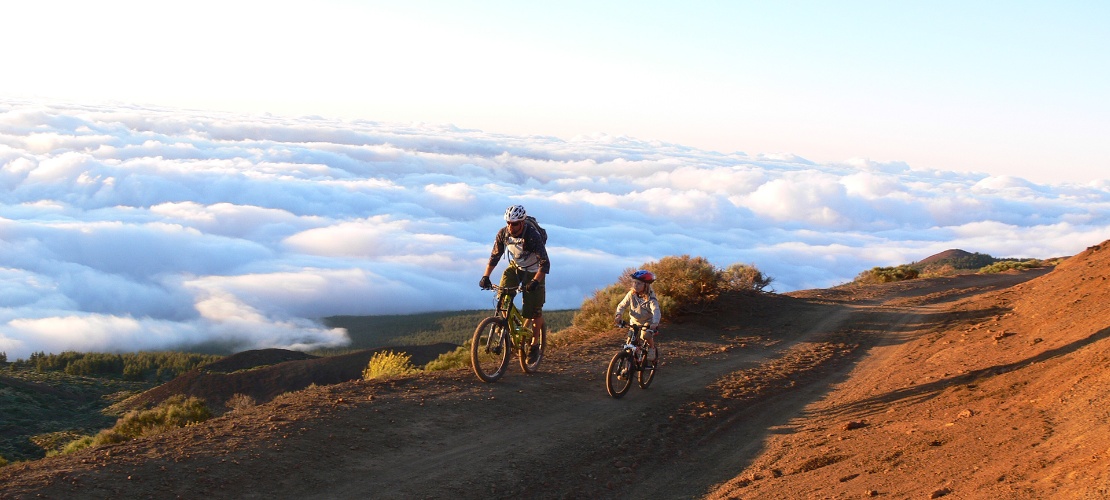
Into the volcanic heart of Tenerife
Tenerife (Canary Islands) is a pretty exciting place. Magnificent beaches, a famous carnival, pleasant temperatures all year, and something less known but much…

As you explore these volcanic islands, you’ll find dense laurel…

So you can make the most of what's on offer in the eight Canary…
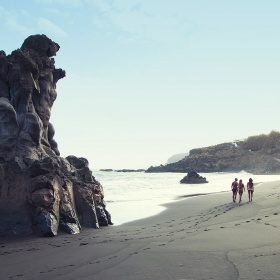
Here are 7 reasons we think will convince you to start planning a…

This will cheer you up: there’s a place in Spain where you can…

As soon as they set foot on Lanzarote, travellers know they are…

This archipelago is home to a great diversity of landscapes, from…

Did you know that you can play golf all year round in the Canary…

When are we going back?…

Tenerife (Canary Islands) is a pretty exciting place.…
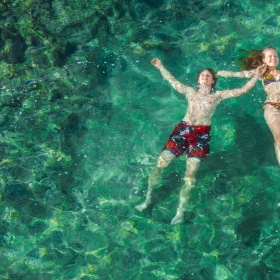
Without waves, calm and smooth even when the sea is choppy.…
How to get there - transport information
Select the means of transport to see how to get there or how to get around at your destination.
How to get to aeroplane
The Canary Islands have excellent air transport connections, reaching practically anywhere in Europe in 5 hours or less.
The seven main Canary Islands have their own airports. The airports with the most international traffic are Gran Canaria , Tenerife Sur , Lanzarote and Fuerteventura .
There are many daily flights between these airports and to the rest of the islands via the airports of Tenerife Norte , El Hierro , La Palma and La Gomera .
You can see how to get to your destination on each airport’s information page.
You can check a table of approximate journey times to the Canary Islands from other parts of Spain.
How to get to boat
The Canary Islands are a major cruise line destination, and two ports stand out:
Las Palmas Port (Gran Canaria): just 5 kilometres from the centre of Las Palmas de Gran Canaria, with regular city bus services.
Santa Cruz de Tenerife Port (Tenerife): the cruise terminal is very near the city centre and you can walk to Plaza de España, a transport hub with many city buses.
The Canary Islands have many ferry connections from the Spanish cities of Cadiz and Huelva, mainly to the ports of Las Palmas and Santa Cruz de Tenerife, as well as to the Arrecife Port (Lanzarote).
You can check a table of approximate journey times to the Canary Islands by boat from other parts of Spain.
Practical information
The best way to explore each island is probably by car.
The islands of Gran Canaria, Fuerteventura, La Gomera, El Hierro, Lanzarote, Tenerife and La Palma have airports and ports with plenty of transport connections.
Gran Canaria and Tenerife are the two largest islands and have many transport options every day, both by plane and ship.
The island of Gran Canaria also has many daily connections to Lanzarote and Fuerteventura.
The island of Tenerife has many daily connections to El Hierro, La Gomera and La Palma.
How to get around in aeroplane
Most flights between the islands take between 30 minutes and one hour. You can see approximate journey times in “ Air connections for exploring Spain ”
There are flights between all the islands, especially between Gran Canaria Airport and Tenerife Norte Airport.
Gran Canaria Airport also has the most frequent flights to Lanzarote and Fuerteventura airports.
Tenerife Norte Airport has frequent flights to La Gomera , El Hierro and La Palma airports.
How to get around in boat
Ferries are a common way to travel between the Canary Islands. You will find a range of frequent connections, offering you the option of bringing your vehicle aboard.
The journey time between islands depends on the distance and type of ship. Journeys range from 35 minutes to ten hours. For example, you can travel between Gran Canaria and Tenerife in about an hour and a half. You can see other journey times in “ Spain's main sea connections .”
Several islands have more than one port for cruise ships and ferries. Check your port of origin and destination carefully when booking tickets.

Choose between thousands of activities to live your best life on holiday.


A COMPLETE TRAVEL GUIDE TO THE CANARY ISLANDS
Are you visiting the Canary Islands soon? You need some help to plan your trip? We spent 3 months traveling through the Canary Islands and we prepared this comprehensive travel guide for you!
With its stunning beaches , incredible landscapes, fantastic traditions and delicious food, the Canary Islands is a dream destination in Europe. In this post we will share useful tips for traveling to the Canary Islands.

The Canary Islands are composed of 7 unique islands . The best known and most visited are Lanzarote (our favorite one…) and Tenerife . However each island has something special to offer. To know more about each island you can read this post .
1. Why traveling to the the Canary Islands?

When we started our trip to the Canary Islands , we didn’t know what to expect. However, during our journey we were amazed by the beauty and diversity of landscapes in the Canary Islands.
Just to give you some examples, you can see a desert in Maspalomas in Gran Canaria , you can reach the highest mountain in Spain at Mount Teide , Tenerife . You can also visit amazing beaches which will make you feel at the end of the world such as Cofete in Fuerteventura . And of course Lanzarote will make feel that you landed on the moon . Make sure to visit Timanfaya National Park in Lanzarote , one of the most incredible things to see in the Canary Islands!
The Canary Islands is a destination for everyone. So if you are more of a night owl, there is a vibrant nightlife in the Canary Islands! The best places to party are Playa del Inglés in Gran Canaria , or Corralejo in Fuerteventura .
- 10 BEST REASONS TO VISIT LANZAROTE
- 10 REASONS WHY YOU SHOULD VISIT FUERTEVENTURA
- TOP 8 REASONS TO VISIT GRAN CANARIA
- WHY VISITING TENERIFE?
2. Which island to visit in the Canary Islands?
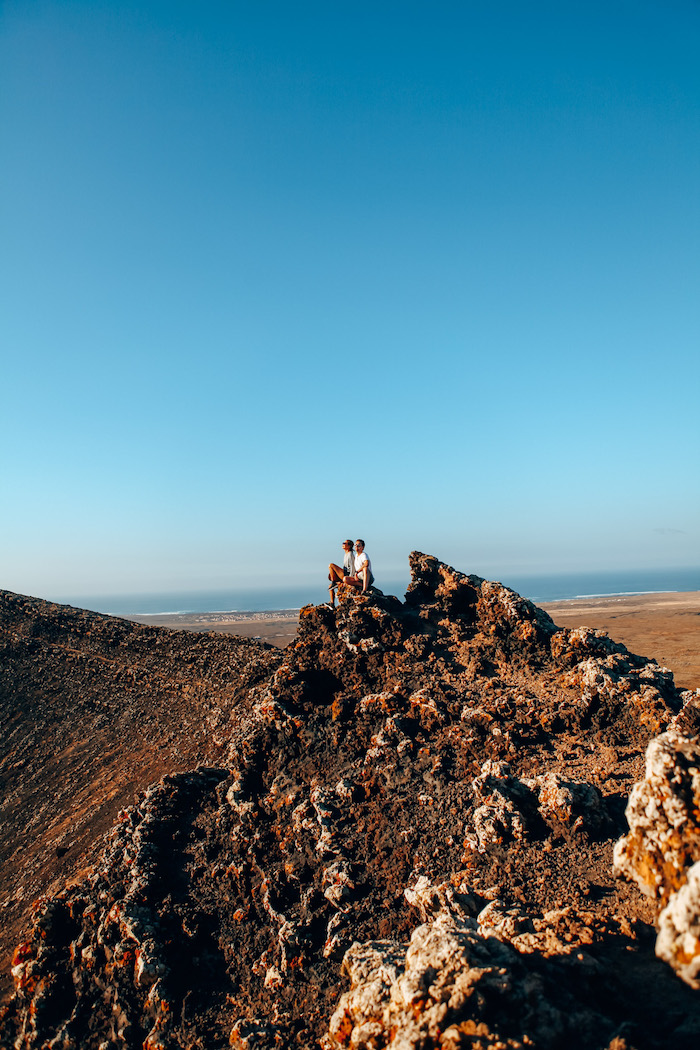
Whether you want to enjoy the beach, or need some adventures, or want some great food there is something for everyone in the Canary Islands.
If you like to party , prioritise Gran Canaria . On top of having a great nightlife , Gran Canaria is also one of the most diverse islands in the Canary. Hence, you will be able to combine excursion during the day and partying at night! Here are the 20 best things to visit in Gran Canaria.
If you like hiking , then without a doubt Tenerife will be the best island to visit. Indeed, Tenerife is home to mount Teide the highest mountain in Spain! It is one of the most visited natural park in the whole of Europe! Full guide here to climb to the summit (it’s not as hard as you would imagine…)
If you want a complete change of landscape, then Lanzarote is the one! Lanzarote is a perfect place to feel the volcanic power of the Canary Islands, some places will make you feel on the moon.
For those you like water-sports such as surfing or kitesurfing , then the best island for that would be Fuerteventura! Here we listed the best outdoor activities in Fuerteventura and here the best spots for surfing in the Canary Islands .
If you want something more calm and off the beaten track, head to La Gomera, La Palma or El Hierro. Those 3 islands are the wildest amongst all of the Canary Islands .
READ: WHICH ONE IS THE BEST CANARY ISLAND TO VISIT?
3. When is the best time to visit the Canary Islands?

The Canary Islands benefit from a very unique climate which makes some say that is an eternal spring . Indeed the climate is good all year round and doesn’t change much throughout the year.
However some months are a bit more rainy than others… To visit the Canary Islands in the most optimal conditions, it is generally preferable to travel during the months of May to November . Most likely you will never have to deal with rain…
In the middle of winter, the Canary Islands will be a popular refuge for Europeans escaping cold temperature in the mainland. During this period, some rainfall can be observed, but the temperature rarely drops below 20°C. In terms of crowds, the most popular periods are therefore the months of July and August, but also the winter months and January in particular.
- WHEN IS THE BEST TIME TO VISIT THE CANARY ISLANDS?
- BEST TIME OF THE YEAR TO VISIT LANZAROTE
- BEST MONTHS TO VISIT FUERTEVENTURA
- WHEN VISITING TENERIFE
- BEST TIME TO VISIT GRAN CANARIA
4. What budget should you plan to visit the Canary Islands?
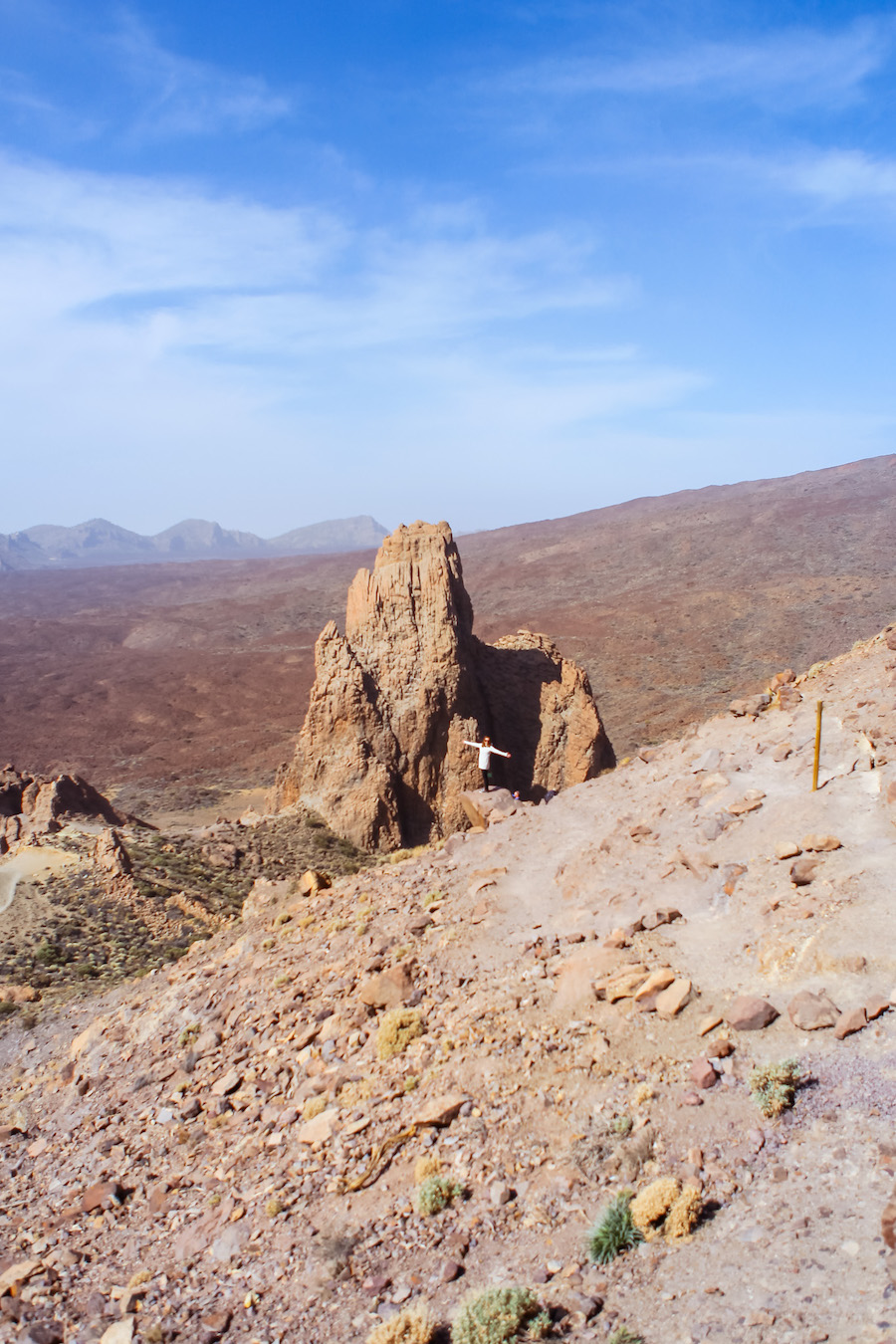
To visit the Canary Islands without too much compromise, it is important to talk about the budget. This essential point of travel guides is always a sensitive aspect due to the volatility of prices and the countless parameters that influence them.
With regard to the Canary Islands, you must first know that the notions of high, low and medium season are essential. If you are traveling during the Christmas holidays or the months of July and August, expect to see prices skyrocket . So book well in advance!
You should also know that at the same time, the islands of El Hierro or La Gomera are much cheaper than Tenerife and Gran Canaria, for example.
In terms of accommodation and in general, you can find everything. From the small youth hostel at 20 euros per night to the most luxury hotels at 200 euros per night. What we found very expensive is eating in restaurants . A paella for 2 with 2 glasses of Sangria, would easily cost us 50 EUR… As we were traveling for 3 months, we decided to eat most of the time in our apartment. This helped our budget considerably!
Also remember to include car rental, which will amount to around 30 or 40 euros per day with decreasing rates if you opt for longer rental periods and of course depending on the type of car you rent. As for us we always rented a Fiat 500, which is generally the cheapest model. We loved it, except in Fuerteventura where the roads can be very bumpy. More on that here .
5. How to get to the Canary Islands from the rest of Europe?

By plane is obviously the fastest and cheapest way to get to the Canary Islands. There are many connections from the major cities in Europe. The best company to get to the Canary Islands , is Easy Jet. Remember that the earlier you book, the better fares you will get, which is absolutely essential if you choose to travel during the busy periods mentioned above.
However, there is a more adventurous way to get to the Canary Islands if you have sufficient time. You can take your car and drive down to the south of Spain. The cities of Cadiz or Huelva allow you to reach the islands of Las Palmas or Gran Canaria by ferry ! The crossing lasts between 30 and 40 hours depending on the weather conditions.
We didn’t know about it, until we saw cars with Swiss plates or German plates driving in the Canary Islands. We fell that this was a fantastic way to travel to the Canary Islands. And all islands are connected by ferry which makes it super easy to travel with your own car. Awesome, isn’t it?
If that’s an option for you, check out Direct Ferries to book your ride.
6. How to get around the Canary Islands?

Once you reach the Canary Islands, it is highly recommended to rent a car . To get the cheaper rate we used Rentalcars.com . Check it out here for the best deals.
Taking a taxi is also possible, however you will have less freedom to travel or take your time to visit certain sights. Especially for those who want to go hiking… There are also bus lines, but they will be relatively limited once you get off the beaten track. Finally, cycling can also be a good way to discover the Canary Islands .
If you want to visit multiple islands while you are in the Canaries, which we recommend, then using the ferry would be the best way . You can book all your ferry rides here .
7. Best traditional dishes in the Canary Islands?

Visiting the Canary Islands without eating a potato dish is practically impossible! Since its introduction by the Spaniards, potato has been integrated into many typical dishes. Try the Ropa Vieja , a kind of stew made with chickpeas and strips of beef and chicken or Pucherio Canario a stew with chorizo, bacon, cabbage, courgettes or pumpkin. Also taste the Papas Arrugadas , a delicacy of potatoes boiled in salted water and always accompanied by their Mojo sauce, often very spicy and extremely tasty.
The Gofio is a flour of wheat, or corn previously roasted, and which is used with all the sauces in the islands. This traditional food can be used to thicken soups, but can also be eaten with milk or even in the form of ice cream.
Meat lovers will appreciate the Canary Islands for the diversity of their dishes, which include pork and rabbit as well as chicken and goat. Seafood lovers will be served with cod, bass, sardines and of course octopus.
As for desserts, we particularly recommend the Leche Asada , a cinnamon cream caramelized with palm honey.
Finally, to drink, you can try delicious local wines and don’t forget the Barraquito, a multi-layered coffee consisting of an espresso, condensed milk and a touch of Licor 43 which is Spain’s number 1 liqueur. Really delicious!
8. What are the best things to do in the Canary Islands?
If we were to list all the great things to do in the Canary Island, the list would be way too long! We probably have over a 100 recommendations.
So we to make it simple, we prepared some of the highlights on each island such as below.
What to see in Lanzarote ?

- TIMANFAYA NATIONAL PARK , the unmissable thing to see in Lanzarote: here
- PAPAGAYO BEACH , the most beautiful beach in Lanzarote: here
- FAMARA , a charming village and surf paradise: here
- JAMEOS DEL AGUA , our favorite sight in Lanzarote: here
- CACTUS GARDEN in Lanzarote: here
What to see in Tenerife ?

- PUERTO DE LA CRUZ, one of the best town in Tenerife: here
- MASCA, the most remote village in Tenerife: here
- MOUNT TEIDE , the highest peak in Spain: here
- SAN CRISTÓBAL DE LA LAGUNA , the ancient capital of Tenerife: here
- LOS GIGANTES , most impressive cliffs in Tenerife: here
- GARACHICO , one of the prettiest towns in Tenerife: here
What to see in Gran Canaria?

- VISITING LAS PALMAS, the capital of Gran Canaria: here
- TEROR , one of the most charming towns in Gran Canaria: here
- MASPALOMAS a desert in Gran Canaria: here
- PUERTO DE MOGÁN , our favorite place in Gran Canaria: here
- AGÜIMES , a fantastic historical town in Gran Canaria: here
- TEJEDA , visit one of the prettiest village in Gran Canaria: here
What to see in Fuerteventura?

- CORRALEJO DUNES NATURAL PARK , full guide: here
- EL COTILLO, a charming village near Corralejo in Fuerteventura: here
- COFETE , the best beach in Fuerteventura: here
- HIKING CALDERON HONDO in Fuerteventura: here
- OASIS PARK in Fuerteventura: here
9. Useful information
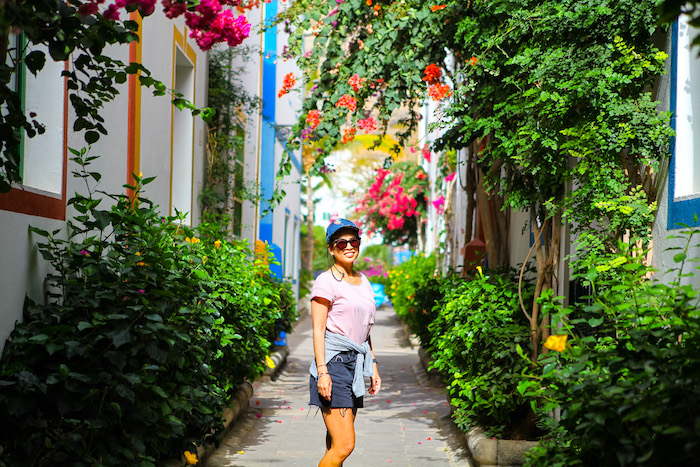
Money : the Canary Islands belong to Spain, so the currency is the euro.
Passport : Spain belongs to the Schengen Convention area, you do not need a passport to go there.
Vaccines : no particular vaccine is necessary.
Language : the official language is Spanish, but all seasonal workers speak English and sometimes even French.
Tipping : It is appreciated if customers leave a tip in taxis, hotels or restaurants to approximately 5 to 10% of the price.
Safety : the Canary Islands are safe but, as with any tourist destination, be careful with your belongings and do not leave anything in sight.
READ: 10 BEST REASONS TO VISIT THE CANARY ISLANDS
10. CONCLUSION
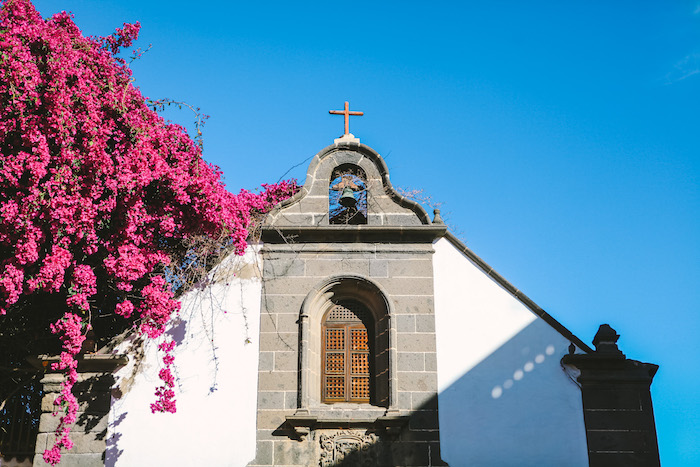
The Canary Islands are a real gems with full of surprise. During our 3 months traveling through the Islands, we realized how beautiful but more importantly how diverse each island is. There are so many things to do and see in the Canary islands. Even during our 3 months we couldn’t see it all. Each island has its own treasures!
READ: 10 BEST BEACHES IN THE CANARY ISLANDS
So what are you waiting for? Did you book your flight yet? Book here for the best prices .
We hope that this post was useful to prepare for your visit to the Canary Islands. If you have any questions, feel free to leave a comment below.
We are Hammer and Guillaume, a fun couple traveling the world. We will take you to some of the most amazing places on earth. Hammer is a yoga instructor and Guillaume a true water baby, enjoying all kinds of water sports. Follow-us to get the latest update about our travels.
Similar Posts
![canary islands travel between 20 BEST THINGS TO SEE IN FUNCHAL [MADEIRA]](https://afuncouple.com/wp-content/uploads/2022/06/What-to-do-in-Madeira-10511-768x512.jpg)

20 BEST THINGS TO SEE IN FUNCHAL [MADEIRA]
Are you planning a trip to Madeira and wonder what to do in Funchal? Check out this post to discover the 20 best things to see in Funchal.

5 LUXURY BEACH DESTINATIONS IN EUROPE
Explore the ultimate luxury with the top 5 beach destinations in Europe, offering pristine sands, exclusive resorts, and bespoke experiences.
![canary islands travel between 15 BEST THINGS TO DO IN PAROS [GREECE]](https://afuncouple.com/wp-content/uploads/2023/11/Things-to-do-in-Paros-in-Greece-2-768x512.webp)
15 BEST THINGS TO DO IN PAROS [GREECE]
Paros in Greece, boasts pristine beaches, charming villages, historical landmarks, and authentic island life. Full guide about Paros!

EXPLORE TEJEDA, A CHARMING VILLAGE IN GRAN CANARIA
Tejeda is a pretty village located in the center of the island of Gran Canaria. From there you can contemplate the famous Roque Nublo

BEST TIME OF THE YEAR TO VISIT MADEIRA
Are you wondering what is the best time of the year to visit Madeira? Well the good news, is that Madeira is an all year round destination.
![canary islands travel between 8 BEST THINGS TO SEE IN OIA [SANTORINI]](https://afuncouple.com/wp-content/uploads/2023/10/Best-things-to-see-in-Oia-3-768x512.webp)
8 BEST THINGS TO SEE IN OIA [SANTORINI]
Check out the best things to see in Santorini, from it’s incredible sunset, to it’s romantic cobbled streets and beautiful bay at Ammoudi.
Leave a Reply Cancel reply
Your email address will not be published. Required fields are marked *
- A Guide To Island Hopping...
A Guide To Island Hopping Around The Canary Islands

The Canary Islands lie approximately 100 kilometres from the south coast of Morocco. An archipelago of seven main islands, they may be part of Spain, but seem to have more in common with the Caribbean due to their laid-back vibe, island time and stunning beaches. Many of the Canary Islands have been awarded UNESCO Biosphere Reserve status because of their unique volcanic landscapes and national parks. Here’s our guide to island hopping between them.
Lanzarote may be a famous package holiday and clubbing island, but look beyond this and you’ll soon discover what it’s really about. An alien-like landscape of red and black volcanic rocks, Lanzarote is also known for its excellent wines, of the Malvasia variety. Don’t leave without visiting some of its otherworldly lava tubes, some of which you can even go inside. Its excellent climate, long sunny days and dramatic landscapes also means that Lanzarote is popular with athletes and sports teams, many of whom come here to train for Olympic swimming, running and cycling. Getting there Lanzarote is the northernmost Canary Island and is home to Arrecife Airport, serving many European destinations, as well as flights to mainland Spain. There is one ferry route from Lanzarote to Fuerteventura, operated by three different ferry companies and offering daily sailings, taking just 25 minutes.

Fuerteventura
Fuerteventura is known as the Canary Islands’ beach, with over 150 kilometres of white sand coastline to explore. Its beaches and dramatic volcanic landscapes mean that it’s the ideal holiday playground. Just offshore you’ll also find plenty of entertainment options such as windsurfing and kitesurfing. And if the beaches don’t do it for you, Fuerteventura’s famous cheeses definitely will. Getting there Situated just south of Lanzarote, Fuerteventura’s main airport, El Matorral, serves many European destinations via both low-cost and international carriers. There are two ferry routes between here and Gran Canaria (situated southwest of the island), offering 33 sailings per week.

Gran Canaria
Home to the capital of the Canary Islands, the historic and vibrant Las Palmas, Gran Canaria is known as a continent in miniature. In one day here you can see lush volcanic craters, desert-like sand dunes at Maspalomas, beautiful beaches and rocky barren hills. It’s also a top wellness destination, offering many spa hotels as well as some of Europe’s biggest thalassotherapy centers. Getting there Las Palmas de Gran Canaria international airport is the busiest in the Canary Islands in terms of cargo and passenger traffic. It’s served by many airlines from all over Europe and also has many connections to West Africa. There are two ferry routes that run between Gran Canaria and Tenerife, mostly between the towns of Las Palmas and Santa Cruz de Tenerife, offering a total of 64 sailings per week.

The largest island in the Canaries, Tenerife is known for its party vibe and wild clubs, but it has so much more to offer, whether it’s nature, sports or beaches that you’re after. Tenerife is home to a total of eight golf courses with modern facilities, which you can enjoy all year round, and is also one of the Canaries’ top whale watching destinations – 26 species have been spotted off the coast here, including pilot whales, baleen whales and even the mighty blue whale. Tenerife also boasts Spain’s highest mountain, and the third highest island volcano in the world – Mount Teide, located within the UNESCO World Heritage Teide National Park. Getting there Tenerife is home to two international airports, the largest of which is Tenerife Sur, the second biggest in the Canary Islands and served by many international and budget airlines to a variety of European destinations. Tenerife also lies within easy reach of Gran Canaria and La Gomera by ferry. Ferries go from Los Cristianos de Tenerife to San Sebastián de La Gomera and take around 40 minutes.

La Gomera is one of the most enchanting and magical of the Canary Islands, where some of the streets are made of sand and there’s an ancient whistling language called Silbo. Explore La Gomera via its 650 kilometres worth of walking trails, taking you to some of its most stunning locations. Getting there La Gomera has one domestic airport, serving Tenerife North only, and offering two return flights per day. There is just one ferry between La Gomera and La Palma, operated by two ferry companies and taking around one hour 50 minutes.

La Palma is called the beautiful island due to its stunning landscapes of soaring volcanos, verdant forests and paradisiacal beaches. Because of its clear skies and lack of pollution, La Palma has also become known as one of the world’s best locations for star gazing, and was certified the first Starlight Reserve on Earth by the UNSECO Starlight Initiative . Getting there La Palma has one main airport, which is served mainly by Binter Canarias and CanaryFly, with island-hopping flights from Tenerife and Gran Canaria. It also serves a variety of other European destinations such as the UK, France, the Netherlands, Belgium and Germany. There are two ferry routes between Tenerife and La Palma, offering a total of 28 sailings per week.

Become a Culture Tripper!
Sign up to our newsletter to save up to $1,656 on our unique trips..
See privacy policy .

El Hierro may be one of the smallest and most rural of the islands, but it’s also one of the most forward-thinking, with schemes in place to become completely self-sufficient in electrical energy. It’s also one of the best islands for for diving, boasting a marine reserve, home to an incredible 46 dive sites and a large variety of marine life. Getting there El Hierro has one domestic airport offering flights to Tenerife North and Gran Canaria only. There is one ferry route between El Hierro and Tenerife operating weekly and taking around two hours 15 minutes.

Culture Trips launched in 2011 with a simple yet passionate mission: to inspire people to go beyond their boundaries and experience what makes a place, its people and its culture special and meaningful. We are proud that, for more than a decade, millions like you have trusted our award-winning recommendations by people who deeply understand what makes places and communities so special.
Our immersive trips , led by Local Insiders, are once-in-a-lifetime experiences and an invitation to travel the world with like-minded explorers. Our Travel Experts are on hand to help you make perfect memories. All our Trips are suitable for both solo travelers, couples and friends who want to explore the world together.
All our travel guides are curated by the Culture Trip team working in tandem with local experts. From unique experiences to essential tips on how to make the most of your future travels, we’ve got you covered.

Places to Stay
The best spa hotels in the canary islands.

The Best Resorts in Fuerteventura, the Canary Islands

The Best Villas in Fuerteventura, the Canary Islands

The Best Luxury Hotels to Book in Lanzarote

The Best Luxury Hotels in Fuerteventura

The Best Hotels With Swimming Pools in the Canary Islands

Guides & Tips
A wine-lover's guide to the canary islands.

Where to Stay in the Canary Islands to Catch Some Winter Sun

Where to Book a Stay in Lanzarote, Spain, for a Beach Holiday

The Best Resorts in Lanzarote, Spain

The Best Destinations for a Remote-Working Retreat

Somewhere Wonderful in the Canary Islands Is Waiting
Culture trip spring sale, save up to $1,656 on our unique small-group trips limited spots..

- Post ID: 972266
- Sponsored? No
- View Payload
Here are the best ways to get to and around each of the 7 main Canary Islands
- There are seven main Canary Islands, and some are easier and less costly to reach than others.
- Here's how to get to Tenerife, Gran Canaria, La Palma, El Hierro, Fuerteventura, La Gomera, and Lanzarote.
- Visit Insider's hub for travel guides, tips, and recommendations.

With laid-back island vibes that infuse aspects of Caribbean, Latin, Spanish, and European culture alongside a myriad of natural wonders, and a location closer to Morocco than Spain, the Canary Islands are one of Europe's best-kept secrets.
I've been visiting the Canaries regularly from my home base in Madrid for the past 15 years. When the cold chill rolls around each November, I start plotting: Which island will I escape to this winter? And with year-round warm temperatures, sunny rays, and no rainy season, I often find my way back to the Canary Islands in spring and summer, too.
As such, some islands within this remote archipelago can be easier to get to than others. Here are my best tips for ensuring a seamless getaway.
Getting to the Canary Islands
It's most affordable to fly to the four largest Canary Islands: Tenerife, Gran Canaria, Fuerteventura, and Lanzarote. Flights to these islands operate not only from Madrid and other Spanish cities on airlines like Iberia/Iberia Express and Air Europa but also from various cities all over Europe on airlines including Air France, Aer Lingus, and British Airways.
Low-cost carriers such as Ryanair, Vueling, Jet2, Eurowings, Wizzair, and easyJet fly to the Canaries from many Spanish and European hubs, though they often come with added fees that may negate the cheap cost when considered cumulatively.
Travel to the smaller islands of La Palma, La Gomera, and El Hierro can be slightly more complicated and take longer.
If you'd like to island hop, once here, you may fly between the Canary Islands on airlines such as the local Binter Canarias, as well as Air Europa and CanaryFly. Another option is to take a ferry, which you can do with the local companies, Fred Olsen and Armas.
Because the Canary Islands are located near Africa — just west of Morocco, and Western Sahara — and not Spain, nonstop flights from the Spanish mainland take close to three hours. From London or Paris, you might be flying for five or six hours.
Here's a more detailed look at getting to each island:
Each of the main Canary Islands has an airport, except for Tenerife, which has two. Tenerife North (TFN) is usually used by locals, as many people reside in the island's capital, Santa Cruz, which isn't far from that airport. Tenerife South (TFS) is often used by tourists closer to the sunny resorts south of the island.
Related stories
Tenerife is the easiest island to reach for US visitors, with United Airlines launching a nonstop flight from Newark (EWR) to Tenerife South (TFS) starting June 9, 2022. This flight is expected to operate three times weekly.
Gran Canaria
Midway between the white-sand beaches of the south and the island's capital of Las Palmas in the north, Gran Canaria Airport (LPA) is easy to reach from places like Germany, the UK, Italy, and other European countries.
Fuerteventura
Located near the island's capital of Puerto del Rosario, and not too far from the beaches of the Costa Calma, Fuerteventura Airport (FUE) is in the middle of this long island, about equidistant from the resort towns of Corralejo and El Cotillo in the north and Jandia in the south.
Near the island's capital of Arrecife, César Manrique-Lanzarote Airport (ACE) is named after the island's most celebrated artist. You can reach this island from almost 80 destinations nonstop on more than 40 airlines.
You can fly to La Palma (SPC) from only nine destinations on nine airlines. They are three destinations in Germany, one each in Paris, Zurich, and Amsterdam, and three cities in Spain: Madrid, Las Palmas de Gran Canaria, and Tenerife (TFN). The airport is a 10-minute drive from the island's capital, Santa Cruz de la Palma.
La Gomera Airport (GMZ) is served by just one airline flying to two destinations: Binter Canarias flying to/from Tenerife (TFN) or Gran Canaria (LPA), with the frequency of these flights increasing or decreasing based on seasonal demand. My preferred way to reach La Gomera, however, is on the fast ferry from Tenerife, which takes just 50 minutes — and you can bring your car, too.
El Hierro sits the farthest west and is the most difficult to reach. Get to El Hierro Airport (VDE) by flying Binter Canarias or CanaryFly from Tenerife (TFN) or Gran Canaria (LPA).
Getting around the Canary Islands
Car rental in the canary islands.
A car rental in the Canaries is essential, especially for those wanting to leave the hotel and explore. You may rent cars at airports, hotels, or freestanding locations in resort towns.
International car-rental companies found on the islands include Hertz and Avis or consider using Plus Car , a local favorite I love to rent from thanks to low prices and friendly customer service. Orlando Rent-a-Car is another car-rental option with a large presence on all of the islands except for El Hierro.
Most of the Canary Islands have decent highways and paved roads, but you may need to go off-road to visit remote beaches or far-flung destinations, so make sure to check with your car-rental provider that doing so is permitted.
Like much of Europe, most rental cars in the Canary Islands are manual transmission, but it is possible to rent automatic cars, albeit at a higher price.
Taxis and buses on the Canary Islands
If you don't rent a car, there are taxi stands in some towns and resort communities. Taxis often have fixed prices for specific routes, though rates can be high, sometimes even more expensive than a days-long car rental. Many taxi drivers don't speak English, either. There are no ride-hailing services such as Uber on any of the islands.
While taking the bus is safe and cheap, it's not usually the quickest or most convenient way to get around, so I highly recommend renting a car.
If you do take the bus, make sure to check schedules and know that services are typically reduced and minimal on Sundays and holidays. While the Spanish term for "bus" is technically autobús, Canarian locals refer to buses as guaguas.
Each island has a different company of public buses, and drivers don't typically speak English.
Here are the municipal bus lines by island:
Tenerife: TITSA, Transportes Interurbanos de Tenerife
Gran Canaria: Guaguas Municipales
Lanzarote: Intercity Bus
La Gomera: Guagua Gomera
El Hierro: TransHierro
La Palma: TILP, Transportes Insular La Palma
Fuerteventura: Tiadhe
View Insider's comprehensive guide to visiting the Canary Islands
When you buy through our links, Insider may earn an affiliate commission. Learn more .
- Main content
Canary Islands

- 2.1 Demographics
- 2.2 History
- 2.3 Climate
- 3.1 By plane
- 3.2 By boat
- 4.1 By public transport
- 4.2 By rental car
- 4.3 By taxi
- 4.4 By boat
- 4.5 By plane
- 5 See and do
- 9.1 Pickpocketing
- 9.2 Natural hazards
The Canary Islands (Spanish: Islas Canarias ) are an Atlantic territory of Spain off the coast of Morocco and Western Sahara .

The Canary archipelago consists of 8 inhabited islands, and a few smaller uninhabited ones.
- 28.268611 -16.605556 1 Tenerife – The largest and most populous island with an area of 2,034 km² and also the most popular tourist destination of the archipelago, with about 6 million tourists per year. It has many museums and monuments that serve as portrayals of its rich history, but suffers under low cost mass tourism from the European mainland . Its oldest mountain ranges are young compared to its neighbouring islands, and volcanic activity did not begin to occur here until 8-12 million years ago, while other islands had it well over 20 million years ago. The highest mountain of Spain and 3rd largest volcano in the world (3,715 m), El Teide , dominates the landscape of the island. Santa Cruz de Tenerife is home to the Canary Island Parliament, while San Cristóbal de La Laguna is home to the oldest university on the Canary Islands. The main resorts are Puerto de la Cruz and Playa de las Américas .
- 28.4 -14 2 Fuerteventura – Second largest island, with an area of 1,660 km², but compared to Tenerife relatively thinly populated with only 117,000 (2019) inhabitants. There are fewer attractions, but in turn the island has not yet fallen prey to mass tourism. Its capital, Puerto del Rosario , is fairly laid back and has a few architectural gems to offer. Fuerteventura is a paradise for windsurfing and the only Canary Island with natural golden sandy beaches rather than naturally black volcanic sand. The main resorts of Fuerteventura are Corralejo, Caleta de Fuste and Morro Jable.
- 27.958611 -15.5925 3 Gran Canaria – The third largest island and second most popular (after Tenerife ) receiving over 4 million tourists every year–green and steep in the north, dry and flat in the south. It has the highest population density of the Canary Islands, with 540 inhabitants per km², and with tourists added to that number it gets a bit crowded at times. The main resorts on the Island are Las Palmas, Maspalomas, Puerto Rico and Playa del Ingles. Its capital city Las Palmas de Gran Canaria has the shared title of capital of the Canaries.
- 29.035 -13.635 4 Lanzarote – About half the size of Gran Canaria , but low lying and arid, with a spectacular volcanic landscape in the west of the island preserved as Timanfaya National Park . The greatest recorded eruptions occurred between 1730–1736. The capital is Arrecife and has its own airport, and draws most of the 2.9 million tourists visiting Lanzarote annually. There is a bustling nightlife in four main resorts—Arrecife, Costa Teguise, Puerto del Carmen and Playa Blanca.
- 29.231389 -13.501944 5 La Graciosa – The smallest inhabited island of the Canaries, being only 29 km² in size and having a population of approx. 735 (2018). Its capital is Caleta de Sebo, and it's a few kilometres to the north of Lanzarote .
- 28.666667 -17.866667 6 La Palma – The population is about 83,000 (2019), of which about half live in the capital, Santa Cruz de la Palma and in Los Llanos de Aridane . La Palma's geographic layout is a result of the volcanic formation of the island. The southern part of La Palma is dominated by the Cumbre Vieja, a volcanic ridge formed by numerous volcanic cones built of lava and scoria. The Cumbre Vieja is active but mostly dormant, with the last eruption occurring in 2021.
- 28.115 -17.225 7 La Gomera – The Magic Isle, with San Sebastián as capital, is a paradise for hikers. It is shaped like an orange that has been cut in half and split into segments. The terrain is rough, which has left deep ravines or barrancos between them. These barrancos, in turn, are covered by the laurisilva (laurel rain forest). The local wine has a distinct taste, and is often accompanied with a tapa (snack) of local cheese, roasted pork or goat meat. Other cultural dishes include almogrote , a cheese spread, and a syrup extracted from palm trees called miel de palma . The local people have a unique way of communicating across deep ravines by using a whistled speech called Silbo Gomero. This whistled language is indigenous to the island, and its existence has been documented since Roman times.
- 27.75 -18 8 El Hierro – "The edge of the world". It is also known as the Meridian Island, and Valverde is its capital.
All islands use the same time zone: Western European Time ( WET ). This means the time is the same as Portugal and United Kingdom .
Pico del Teide (on Tenerife) at 3,715 metres above sea level is the highest point in both the Canary Islands and Spanish territory.
Demographics
The islands have a population of 2.2 million (2019). Since the Canary Islands are a major European tourist destination, all the major islands have well-developed communication systems, airports, and ports.
Ethnically the population is mostly a mix of Spanish, European (German and British), South American, especially Cuban and Venezuelan as well as Northern and Sub-Sahara African. There are also historical minorities such as Indians, Koreans and lately Russians.
Each island speaks with a slightly different accent and there is a strong rivalry between the main islands of Tenerife and Gran Canaria. Most of the accents in the Canary Islands are closer to Latin American Spanish than to Castilian Spanish spoken in continental Spain.
The Canary Islands are very modern, very European, and extremely liberal.
Ancient legend claims the Canary Islands are the ‘lost islands’ of Atlantis. They have also been referred to as the lands without sorrow, holding on to the edge of the world. The first settlers were known as Guanches, thought to have arrived in the 10th century BC. The main economic system was built around agriculture and animal farming. During the 14th century, the islands were continuously invaded by different European countries. Sugar cane became the dominant crop, and since the early 20th century, bananas have been widely farmed.
During the Age of Sail, the islands were an important waypoint on the Cape Route .
In contrast to Spanish North Africa and other Spanish overseas territories, the Canary Islands have been an integrated part of Spain for centuries.
Often referred to as the islands of eternal spring , the Canary Islands are known for their mild climate. On average, they feature mild winters, although there is a lot of wind virtually every day, which makes temperatures feel cooler. Summers are dry and temperatures are generally comfortable but can feel chilly with the wind. The average temperature is 13°C in January and 19°C in July. Sunshine is somewhat abundant in summer and relatively scarce in winter.
Just like mainland Spain , the Canary Islands are part of the European Union and the Schengen area . Arrivals from other Schengen territories usually don't need to clear immigration.
There are regular flights from mainland Spain and elsewhere in Europe to the larger islands of Gran Canaria ( LPA IATA ), La Palma ( SPC IATA ), Fuerteventura ( FUE IATA ), Lanzarote ( ACE IATA ), and Tenerife which has two airports: the north ( TFN IATA ) near Santa Cruz and the south ( TFS IATA ) near Golf del Sur.
El Hierro and Gomera are reached by inter-island flights. La Graciosa has no airport.

The Spanish company Naviera Armas has weekly connections between Huelva and Cadiz in Spain and Arrecife (Lanzarote), Las Palmas (Gran Canaria) and Tenerife . Fred Olsen also has weekly connections from Huelva to Tenerife and Gran Canaria . A detailed map of these three routes can be found on Ferrygogo .
Cruise ships will often plan a stop at the Canary Islands when crossing the Atlantic Ocean or navigating along the eastern coast of Africa . Longer cruises around the Western Mediterranean will also often include a stop at the Canaries, and a few operators like Marella will even offer Canaries-only trips.
Travel between the islands is overly expensive for tourists, and it is generally not worth it since most islands have enough to offer to keep you busy. Transport for locals is subsidised, but the normal price for tourists is widely overdrawn compared to the rest of Europe for such services. Ferry and plane monopolies play into the situation.
By public transport
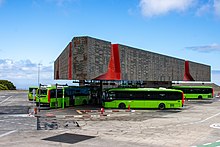
Public transport is available on most islands, varying widely in price and efficiency though—see the specific islands for more information. Do not expect bus drivers to know more than a couple of sentences in English or German, though they will try to be helpful.
By rental car
Renting a car is often the best option for discovering the remote and wildness regions— Tenerife might be an exception with its very efficient bus system. There are several well-established local rental companies that are well worth considering, already starting at €100/week or less, especially in off-season starting from April. On smaller islands like La Palma, the variety of companies is reduced though.
Local rental companies (always compare!):
- AutoReisen – Cheap, reliable and no deposit—from €9/day. Not very well known nor listed on the common price comparison websites. Pickup and drop-off is only possible at airports and on the same island. You must be at least 23 years old, and the rental price can only be paid by a credit or debit card in the driver's name. Ask around and you will see that people are very happy with them.
- PlusCar Rent a Car – Conditions are similar to AutoReisen—sometimes cheaper, sometimes more expensive. Likewise no deposit.
- CICAR a.k.a. Cabrera Medina – Reliable and well-known. A bit more expensive than AutoReisen and PlusCar, but with a wider range of models and a much denser network of rental branches all across the islands. No deposit for the car (but for the fuel).
- PaylessCar – Affordable and good.
- TopCar – From €12/day, but many people complain about consecutively being charged for fuel or cleaning. Deposit: €500.
- CarzRent (Tenerife only) – Always open, large deposits and avarage prices.
International rental companies:
- Goldcar, Dollar, Interrent – Not worth the stress—they are well known for ripping off their customers. If you still decide to use them, make sure you understand their terms & conditions, since there may be hidden fees or other tricks.
- Avis, Europcar, Thrifty, Hertz, Enterprice – Probably not worth the extra money, unless you have a membership thing or get a good discount.
The rental conditions of the local companies typically include unlimited mileage, a free second driver and free booster seats for your kids. As a general rule, the driver must be at least 21 years old. Fuel is not included, so make sure to fuel up before returning your vehicle to avoid additional costs.
As roads can often be narrow and unpaved, there is a real risk of damaging cars by ricocheting stones and pebbles. That's why most of the local companies include full insurance by default. When your rental car is fully insured, returning the vehicle is as simple as dropping off the key. Otherwise, inspect your rental car carefully before signing the contract, and consider adding insurance to the contract conditions for a surcharge.

Choose a car that is just large enough to fit all passengers and luggage, but try to keep it as small as possible. A small car is much easier to find a parking spot for in the historic centres of towns and cities, and passing another vehicle coming from the opposite direction becomes less of an adventure on narrow mountain roads. If you intend to do a lot of hiking, some extra ground clearance can occasionally come in handy, as paved parking lots can be a rare good in the mountains. Something like a Jeep Wrangler would be overkill for this, but if you've got money to burn, some of the local rental companies offer those too.
Taxis can be expensive, and inside a city they are not worth the money unless you are in a real hurry or cannot balance yourself after a shopping day.

If you want to travel between the islands, a good option might be to take a ferry . Most ferries are modern, but they are pricey unless you have a residency status. Ferrygogo has a good overview of the different routes that are served by the two main companies:
- Naviera Armas / Transmediterránea – Has many connections all across the region with a large mixed fleet of regular and high-speed ferries.
- Fred Olsen – Focuses on high speed connections.
There are also a couple of scheduled water bus and on-demand water taxi connections available for shorter trips:
- Lineas Romero – Short distance passenger ferries connecting Lanzarote with Fuerteventura, and La Graciosa with Lanzarote.
- Fuertecharter – Offers daily trips from Fuerteventura to Isla de Lobos and Lanzarote.
Check their website for the best prices. There is of course also a number of companies offering whale watching tours and the like.
Renting a yacht (or bringing your own) is also a great way to get around if you know what you're doing. The islands offer numerous harbors and more than 30 marinas to moor in. Sailing the waters can be challenging, though, so plan your trip carefully. Some nautical information and useful links are available at the official website .
If you are afraid of the sea, or get sick just by staring at a ferry, then a plane is what you need to travel between the islands. With the exception of Graciosa (which only has a helipad for medical emergencies) all of the larger islands are served by regional airlines:
That usually means a turboprop ATR-72 or ATR-42, especially when going to the regional airport of La Gomera or El Hierro that are too small for regular airliners to land on. They are perfectly safe and adequately fast, as you are likely to spend more time at the airport than in the plane. Especially between Tenerife and Gran Canaria there are also sometimes airlines that fly from further afield and stop in both islands—whether they sell tickets for that last leg alone is rather hit and miss, however.
- Teide National Park on Tenerife , with at its centre Mount Teide, the tallest mountain of Spain and one of the world's tallest volcanoes.
- The historic centre of San Cristóbal de La Laguna on Tenerife , dotted with colonial architectural gems.
- The subtropical rainforest of La Garajonay National Park on La Gomera .
- The archaeological site of Risco Caído on Gran Canaria .
- Isla de El Hierro
- Gran Canaria
- Fuerteventura
- Macizo de Anaga
Otherwise the islands impress with:
- Numerous beaches
- Volcanoes and volcanic landscapes great for hiking
- Historical architecture in the old town of Las Palmas
The euro (€) is the currency of the Canaries. The islands are outside the EU VAT area and have a separate sales tax from the VAT levied in mainland Spain.
Withdrawing money from Spanish ATM s will often result in an extra charge by the machine of €1–8. Cash can therefore be an alternative, but bears certain risks. However, since COVID credit cards are widely accepted as payment option, even for the tiniest amounts—cash-only is likely a source of tax evasion concerns. So, you are probably best off bringing a few €50–100 in cash and paying the rest with credit card, in case you want to avoid ATM fees.
Bizum is very popular with locals, and even some bars and restaurants—as an alternative to PayPal or Venmo. However, you need a Spanish bank account to use it.

- Goat – If any kind of meat is popular in the Canary Islands, it's goat. Locals and tourists equally will rave about good places they had goat in. If meat is your thing, you should definitely find such a place.
- Fish – You will find a wide variety of fish and seafood with restaurants that allow you to choose a fish from their selection (often hand caught), which they will cook for you. Two popular fish dishes from Tenerife are Caldereta, a meal with tomatoes, goat meat and potatoes and the Sancocho Canario, a salted fish, usually white, in a “mojo” sauce.
- Morcilla Dulce Canaria – A sweet blood sausage, almost a cake or a pudding, very popular on the islands. The taste feels delicious and disgusting at the same time.
- Plantain bananas – The Canary Islands are Europe's only exporter of these famously delicious, and usually fried bananas.
- Mousse de gofio or gofío amasado – A dessert made from gofio , miel de palma , and plantains.
- Barraquito – Also called barraco, is a coffee speciality from the Canary Islands and particularly popular on Tenerife but also on La Palma.
- Beer – There are three local breweries (Dorada, Tropical and Reina).
- Coffee – Cafe solo (espresso) and Cortado (espresso with milk) are the most ordered coffee variations on the islands.
- Rum – There are also well known rum distilleries, especially in Gran Canaria (Artemi and Arehucas). The ron miel is a sweet liquor made from rum and honey.
- Wines – There are several brands of wines in the islands. North of Tenerife, La Geria in Lanzarote or La Palma have excellent vineyards.
112 is the common emergency number.
Pickpocketing
While being a safe place, beware of pickpockets in major tourist and resort areas. Do not take electrical devices, credit cards or large amounts of cash to the beach, if you plan to leave your goods unattended while swimming, or when going out for clubbing. Already many mobile phones have been snatched around the islands from drunken lads, especially at night.
Natural hazards
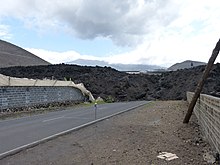
The islands are of volcanic origin, and the latest outbreak on La Palma in 2021 is proof that they are indeed still active. Outbreaks are rare, though, and any seismic activities are closely monitored to provide early warnings to the population. Moderate earthquakes can occur, but they typically do not exceed magnitudes of 5.5. Tropical storms sometimes reach the archipelago and can cause flooding and destruction in the coastal areas. All of the above mean that the terrain can be steep and unstable, making falling rocks and landslides a very real danger. If a mountain road or hiking trail is closed, that is usually because of this.
Episodes of heavy Calima (see Climate ) may lead to respiratory problems, coughing, nasal obstruction and itchy eyes. Consider wearing a N95 type respirator outside, hydrate enough, and stay indoors if it gets too dusty.
Heat strokes and sunburn are an underestimated risk, as solar radiation so close to the equator is much stronger than many European tourists expect. The latter is maybe even more of a concern in the high mountains, where the air is thinner and feels more breezy.
There are no poisonous or otherwise dangerous wild animals around, and while mosquitoes may bite you on occasion, they do not carry infectious diseases .
- Spain – Regular ferry connections exist between the Canary Islands and mainland Spain.
- Morocco – There used to exist a ferry connection, but nowadays using the plane is the only option.
- Madeira and Azores – Regular flights are available.
- Has custom banner
- Has mapframe
- Maps with non-default size
- Has map markers
- Eat listing with no coordinates
- Outline regions
- Outline articles
- Region articles
- Has Geo parameter
- All destination articles
- Pages with maps
Navigation menu
How to pick which Canary Islands you should visit in the summer

You may have heard of Tenerife or Gran Canaria, but there's more to Spain's Canary Islands than these two popular spots. The Canary Islands are popular with European travelers, but may not be on the radar of U.S.-based travelers thanks to their far-flung location closer to Africa than Spain. With United's new nonstop service from Newark (EWR) to Tenerife South (TFS), though, these islands are much easier to reach and much more accessible for American travelers.
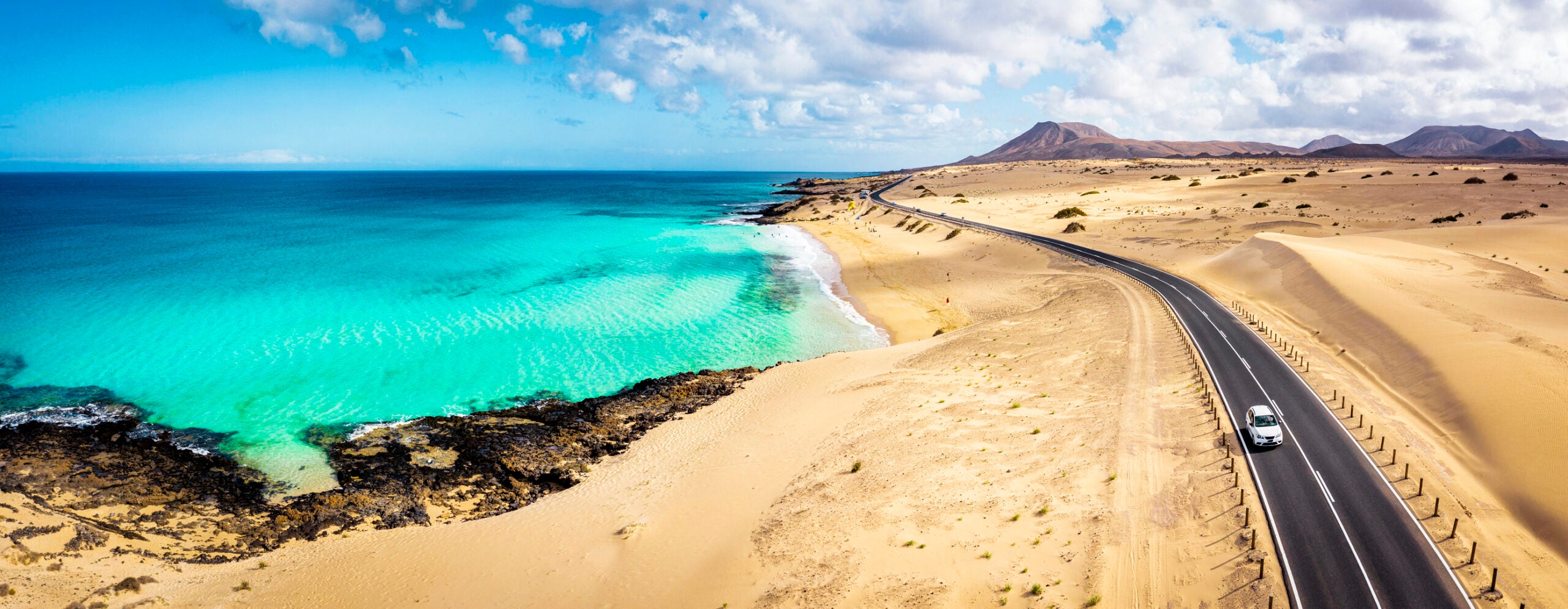
You may be surprised at what each of the seven different islands has to offer — from shopping, star-gazing and volcanic wine tastings to lava tubes, kite-surfing and rolling sand dunes. Don't forget about the beautiful long stretches of sandy shores and picturesque rocky outcrop over the sea.
If you're excited to have a Canary Islands vacation, but aren't sure where to go or which island is right for you, this guide can help you figure out which of these seven volcanic islands (Tenerife, Lanzarote, Gran Canaria, La Palma, Fuerteventura, El Hierro or La Gomera) is best for your trip.
Getting to the Canary Islands
United's new nonstop flight means that U.S. travelers can finally fly without having to stop in another Spanish or European hub. The flight launched on June 9, 2022, flying three times per week.
Hoping to reach another island that's not Tenerife? You'll have to change planes in Tenerife, or in a hub like Madrid. There you can get nonstop flights on various airlines, such as Iberia, Air Europa and low-cost carriers, to five of the seven islands: Tenerife, Gran Canaria, Lanzarote, Fuerteventura and La Palma. You can also reach many of the islands from European hubs, flying on full-fare carriers or low-cost carriers like Wizzair, Ryanair, Vueling, Jet2 or EasyJet.
The smallest islands, El Hierro and La Gomera, both have airports, but you can only fly to these islands from Tenerife and Gran Canaria. It's also possible to travel by ferry. La Gomera is reachable in under an hour by ferry from Tenerife.
For outdoor adventures: Tenerife

Tenerife is home to one of the largest and most impressive volcanoes in Europe: El Teide. Even though it may be a breezy, summery day down below at sea level, you might spot snow near the peak of the volcano. It's possible to get nearly all the way to the top of the volcano via an intense hike or a cable car, but a trip to the summit requires a permit .
Paragliding is a popular sport around Tenerife. You can also go canyoning on Tejina Mountain, an ancient lava dome system of craters and caves. If you still haven't had enough of volcanic remnants, explore one of the biggest lava tubes in the world, Cueva del Viento, with over 10 miles of passages.
Hikers should trek through Anaga Rural Park, home to the Mercedes Forest, which features a number of moss species and laurel trees.
A walk up (or drive, if you're feeling lazy) the Los Gigantes cliffs, aptly named due to their massive size, offers a stunning overlook of the cliffs with views of the ocean and Tenerife's famous black sand beaches. Or, enjoy them down below at Los Guios Beach, which sits in the shadow of these hulking rock formations.
For wine and culture: Lanzarote

Few places in the world can boast volcanic vineyards. However, you can enjoy sipping, tasting and exploring in Lanzarote's volcanic wine country while soaking up views of the neighboring national parks: Timanfaya and Los Volcanoes. Besides sampling the wine, you'll learn all about how grapes are grown in the ashy, volcanic soil with small stone circles protecting the vines from wind and other damaging weather conditions.
Beyond Lanzarote's famous vinos and volcanoes and beaches (Papagayo is one of the wildest on the island and Playa Blanca has fine white sand), visitors can take in art, architecture and design.
You'll find original creations by artist César Manrique in various spots around the island. One of the most interesting examples is his former home, where he incorporates the natural landscape of caves, cactus and volcanic rock and tunnels into his eclectic design aesthetic.
For beaches, sand dunes and spa visits: Gran Canaria

Gran Canaria has 37 miles of beaches. Whether you want shallow, family-friendly waters or a quiet, romantic escape, Gran Canaria has enough sand and sea for everyone.
Couples can savor the peace and quiet of a stroll along the cliffside path from Playa de Puerto Rico to Playa de Amadores. Once in Amadores, sample some Spanish cava while sunbathing at the chic Amadores Beach Club. For a relaxing, four-hour spa circuit, the Corallium Spa at the Lopesan Costa Meloneras menu features unique offerings like a saltwater cave, a zodiac room with water beds and a Himalayan salt room, among other installations ($45 per person).
Families should head to Maspalomas, a lengthy run of golden sands with numerous restaurants and amenities nearby. Kids will love playing in the giant sand dunes — it's almost like you're in the Sahara, but with the sparkling sea beyond.
To hang with the locals, wander along the cobblestone streets through the island's capital, Las Palmas. There, you can meander past a number of historic buildings and tan on a lively urban beach, Las Canteras.
For star gazing and tranquility: La Palma

La Palma was the world's first destination certified as a Starlight Reserve. The entire island is committed to protecting the quality of its night sky, making it one of the best places in the world to stargaze. You can admire the twinkling lights from anywhere on the island, but there are 16 special spots — miradores astronomicos — that have been designated as the best places for astrotourism.
There's plenty to do in daylight hours, too. UNESCO declared the entire island a World Biosphere Reserve. Make sure to visit the Caldera de Taburiente, a national park formed by volcanic landslides. There, you'll have a chance to soak in the quiet, peaceful atmosphere near waterfalls, streams and hilly pine tree forests. Or, consider exploring the island's hidden black sand beaches like the Playa de Nogales, reachable only after walking down a long staircase built into a cliff.
The less adventurous can take a stroll through the colorful village of Los Llanos de Aridane, where you can shop at the outdoor Sunday market and admire the street murals.
For water adventures and wind-swept sands: Fuerteventura

Fuerteventura is Spanish for 'strong winds.' Unsurprisingly, the island is famous for having some of the world's best kite-surfing and windsurfing.
If you'd prefer to stay on dry land, you can admire the many talented surfers year-round beachside. Avid water sports participants and spectators should plan to go during the Windsurfing & Kiteboarding World Cup. The popular event occurs every summer on Playa Barca, near the island's southern tip.
True beach bums may prefer to relax on mile-long sands like those belonging to Flag Beach near the resort town of Corralejo. For a wild, wind-swept paradise, El Cotillo is a beach on the north end of the island with a cove of crystalline sands surrounded by clear waters, and the exotic golden sands of Cofete, part of the Jandia Natural Park, are near-empty year-round.
Day trips to the tiny volcanic island of Lobos are perfect for those looking to really escape. Snorkelers will spy an abundance of marine life as the whole island is a nature reserve. Also, bird enthusiasts can view many species of sea birds on the island.
For eco-travelers and divers: El Hierro

Sustainable travelers should look no further than the smallest of the seven Canary Islands, El Hierro. You won't find any high-rise beach resorts blocking your sea views. Unlike many of the other Canary Islands, there are regulations that limit construction to just two floors. Besides being a UNESCO World Biosphere Reserve, El Hierro uses mainly renewable energy (both wind and hydro) for power.
The island's status as a biosphere reserve is designated above and below the water. The sea surrounding El Hierro features almost 50 dive sites. Visibility can be as far as 160 feet on a typical day of Canarian sunshine. You may spot marine life like parrotfish, barracudas, dolphins, manta rays or even whales and sharks.
Photographers – or those simply wanting a unique view – should check out spots like Roques de la Bonanza or Salmor. There you'll find rocks jutting out from the sea formed by underwater landslides and volcanic eruptions.
For hikers and nature buffs: La Gomera

La Gomera is perfect for active travelers who love to be near the ocean and out in nature but get bored just lying on the beach all day.
Whether you prefer intense treks or light walks, the island's 400 miles of trails offer something for every style of hiker. Many of these trails run through the Garajonay National Park, a subtropical forest famous for its laurel trees, that sits at more than 3,200 feet above sea level.
Another impressive outdoor wonder is the Organos Monument. This cliff that resembles a massive pipe organ was formed by columns of basalt dropping down toward the ocean.
Rock climbers should head to the Los Roques area, where giant rock formations jut into the sky. The three most famous are Roque de Agando, Roque de la Zarcita and Roque de Ojila. Although these three are declared national monuments and you can no longer climb them, there are plenty of nearby trails (both climbing and hiking spots) offering magnificent views of the rocks.
- Gran Canaria
- Fuerteventura
- Tenerife - Best Places to stay
- Gran Canaria - Top Places to stay
- Lanzarote - Best Accommodation
- Fuerteventura - Best Places to Stay
- La Gomera - Where to stay
- La Palma - Best Accommodation
- El Hierro - Best Areas To Stay
- Tenerife weather
- Gran Canaria weather
- Lanzarote weather
- Fuerteventura weather
- La Palma weather
- La Gomera weather
- Tenerife Events
- Gran Canaria Events
- Lanzarote Events
- Fuerteventura Events
- La Palma Events
- La Gomera Events
- El Hierro Events
- Tenerife Attractions
- Gran Canaria Attractions
- Lanzarote Attractions
- Fuerteventura Attractions
- Tenerife Tours
- Gran Canaria Tours
- Lanzarote Tours
- Fuerteventura Tours
Travel advice
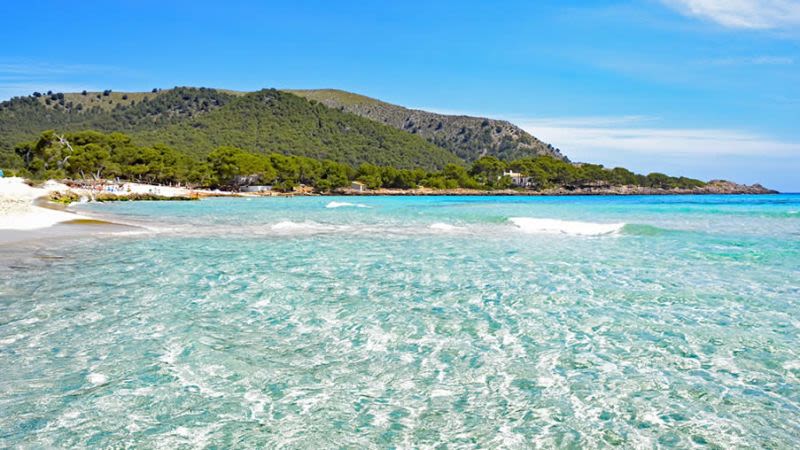
Canary Islands or Balearics - Which islands are better? 2024 Guide
Spain is probably the best holiday destination for a warm and sunny holiday in Europe, no matter the season. But which island is the best choice for your next sunny holiday?
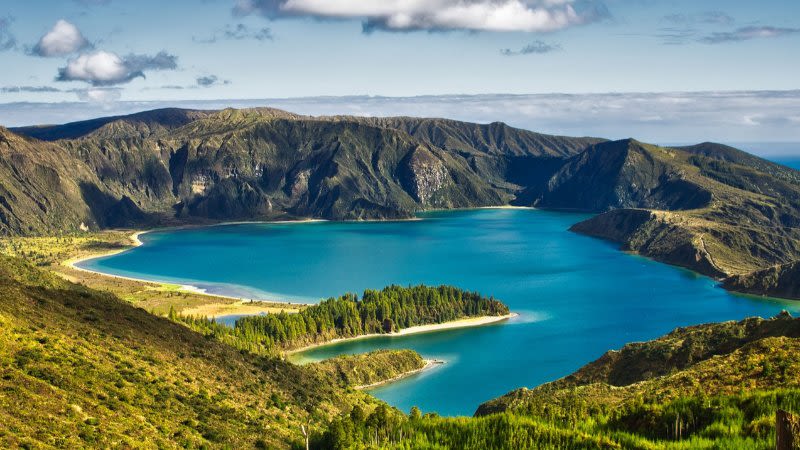
Canary Islands or Azores? Where to go on holiday?
Are you trying to choose between the Azores and the Canary Islands for your next holiday and you find it hard to decide? Both archipelagos are beautiful places to visit but they have different characteristics, so we'll try to help you decide which one is the better destination for you.
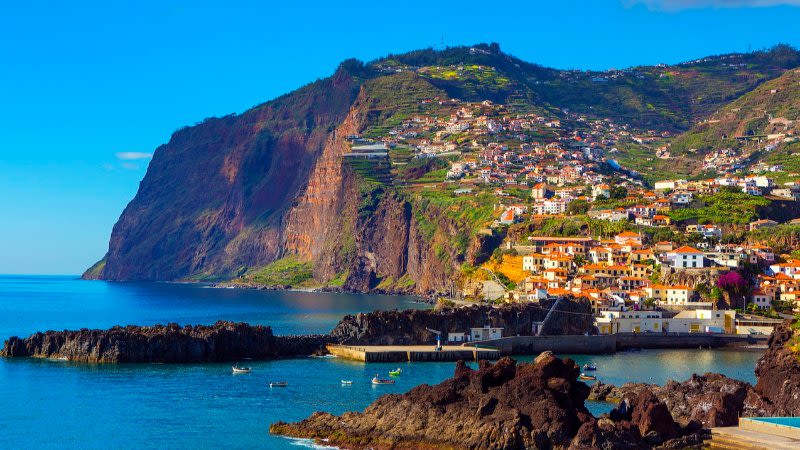
Madeira or Tenerife and the Canary Islands? Where to go?
If you're thinking of visiting either the Canary Islands or Madeira for the first time, you might be wondering which destination might be the best for you. Is Madeira better than Tenerife or the Canary Islands in general?

Is tap water safe to drink in Tenerife and the Canary Islands in general?
Many first-time visitors to the Canary Islands are wondering if the tap water on the islands is safe to drink and brush their teeth with, as they may be accustomed to these types of restrictions based on their past experience from visiting other tourist destinations.

Mosquitoes in Gran Canaria - Is there a risk for infectious diseases?
Gran Canaria and the Canary Islands in general, have a relatively low presence of mosquitoes compared to other popular tourist destinations located in areas that have a tropical climate.

Are there dangerous mosquitoes in Tenerife and the Canary Islands?
Many visitors to the Canary Islands, especially those heading over to the archipelago for the first time, have this dilemma of whether they'll have to face a lot of mosquitoes in the Canary Islands or not.
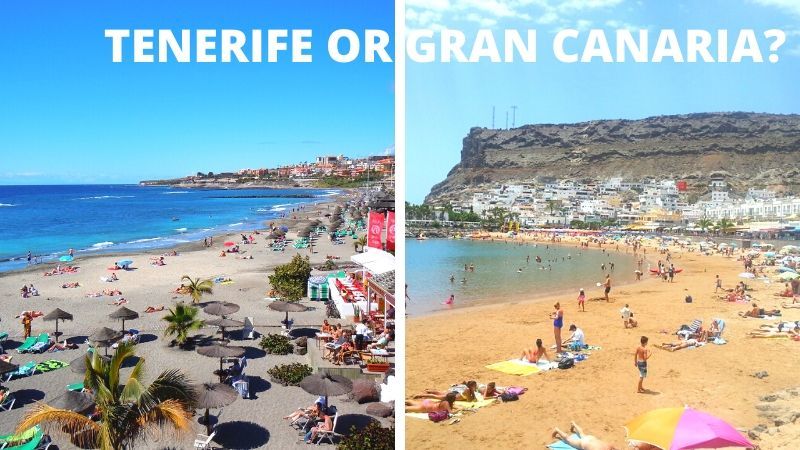
Tenerife or Gran Canaria? Which Canary Island is better?
Of all the Canary Islands, people usually tend to make a comparison between Tenerife and Gran Canaria and sometimes between Lanzarote and Fuerteventura. But every island has its own charm and unique characteristics, which makes it special and different from the rest in the archipelago.
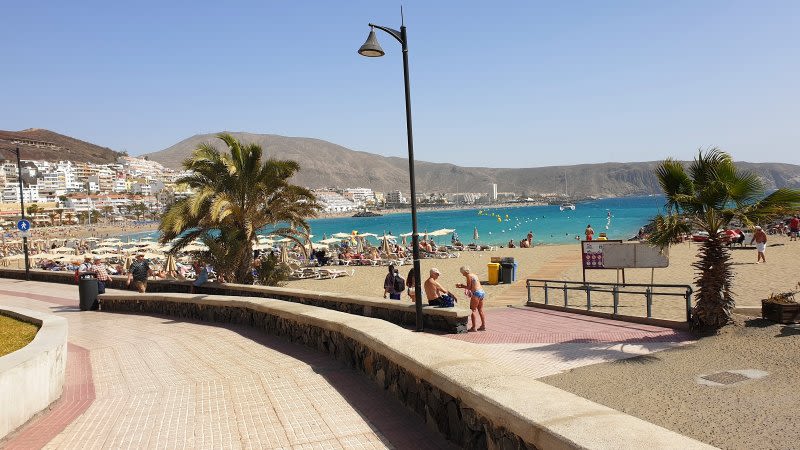
Tenerife Prices in 2024 - How Expensive Is Tenerife?
Planning your upcoming trip to Tenerife and wondering how much spending money you will need? In this article, we will try to show you and give you some examples of how much things cost in Tenerife and what travel budget you need as a holidaymaker in order to visit this popular Canary Island.
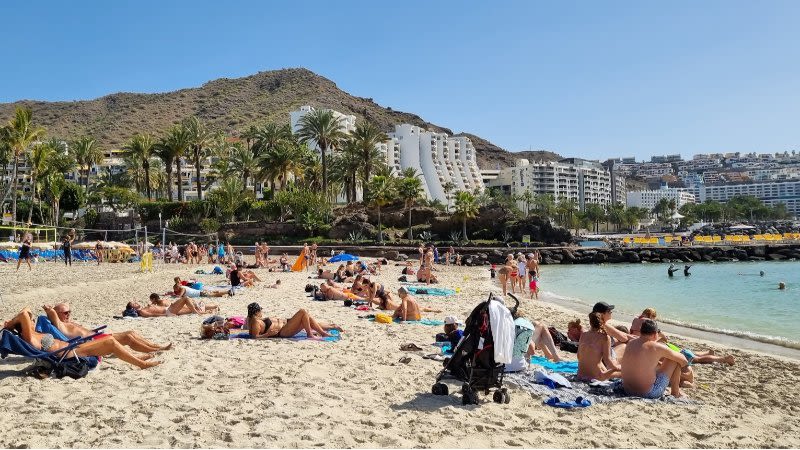
Warmest Canary Island in Winter - December, January & February
The Canary Islands have become a very popular destination during the last years, especially during the winter months. The no.1 reason is the warm weather, so if you want to know which is the hottest Canary Island in winter, depending on the month when you plan to visit, we have made a comparison between the most visited destinations in the archipelago.
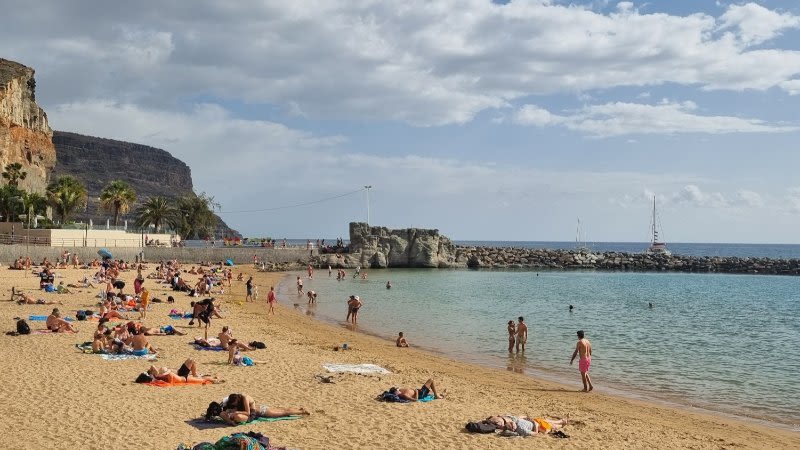
10 Reasons to Visit the Canary Islands in Winter
If you're thinking of visiting the Canary Islands in winter and you're still having doubts and wondering if it's a good idea, take a look at our list to understand why the Canaries are the best destination for winter sun in Europe.

Do visitors have to pay a tourist tax in the Canary Islands?
As the Canary Islands are one of Spain's most popular tourist destinations, many visitors wonder whether they'll need to pay a tourist tax, similar to those that already exist in places like Catalonia or the Balearic Islands.
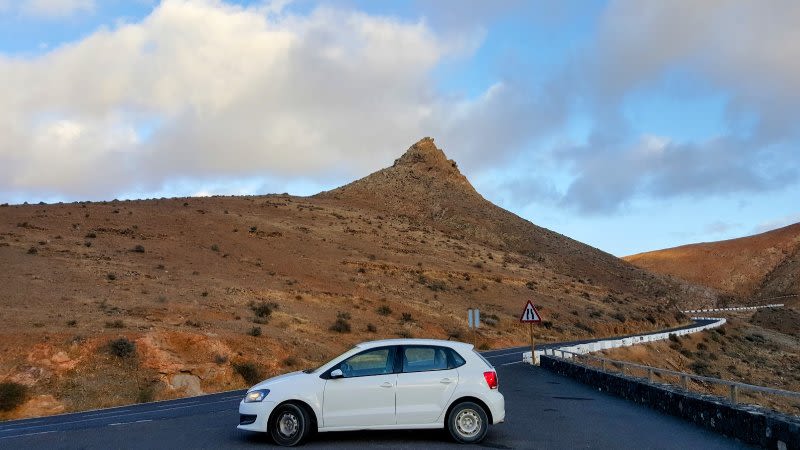
Best car hire company in Fuerteventura - Discover Fuerteventura by car
Hiring a car while on holiday in Fuerteventura is a very popular option for many tourists, as you can explore the island at your own pace, stopping along the coast and exploring various beaches, as well as visiting the inland and beautiful places like Betancuria.

Coronavirus in the Canary Islands - 29 March 2022 (Biweekly reports)
Wondering what is the situation in the Canary Island in regards to the Coronavirus pandemic? Did you have a holiday planned in the Canary Islands which is now affected by the current situation with the Coronavirus spread?
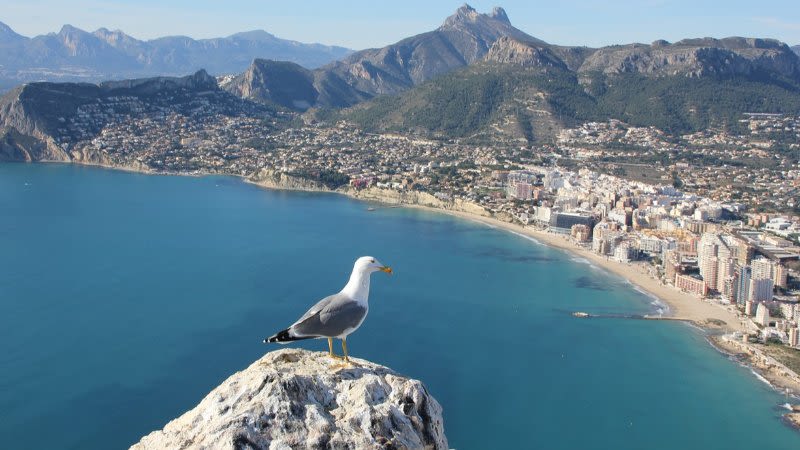
Winter sun in Spain: 10 warmest places to visit in Spain in winter
Spain is a popular holiday destination for people from all over the world and it is constantly among the most visited countries in the world because it has a multitude of attractions and beautiful cities, great food, incredible beaches, friendly people and good weather.

Jellyfish in the Canary Islands
Did you know that there are over several thousand species of jellyfish known in the world right now? However, you can rest assured when planning a holiday to the Canary Islands, because there aren't that many species of jellyfish found in the waters around the archipelago.

The Canary Islands want to become "the office with the best climate in the world"
Turismo de Canarias has announced a strategy according to which they plan to promote the islands as 'the office with the best climate in the world'. These will be developed throughout this year to attract remote workers from around the world they will have a budget of 500,000 euros to promote the destinations in this sense.
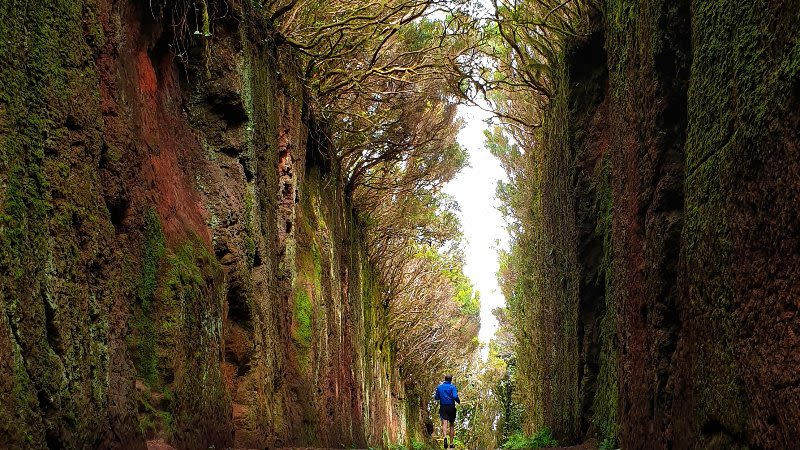
10 Most Instagrammable places in Tenerife
Planning a trip to Tenerife and you're looking for the best places to take amazing Instagram photos to post? Well, in that case, you've chosen a great holiday destination, since Tenerife is full of great places to visit, where you can take fabulous photos, especially if you do a bit of planning ahead of time.

Digital nomads in the Canary Islands - Which is the best island?
Since the start of the pandemic, the Canary Islands have become a place of interest for digital nomads and remote workers, especially ones coming from Europe.
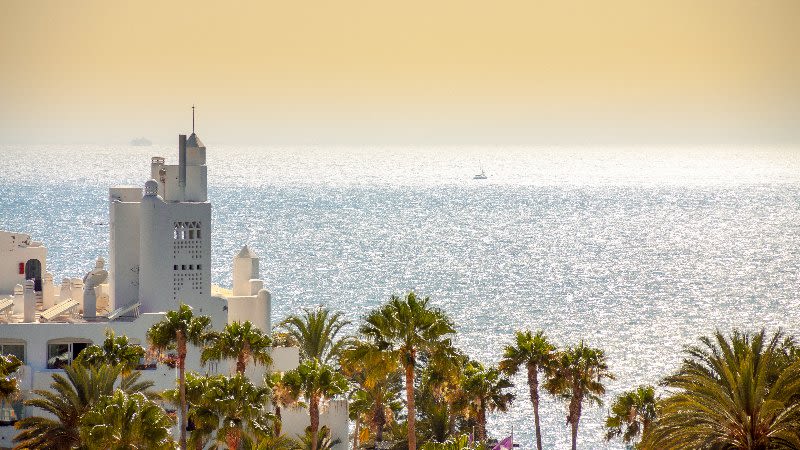
10 Warmest Places in Europe in Winter - December, January & February
Winter in Europe usually means low temperatures and snow, depending on the country that you're planning to visit. However, if you're not a fan of snow and cold winter weather, there are still a few places in Europe where the temperatures are mild and the weather allows for visitors to enjoy some much-needed winter sun.
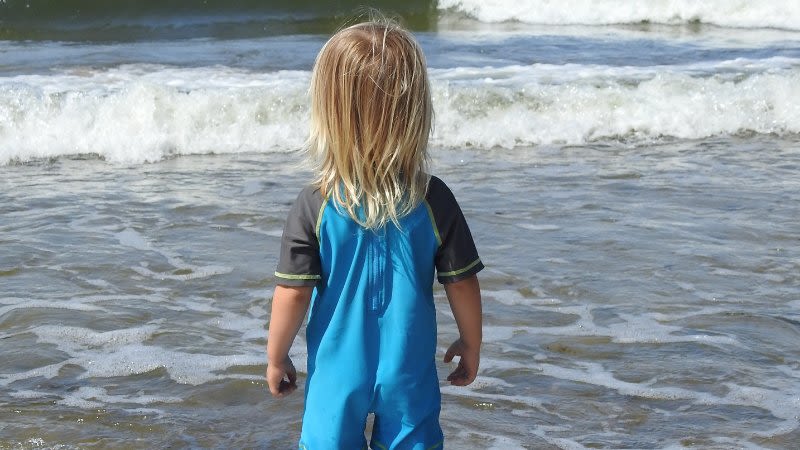
Family Holidays in Fuerteventura: Best Resorts & Places to Stay
Fuerteventura, the second-largest Canary Island, is a great place to visit for families since you have endless beaches, beautiful weather all year round and the atmosphere on the island is laid-back and relaxed.

Tipping in the Canary Islands: How much to tip and when
This is a popular question from people who come on holiday to Tenerife and the Canary Islands in general for the first time and don't know what to expect. Tipping can be a confusing topic depending on where you're coming from since there are big differences across different cultures.
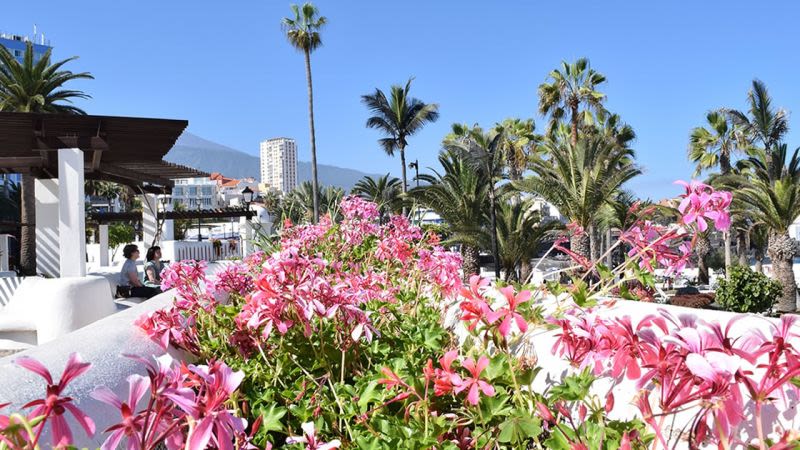
Best Time to Visit Tenerife - When to go for a sunny holiday
Tenerife is the largest and most popular of the Canary Islands and during the past years, tourism has grown, reaching 6 million tourists in 2016. With these numbers, it's clear that the island has become a popular tourist destination, especially for European visitors.
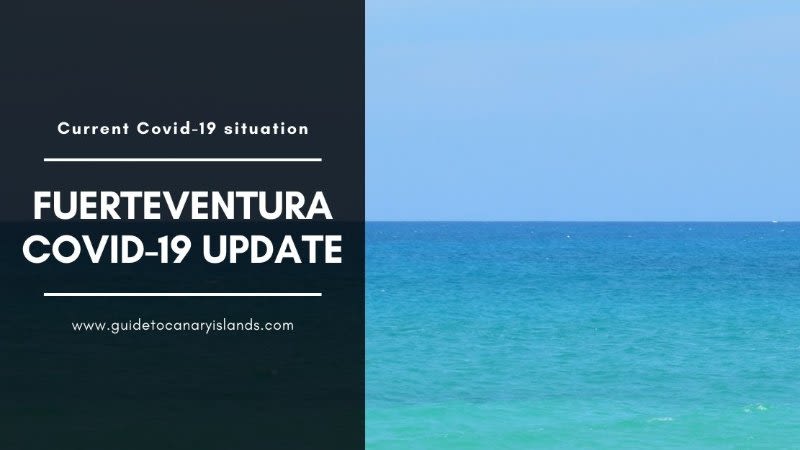
Covid-19 in Fuerteventura - 4 new cases & 142 active now on September 14
This is our dedicated page for updates on the Coronavirus situation in Fuerteventura, one of the Canary Islands in Spain. For those planning a visit to the island and wondering if it's safe to come or not, we will publish here the info regarding the total number of cases, current active cases, as well as any other details shared by the local authorities.

What are the new rules for holidays in the Canary Islands & Spain in 2021?
What is the new normality in Spain and what are the rules for foreign visitors traveling to Spain this summer? The summer season of 2020 comes with some changes and new rules that we all have to respect in order to keep everyone safe.

Canary Islands Announced Changes on Masks Regulations
The Governing Council approved, in its extraordinary session, the updating of certain prevention measures established by the Government Agreement of June 19, 2020, in order to better handle the health crisis caused by COVID-19.
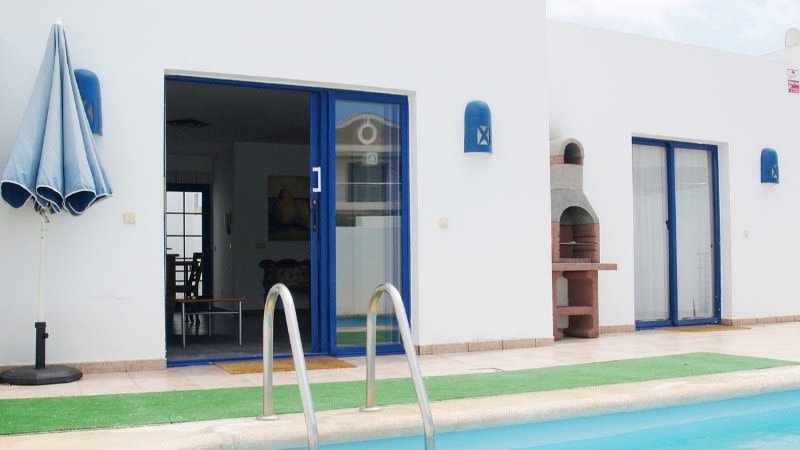
Is Lanzarote Safe to Visit for Tourists? Advice for Safety in Lanzarote
If it's your first time planning a visit to Lanzarote (or the Canary Islands in general) you may be wondering if it's a safe destination and which places you should avoid.
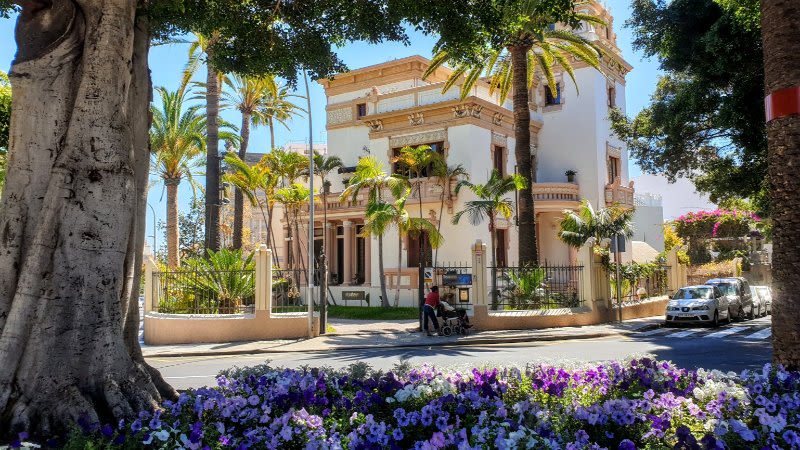
One day in Tenerife - Advice & Itinerary for Cruise Passengers
Tenerife is a great place to visit, even if you're only stopping over for a day during your cruise. As the most visited island in the archipelago, Tenerife offers plenty of activities for everybody and after your short visit, you will definitely want to come back to spend more time here.
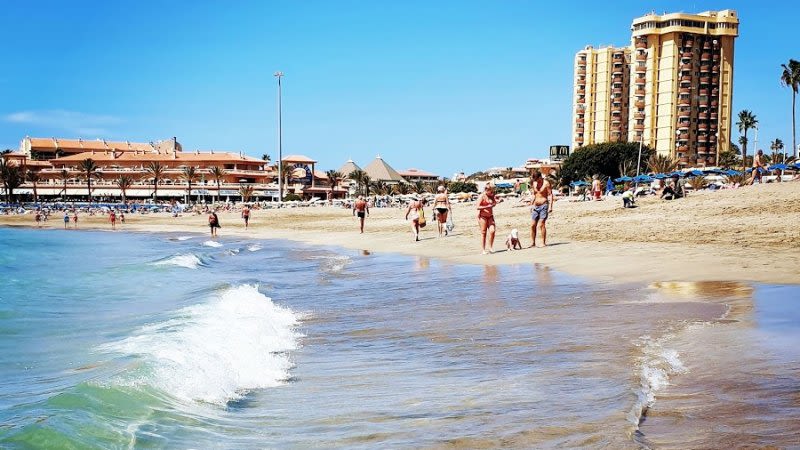
Is Tenerife Worth Visiting? - Our Top 10 Reasons To Visit Tenerife
If this is your first time planning a holiday to Tenerife, you may find yourself asking if this destination is worth visiting or it's right for you and your family. We are declared fans of Tenerife and come over as often as we can, so in this article, we'll try to present the reasons why you should also come and visit Tenerife.
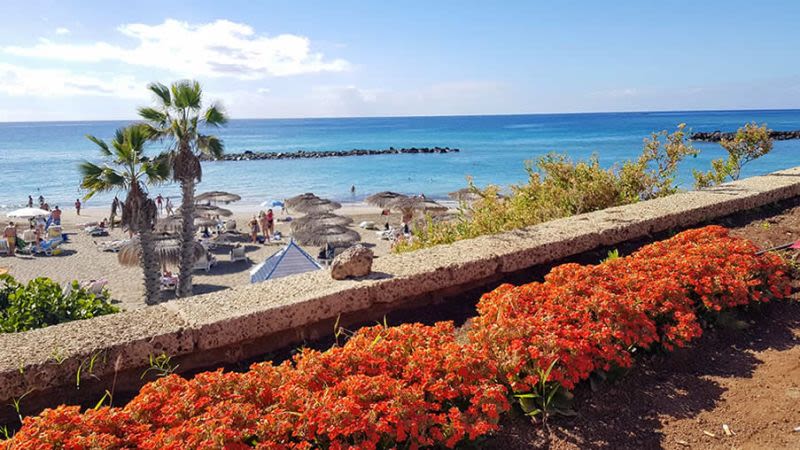
Tenerife itinerary: How many days you need to visit Tenerife
If you are planning your first holiday to Tenerife you may be asking yourself how much time do you need in order to see the island and discover some of the best sights.
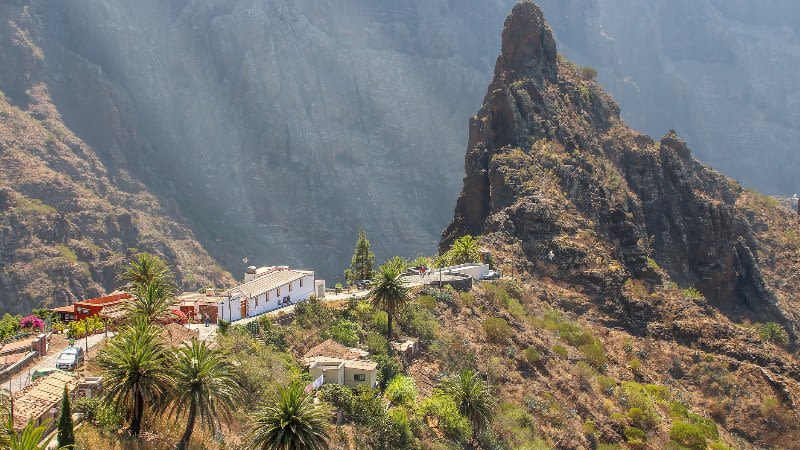
Tenerife in Autumn - What To Expect From The Weather?
Tenerife is a year round holiday destination, with warm weather and sunny days during all seasons, while the temperatures stay fairly constant throughout the year, as opposed to the rest of Europe where they vary by a lot between winter and summer.
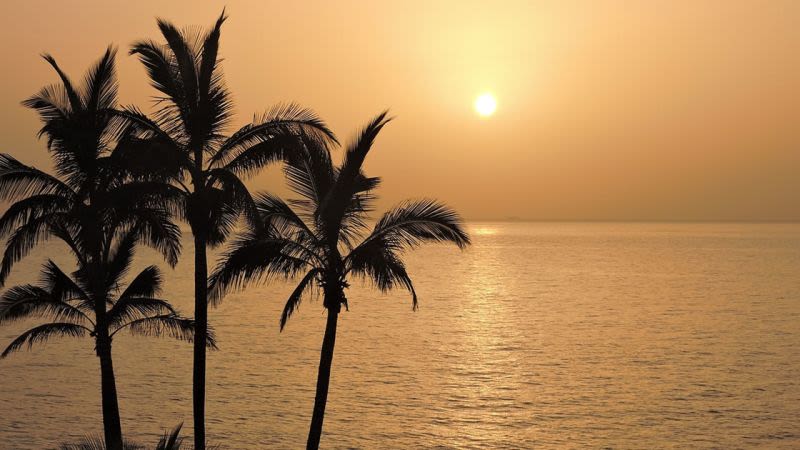
Best Canary Island to visit - Which one to choose?
If we lived in an ideal world, we wouldn't have to have to choose between travel destinations and we would simply go everywhere we wanted.
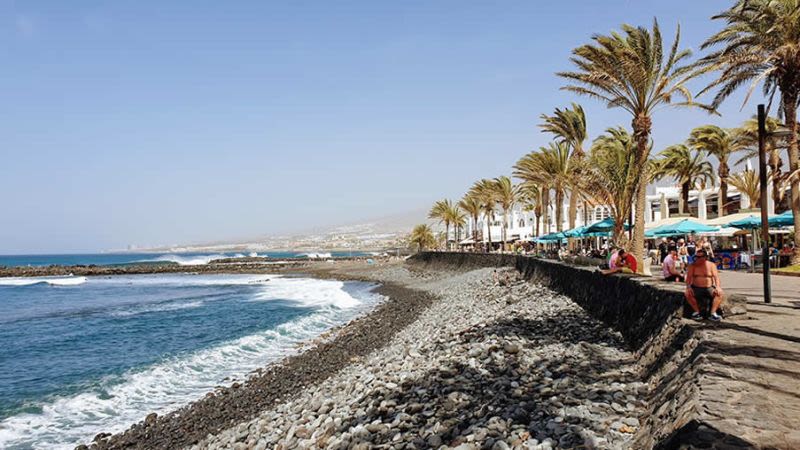
Best Time To Go To The Canary Islands - When To Visit
The Canary Islands are a popular holiday destination, especially for Brits and Europeans in general, who are looking for a sunny place where they can escape the cold weather back home in winter.
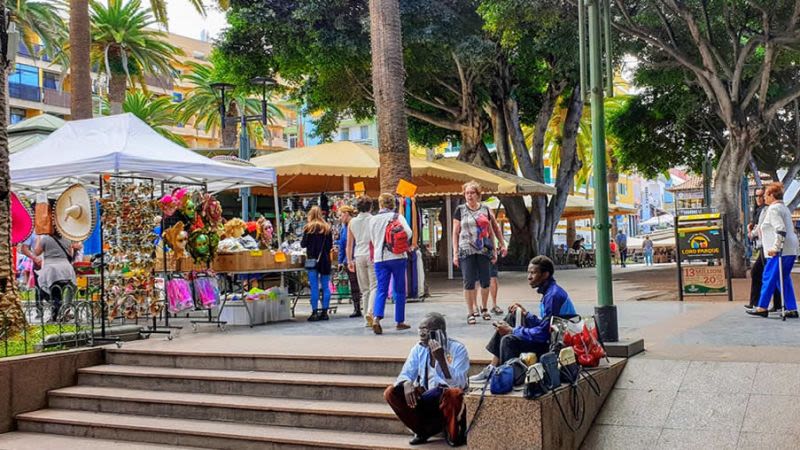
Is Tenerife Safe For Tourists? - Safety Advice Canary Islands
Tenerife is a super popular travel destination, especially among visitors from the UK and other European countries.
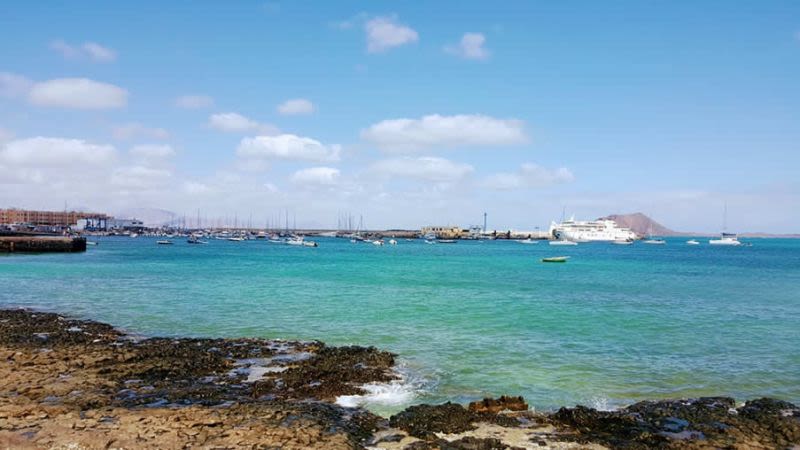
Best Time to Visit Fuerteventura - Which Month Is The Best?
Fuerteventura is the second largest Canary Island after Tenerife and it's mostly recognized for its amazing beaches, some of the best in all of the archipelago.
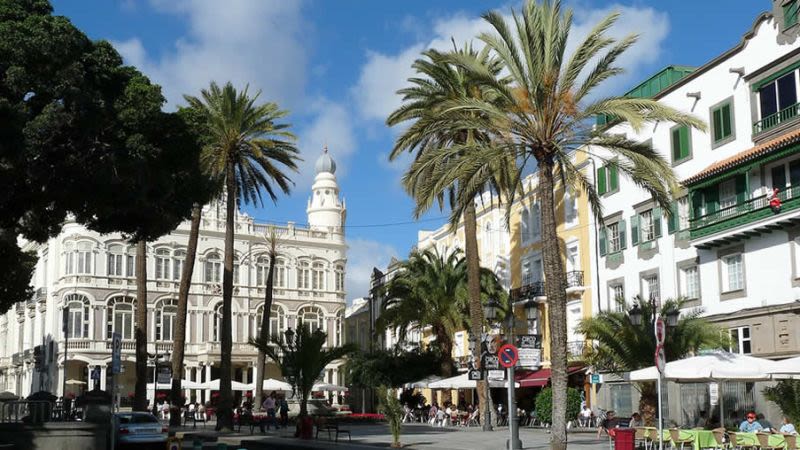
Best Time to Visit Gran Canaria - When To Come On Holiday
Gran Canaria is the second largest of the Canary Islands in terms of population and tourism, especially among visitors from European countries like the UK, Germany, Poland and all of Scandinavia.The island is filled with lovely beaches and also offers a diverse landscape, with many things to do for those visitors who wish to explore its best sights and attractions.
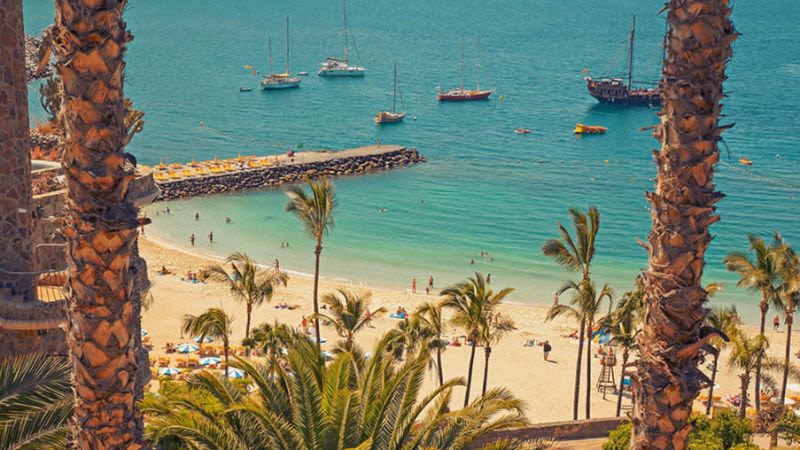
Hottest Canary Island in Summer - Where to go for a beach holiday?
It's no secret that the Canaries are a popular destination during the cold season, as they are the warmest destination in Europe during winter, due to their sub-tropical desert climate.

What to pack for a holiday to the Canary Islands
The Canary Islands enjoy a privileged climate all year round, with mild temperatures in winter that allow visitors to spend time on the beach or even swim in the ocean.
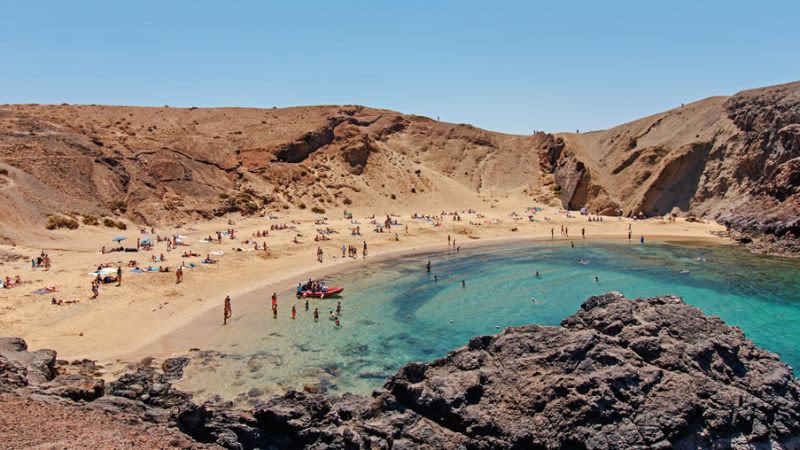
Best Time to Visit Lanzarote - When Should You Go On Holiday?
Lanzarote, as the rest of the Canary Islands, is a year round destination, so anytime you'll decide to come over, it will most likely be sunny and warm.

How to get the access permit for Mount Teide
Mount Teide is the 3rd highest volcano in the world and the highest peak in Spain, so normally many of the visitors who come to Tenerife wish to go up to the top.

What to wear in Tenerife - Packing List Included
Tenerife is advertised as the island of the eternal spring, so people are often confused as for what to pack for their holiday.
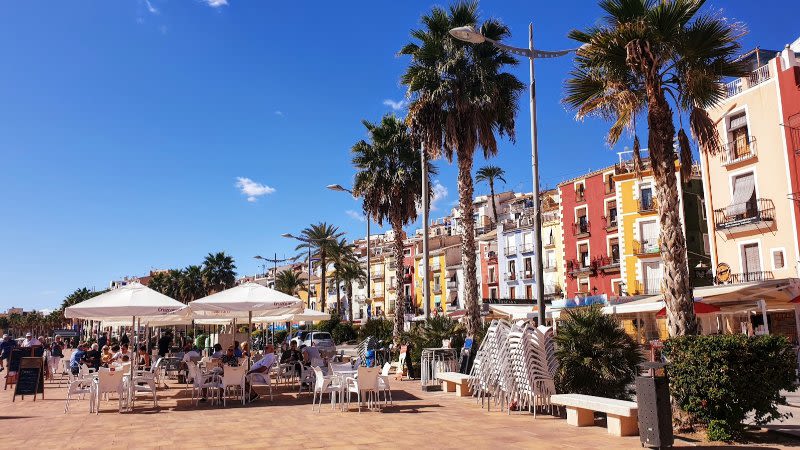
Do you need a minimum of 113 Euros per day to travel to Spain? What is the legal requirement?

Does the six drinks rule apply to Tenerife or the Canary Islands in general?
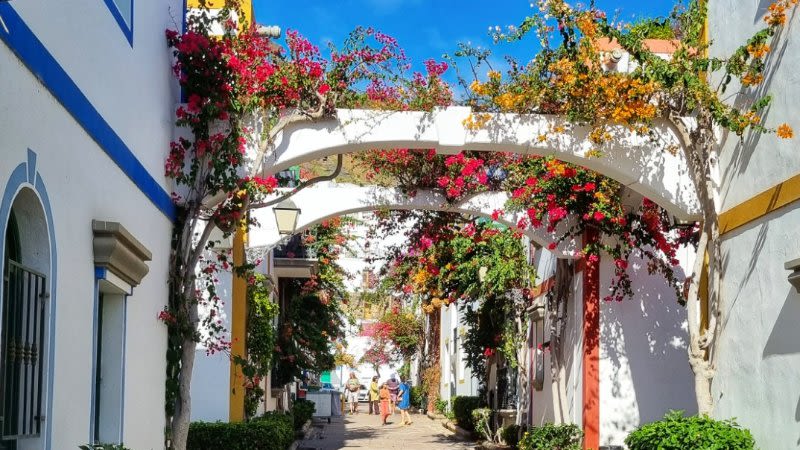
12 Best things to do in Puerto de Mogan, Gran Canaria - 2024 Guide
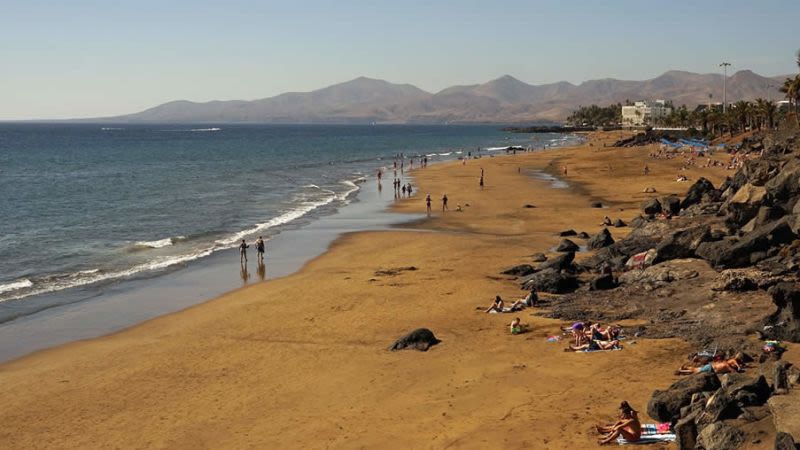
20 Best things to do in Puerto del Carmen, Lanzarote (2024 Guide)
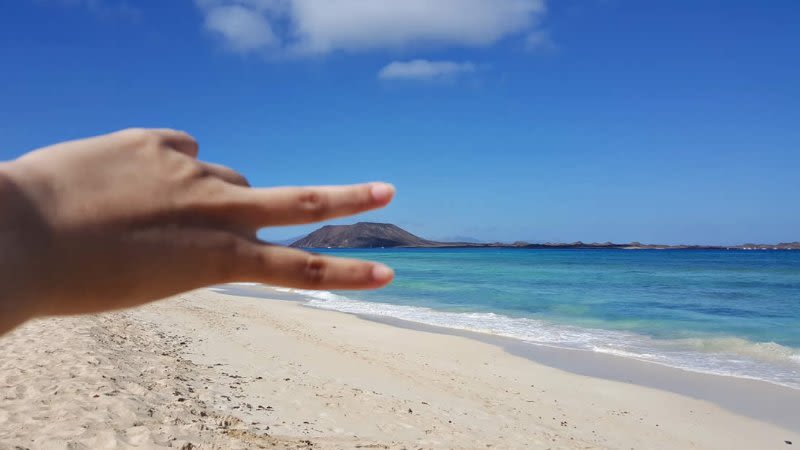
16 Best Things To Do in Corralejo, Fuerteventura - 2024 Guide
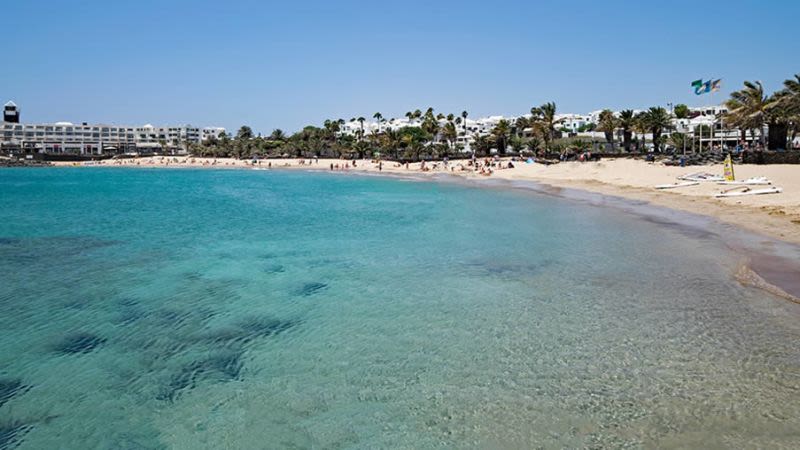
17 Things To Do in Costa Teguise, Lanzarote - Best Places to Visit
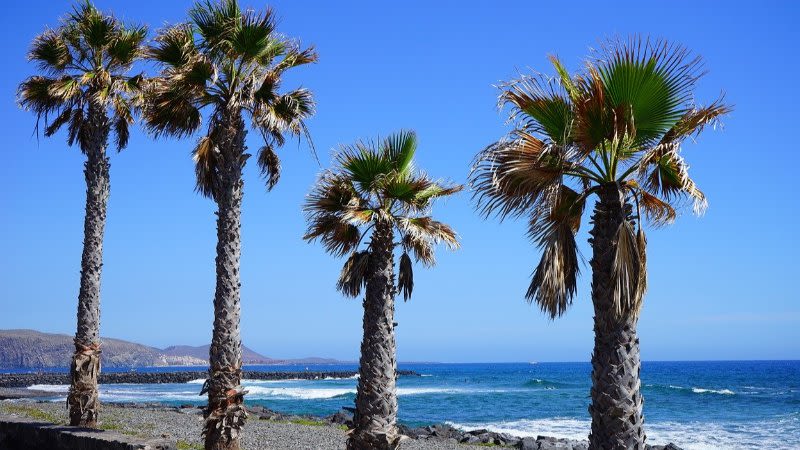
10 Best Things To Do in Playa de las Americas, Tenerife
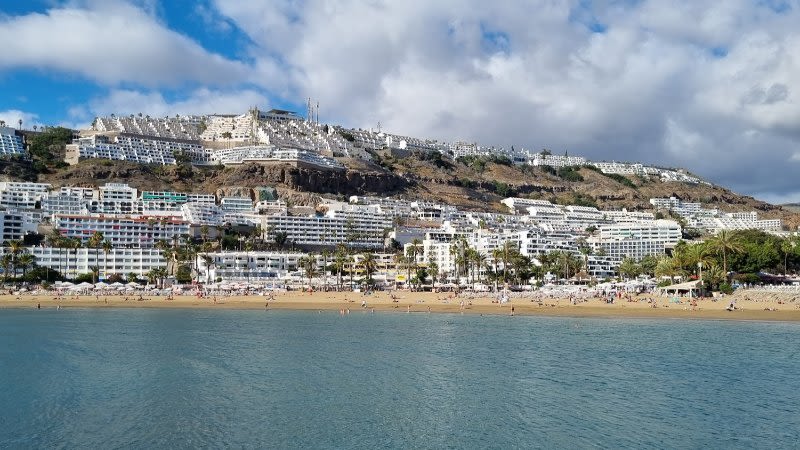
13 Best Things To Do in Puerto Rico de Gran Canaria
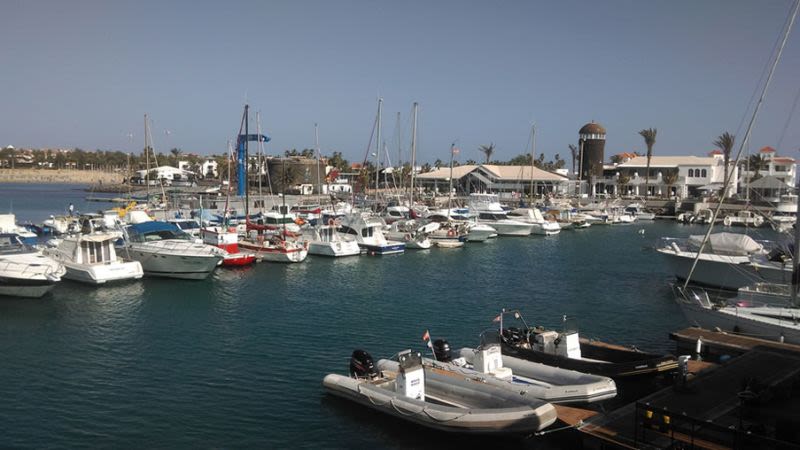
18 Best things to do in Caleta de Fuste, Fuerteventura
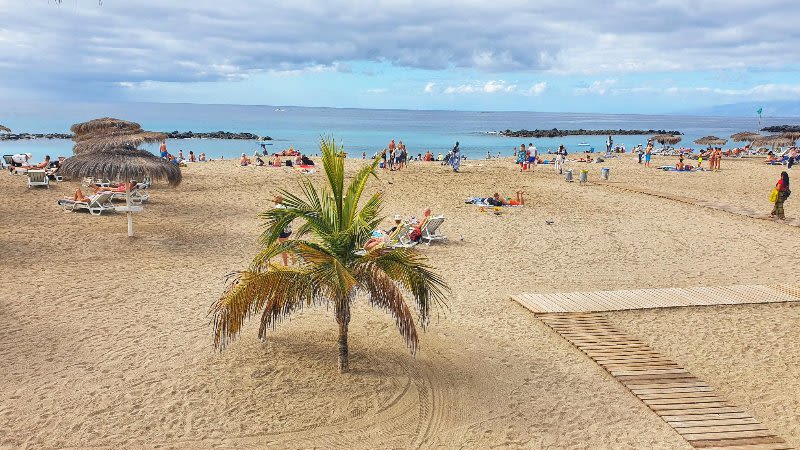
17 Best things to do in Costa Adeje 2024 - Top Attractions

15 Best things to do in Maspalomas, Gran Canaria
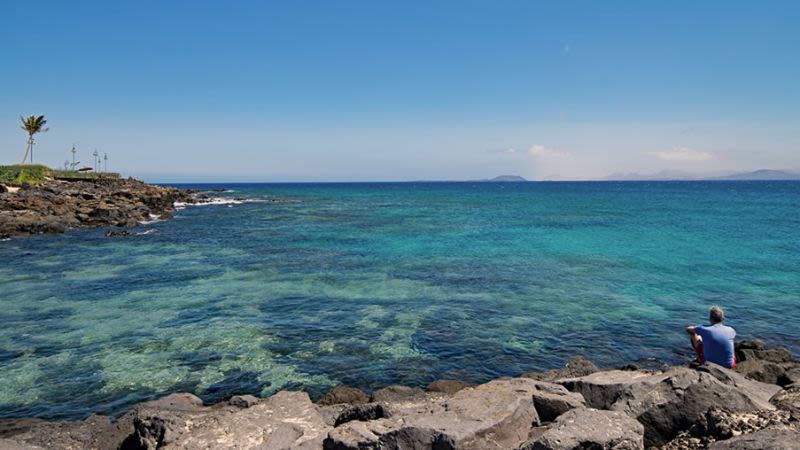
18 Best Things To Do in Playa Blanca, Lanzarote
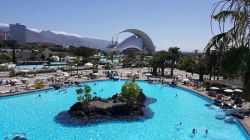
Tenerife Gran Canaria Lanzarote Fuerteventura La Palma La Gomera El Hierro
- La Graciosa
- Fuerteventura
- Gran Canaria
- Means of Transport
- Natural Parks
- Theme Parks
- Aquatic and Theme Parks
- Hotels in Tenerife
- Hotels in Gran Canaria
- Hoteles de Fuerteventura
- Hotels in Lanzarote
- Hotels in La Palma
- Hotels in La Gomera
- Hotels in El Hierro
- Apartaments
- Canary Islands
- Prepare your holidays
- What to see
- Canary Food and Drinks
- Privacy and Policy
Travel by plane between the Canary Islands
Find out how to travel by plane from one island to the other in the canary islands., travel by plane in the canary islands..
Traveling by plane is the quickest way of traveling from one island to the other in the Canary Islands. But, even though all the main islands have an airport, not all of them have flight connections between each other. If you’re in Lanzarote looking for a way to go to Fuerteventura you should catch the boat as it will only take you a few minutes and the airline companies don’t operate this journey.
Moreover, if you’ve rent a car or brought your own car it might be better to go by boat as you’re allowed to take your car.
List of the most used/recommended means of transport:
- Means of transport to travel inside an island:
- How I can go from one island to another?
- Means of transport to travel between different islands:
- Rent a Bike
Flight Offers:
Compare flight offers and book in advance to save some money.
Book now your Hotel or Apartment:
- Hotels in Arona
- Hotels in Costa Adeje
- Accommodation in Los Cristianos
- Accommodation in Santa Cruz de Tenerife
- Hotels in Las Palmas de Gran Canaria
- Hotels in Maspalomas
- Accommodation in Playa del Inglés
- Hotels in Corralejo
- Apartaments in Costa Teguise
- Hotels in Valle Gran Rey
Find the largest offer in car rental for your holidays:
20 of the best things to do in Spain

Mar 7, 2024 • 10 min read
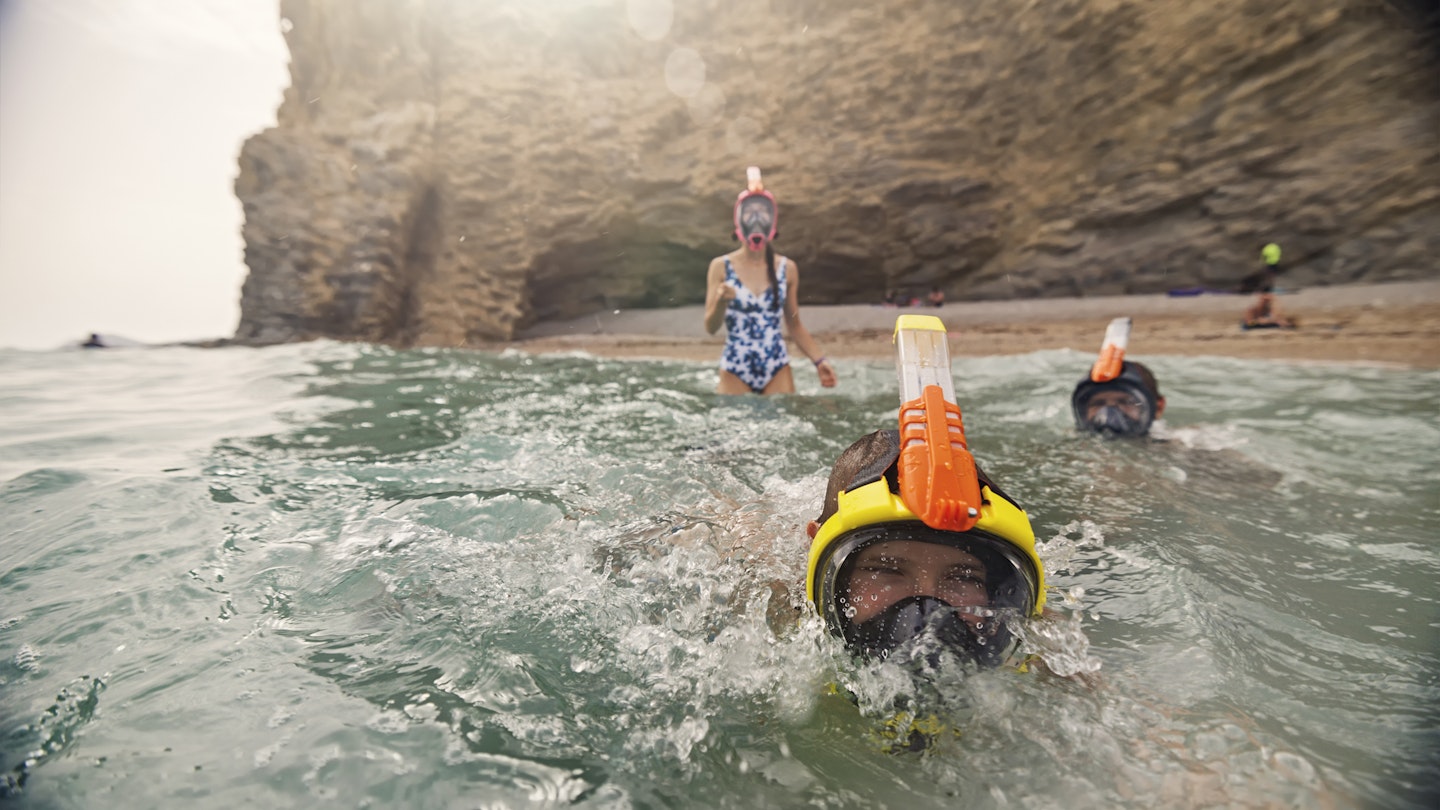
From relaxing on beaches in the Canary Islands to wine tasting in La Rioja, here are Spain's top experiences © Imgorthand / Getty Images
From the snow-dusted, ski-worthy Pyrenees to the glinting golden beaches of the south, Spain unfolds in a series of ever-changing landscapes, traditions, attractions, cuisines and even languages.
Its vast natural spaces are a dream for those who love the great outdoors , while the cities, towns and villages fizz with energy, cultural jewels and mouth-watering gastronomy. But where to start? Whether you’re keen to get stuck into dazzling architecture, cycle to a secret beach or spend your days tasting wines, tapas or olive oils, here are 20 unmissable things to do in Spain.
1. Hike or ride to a secluded beach
Hitting the beach is a national hobby here, and you’ll inevitably fall in love with your own pocket of Spain’s 5470km-long (3400-mile) coastline. Leave the crowds behind by escaping to tranquil, hidden coves that can only be reached on foot, on a bike or on horseback. Head out hiking along Menorca ’s pine-shaded Camí de Cavalls (a restored 14th-century path) to reach turquoise coves; ramble between wild, pebble-studded bays along the Costa Brava; walk to remote sugar-white strands on Andalucía’s breezy Costa de la Luz (also great for kitesurfing); and find protected nudist beaches in Almería’s Parque Natural Cabo de Gata .
2. Taste Spain's best wines
From headlining grape-growing regions such as La Rioja and the cava-making Penedès to Andalucía’s unmatched Sherry Triangle, Spain’s 70 Denominaciones de Origen (Denominations of Origin) roll out a tantalizing line-up of wines. Many wineries here are now experimenting with unusual combinations, pushing forward sustainable production methods and working to recover rare ancestral grapes.
For the most exciting tours, seek out small, independent bodegas (some still run by their founding families) and track down lesser-known wine-making areas such as Galicia’s up-and-coming Ribeira Sacra, Catalonia’s cool Costers del Segre or the innovative El Hierro and Lanzarote DOs in the Canary Islands. Salud!
Planning tip: If you'd prefer to be the designated drinker rather than the driver, here are some other ways to travel around in Spain .

3. Dive into art (and nightlife) in Madrid
Spain’s capital is one of Europe’s greatest cities for art lovers, with a clutch of prestigious galleries where you’ll meet such icons as Picasso’s Guernica ( Centro de Arte Reina Sofía ), Van Gogh’s Les Vessenots in Auvers ( Museo Thyssen-Bornemisza ), and Velázquez’s Las meninas and Goya’s Saturno devorando a su hijo ( Museo del Prado ). More hidden thrills range from sketches by poet Federico García Lorca to mysterious works by Antoni Tàpies. Pre-book tickets online and explore galleries first thing; some even offer "out of hours" tours before the doors officially open.
Planning tip: Save some energy, though – later on, one of the best things to do in the capital city is join the madrileños at buzzy tapas spots, elegant cocktail lounges, laid-back rooftop bars, heaving clubs and more. The party inevitably goes on into the next morning.
4. Feast on local specialties across Spain
A deep love of fabulous food infuses Spain’s soul. You’ll be grazing on pintxos in Bilbao and San Sebastián , crowding into Granada 's tapas bars, seeking out creative Michelin stars in Catalonia, digging into super-fresh Valencian paellas by the Mediterranean, getting to know the country’s 2023 Capital of Gastronomy Cuenca and much more.
Planning tip: For a deep dive into regional Spanish cuisine, join an expert-led food tour. Devour Tours has switched-on guides in Barcelona, Madrid, Seville and San Sebastián, while Annie B’s Spanish Kitchen runs fabulous tapas tours in Cádiz province (an Andalucian foodie hot spot).
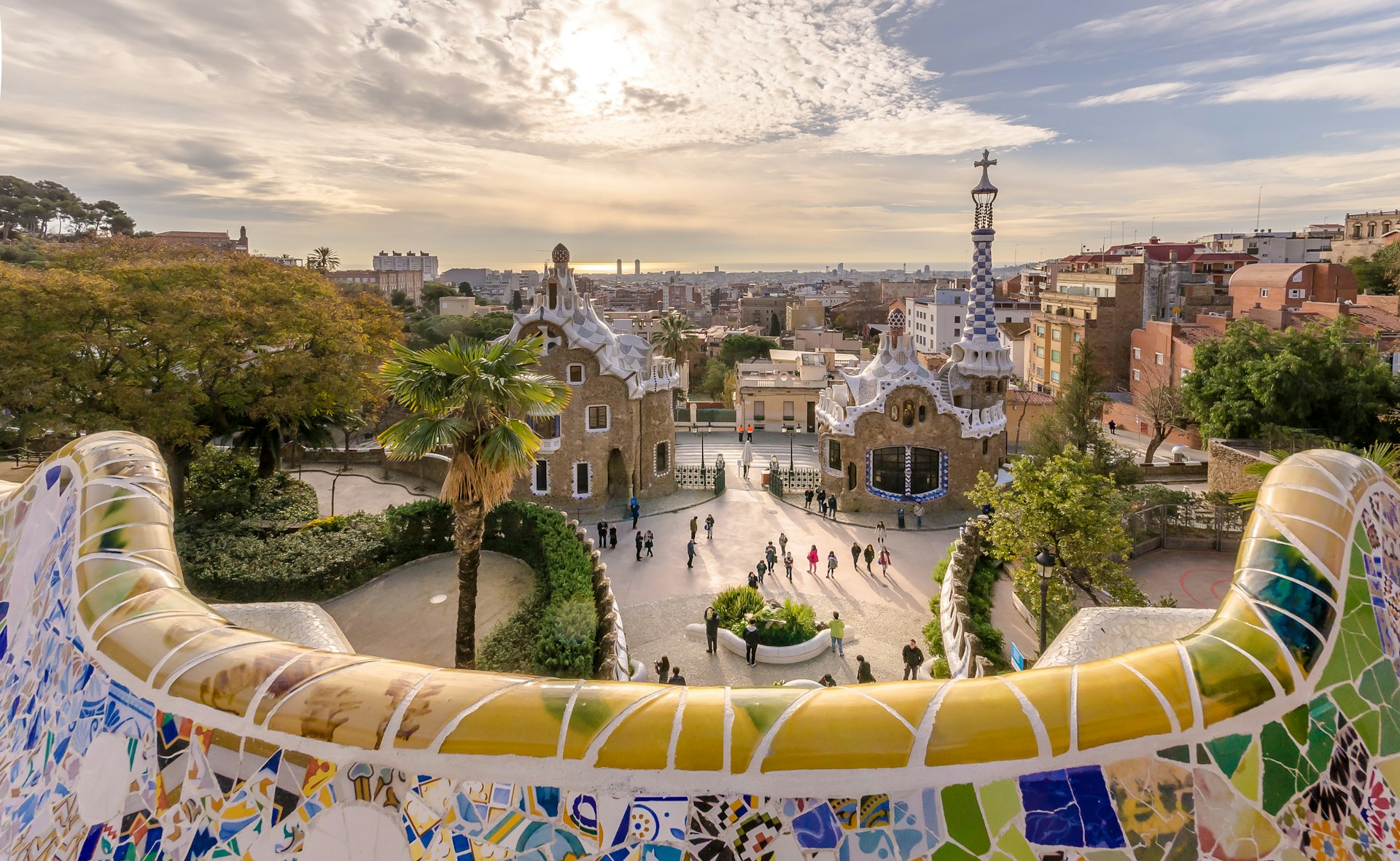
5. Admire Modernisme in Barcelona with an insider
Exploring Catalonia’s irresistible capital with a local architect instantly brings life to the Modernista wonders created by Gaudí, Domènech i Montaner, Puig i Cadafalch and others in the late 19th and early 20th centuries. Look beyond the star acts ( La Sagrada Família , Casa Batlló, Park Güell ), and don’t miss Gaudí’s floral-tiled first commission Casa Vicens (in Gràcia) and other lesser-known Modernista flourishes around L’Eixample and El Raval.
Planning tip: Help combat Barcelona’s much-discussed overtourism issues by visiting outside high season and weekends, staying in officially licensed accommodations , and supporting sustainably focused projects with local roots and powerful initiatives, as well as exploring the rest of Catalonia (from the heights of the Pyrenees to the rice-making Delta de l’Ebre).
6. Road trip around Galicia’s lyrical landscapes
Savoring a glass of crisp albariño with a platter of fresh-as-it-gets seafood is a distinctly Galician moment – just one of many surprises in Spain’s beautifully green northwest corner. Roam well beyond Santiago de Compostela to uncover timeworn stone villages, centuries-old wineries, plunging valleys and over 1000km (620 miles) of wild, windswept coastline sprinkled with sublime beaches, particularly around the Illas Cíes and the Costa da Morte .
Planning tip: While summer brings the warmest weather, June and September are much quieter (always pack an umbrella!).
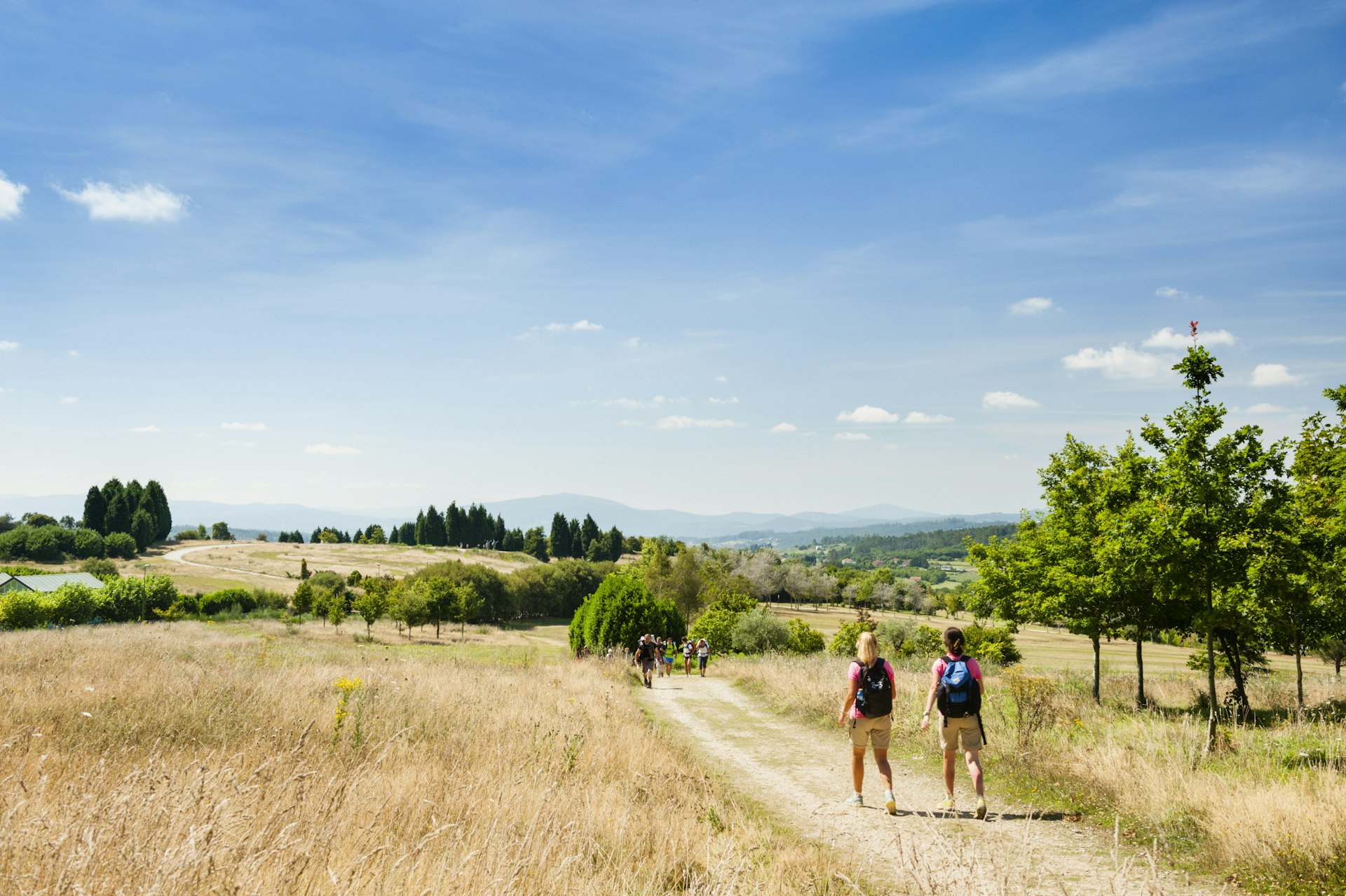
7. Walk an alternative Camino
Finally stumbling into the glittering cathedral in Galicia’s capital Santiago de Compostela , after trekking hundreds of miles along the fabled Camino de Santiago (Way of St James), is a magical moment. Travelers seeking a less-trodden path can swap the popular traditional Camino Francés for the wonderfully rewarding Camino del Norte (Northern Way) or Camino Primitivo . The 600km (373-mile) Norte meanders along and inland from Spain’s northern coastline from Irún, while the challenging 320km (199-mile) Primitivo from Oviedo is believed to be the original Camino, walked by King Alfonso II back in the ninth century.
Planning tip: You can combine the two routes by following an alternative branch of the Norte to Oviedo, then linking up with the Primitivo.
8. Wander off the beaten track in Extremadura
Portugal-bordering Extremadura plunges visitors into one of Spain’s least-touristed corners and is well worth a visit. The secluded Jerte, Ambroz and La Vera valleys reveal half-timbered houses, snow-topped mountains and spring cherry blossom, and there’s outstanding birdwatching in the 180-sq-km (69-sq-mile) Parque Nacional de Monfragüe from March to October. There are also some extraordinary monumental cities, including Cáceres (with its glittering historical core), Trujillo (made wealthy by its high-profile conquistador families) and Mérida (for some of Spain’s most important Roman ruins).

9. Bask in the beauty of Andalucía’s Moorish architecture
Spain’s eight centuries of Islamic rule produced some of its most spectacular architecture, particularly across Andalucía. The unmissable jewels of Moorish Al-Andalus are Granada’s Alhambra , Córdoba’s Mezquita-Catedral and Seville’s Real Alcázar and Giralda , but there’s plenty more. Travel between Córdoba and Granada along the little-known Ruta del Califato (Route of the Caliphate), whose castle-topped villages mark the final medieval frontier between Christian and Islamic Spain; ramble around the majestic alcazabas (fortified palaces) in Almería and Málaga; or head into Huelva’s remote Aracena hills to uncover a rare, perfectly preserved Moorish-era mosque.
10. Enjoy heavenly hikes in every season
Spain’s varied climate means there are outstanding hiking opportunities year-round – from Granada’s snow-dusted Sierra Nevada (perfect in July/August) and northern Spain’s jagged Parque Nacional de los Picos de Europa to the cloud-brushing heights of Aragón ’s Parque Nacional de Ordesa y Monte Perdido and Catalonia ’s Parc Nacional d’Aigüestortes i Estany de Sant Maurici. Along the coast, hit soul-stirringly beautiful trails such as the 200km-long (124-mile) Camiño dos Faros in Galicia or the cliff-top paths in Almería’s Cabo de Gata.
Planning tip: The north shines brightest from June to September/October (book accommodations ahead), while walking in Andalucía is best from March to June and in September and October.
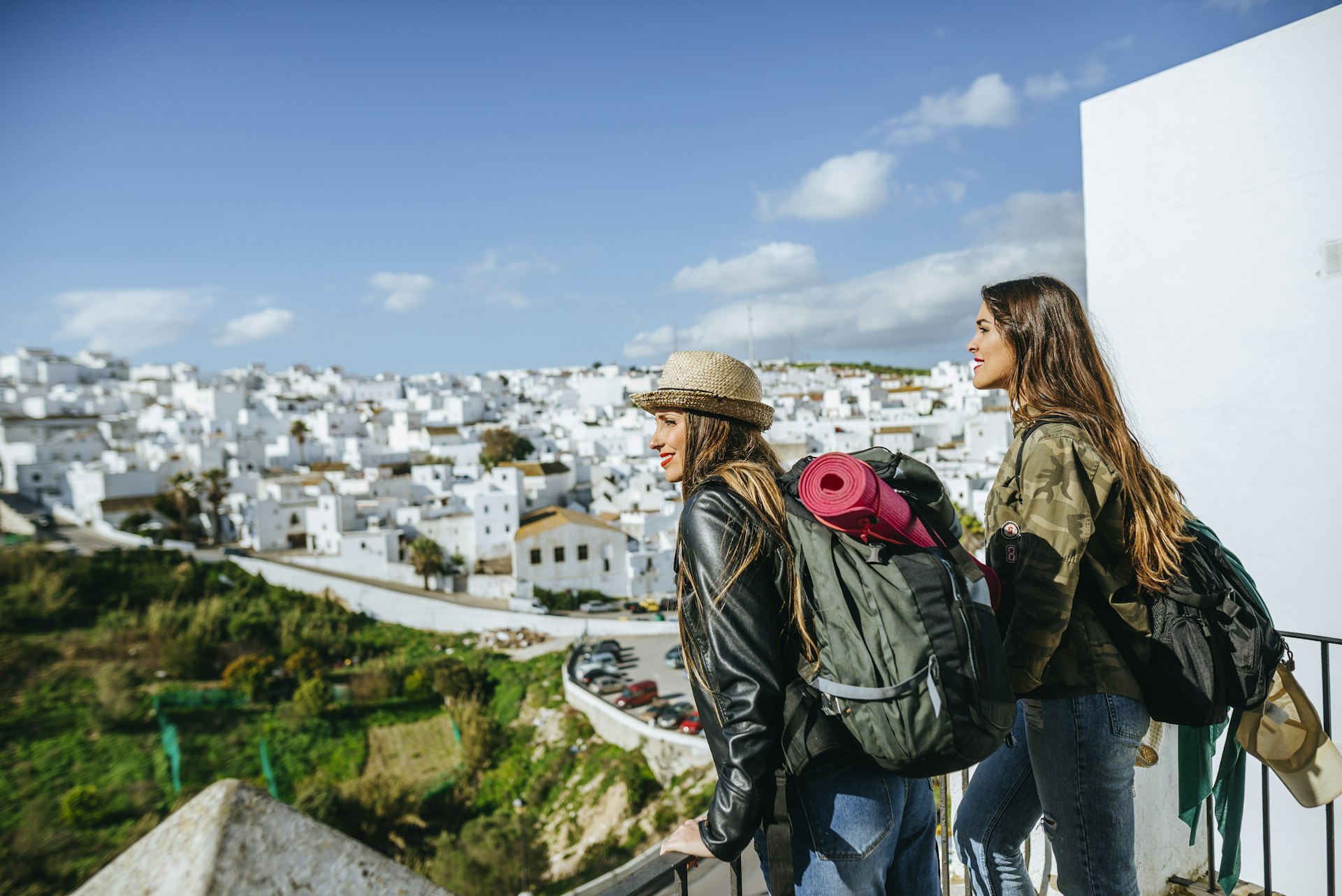
11. Stroll between Andalucía’s white villages
Sunny Andalucía is dotted with impossibly scenic pueblos blancos (white villages), with two main pockets in rural Cádiz and Granada’s Alpujarras valleys – and while these make for fascinating road trips , a series of serene rural walking paths also track between them. Venture off on the long-distance GR7 in the remote eastern Alpujarras (Mairena and Trevélez villages are highlights), or lace up your walking boots in Cádiz’s Sierra de Grazalema, where Moorish castles, rare pinsapos (Spanish firs) and rust-roof villages await.
12. Learn about Spain’s finest olive oil
If you’ve ever wondered where those liquid-gold Spanish olive oils come from, central Andalucía’s Mar de Olivos (Sea of Olives) is a hidden-in-plain-sight joy. Some of the world’s top-tier olive oils are produced among its 15,000 sq km (5790 sq miles) of rolling hills, craggy peaks and silent valleys, particularly across Jaén and Córdoba provinces (where Priego de Córdoba in the Sierra Subbética is the shining star). Stay in one of the region’s peaceful rural hotels, some of which offer home-cooked meals using their own olive oils, and visit local almazaras (olive mills) for tastings, tours and strolls among the olive groves.
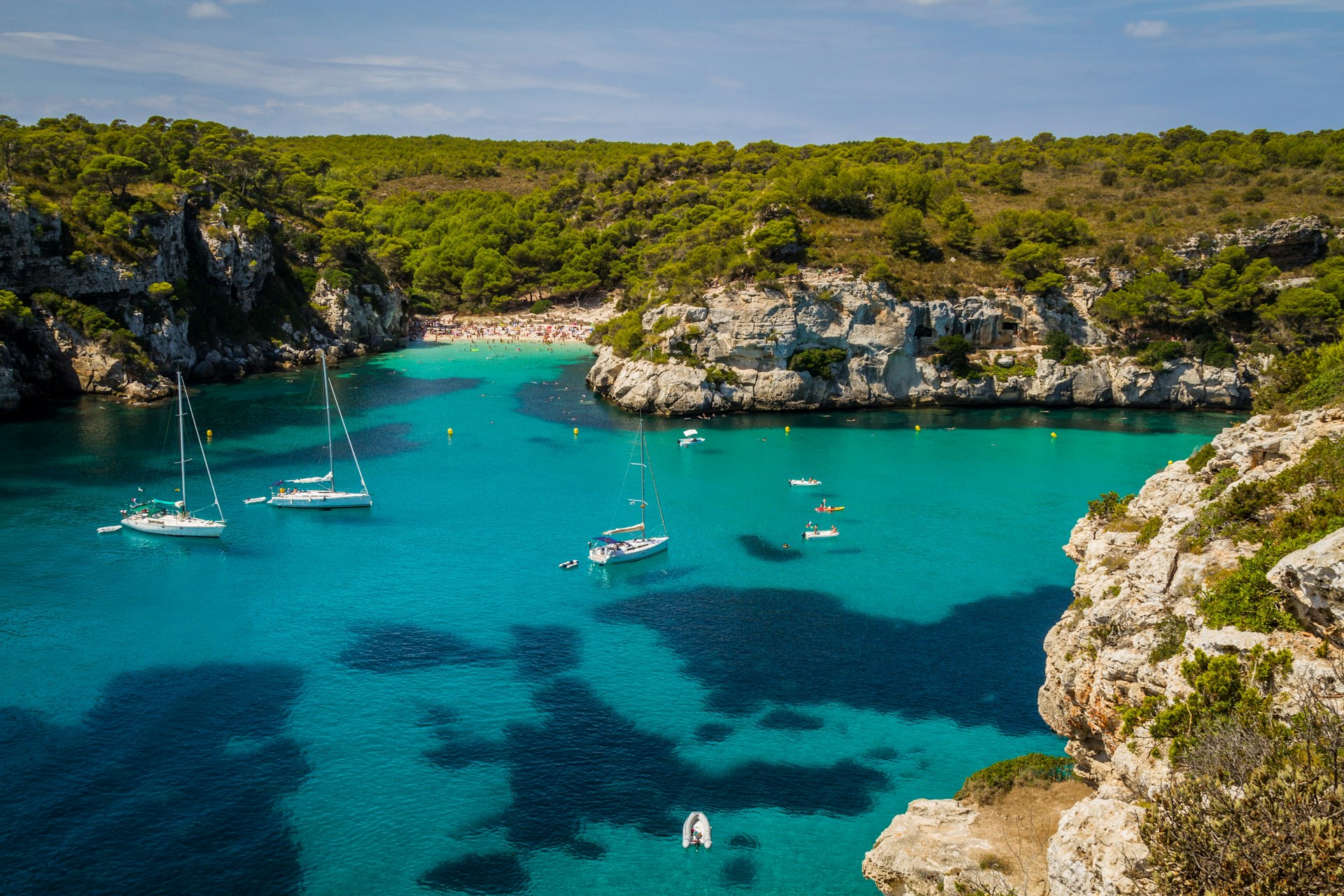
13. Engage in responsible tourism in the Balearics
Forget the dance-until-dawn stereotypes – the four Balearics islands make up one of the Mediterranean’s most blissful escapes, with a strong drive towards responsible tourism that includes a ban on single-use plastics since early 2021. Whether you fancy seductive Mallorca , soothing Menorca , always-chic Ibiza or barefoot-beach Formentera , you can stay in a stylish environment-first agroturisme , learn about the islands’ artisan traditions (from cheese-making to basketry), get involved in beach clean-ups, and soak up the outdoors on hikes, kayak trips, horse-riding adventures and more.
14. Don’t miss the Canary Islands
Around 1000km (620 miles) southwest of mainland Spain, the eight sunbathed Canaries pack in everything from Atlantic volcanic beaches and eerily beautiful pine forests to hikes up the country’s tallest peak, 3715m-high (12,100ft) Teide.
Planning tip: Picking just one island can be a challenge – here’s our in-depth Canary Islands guide to help you narrow it down.

15. Go surfing and exploring along Spain’s green north coast
Some of Spain’s top surf beaches are hidden along the cliff-edged northern coastline, hugging the Basque Country, Cantabria, Asturias and Galicia . While here, discover stone-built villages, extraordinary galleries, ancient cave art, lively cities, local cider and spectacular mountain ranges.
16. Spot rare wildlife in a remote natural wonderland
In recent years, major conservation efforts have brought several of Spain’s most beloved threatened species back from the brink of extinction, including the Iberian lynx, the Cantabrian brown bear and the majestic quebrantahuesos (bearded vulture). Head out in Andalucía’s mountainous Parque Natural Sierra de Andújar for the chance to see a lynx, or venture to the remote Parque Natural de Somiedo in southwest Asturias to (perhaps!) spy a brown bear.
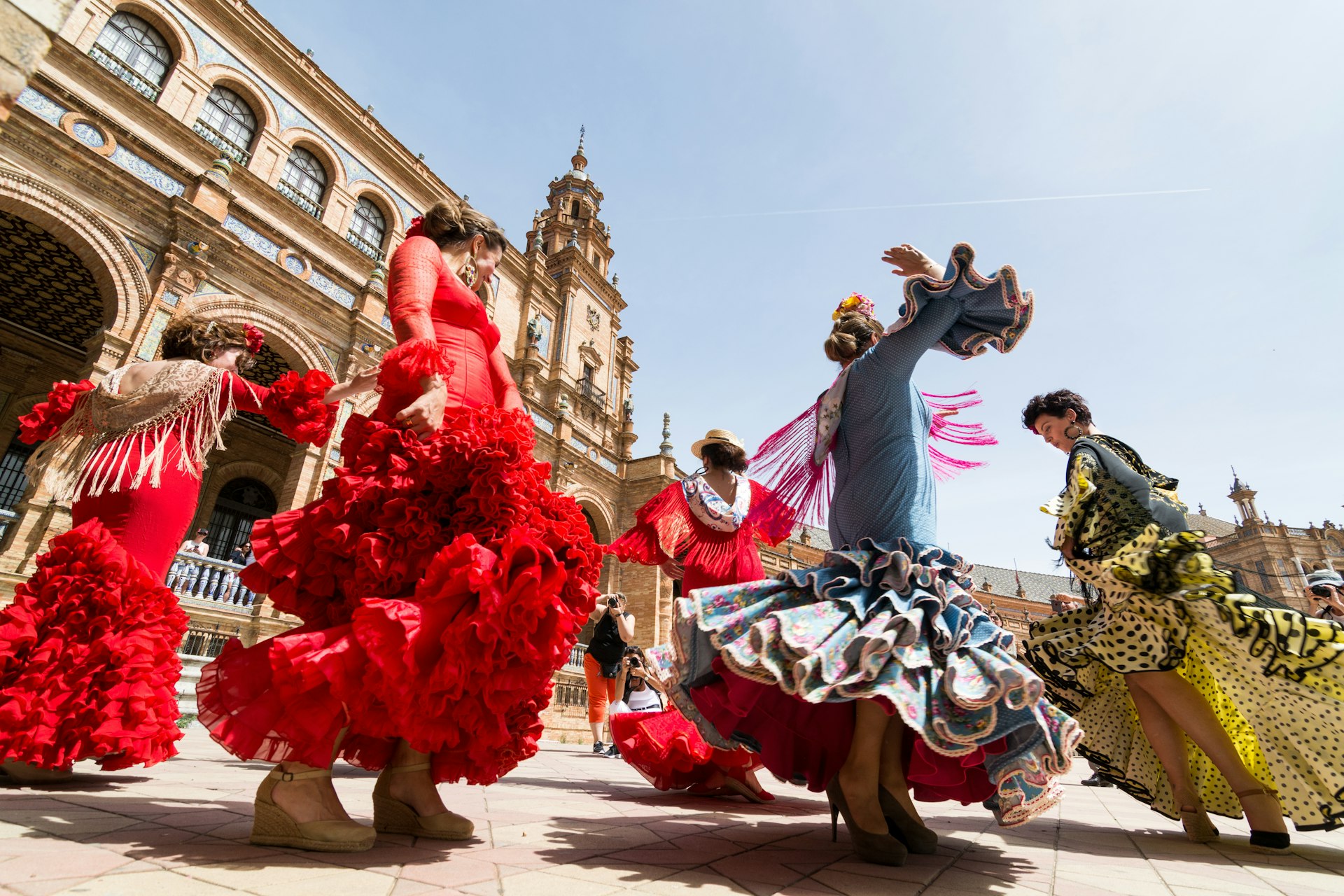
17. Experience flamenco in its Andalucían heartland
There are flamenco shows all over Spain, but the most inspiring place to lose yourself in this soulful ancient art is its southern birthplace: the Cádiz-Jerez-Seville triangle. Hunt down events at local peñas (flamenco clubs), and don’t miss Jerez ’s lively tabancos , where fiery shows are served up alongside sherry poured straight from the barrel.
Planning tip: If you've ever dreamed of learning to dance, this is the ideal place to pick up a few flamenco steps of your own.
18. Wake up in magical accommodations
Fancy slumbering away in a medieval monastery, a fairy-tale castle or a Renaissance palace? Book in at one of Spain’s 98 wonderfully atmospheric paradores , which revolve around sensitively converted buildings packed with centuries of history. Or hunt down a seductive independent stay with its own backstory: a chicly reimagined Modernista mansion in Barcelona, a Balearic farmhouse hidden down a dusty pine-scented track, an artily reimagined home in Cádiz’s Vejer de la Frontera. Many of Spain’s most exciting accommodation spots are attractions in their own right, fueled by inspired, creative design.

19. Get lost in lively, forward-looking Valencia
With its pioneering plans for achieving carbon-neutral tourism , Valencia (Spain’s third-largest city) is becoming a hot tourist favorite. In a short visit, you could be uncovering the Ciutat Vella ’s market-fresh meals, intriguing museums and varied architecture, exploring Santiago de Calatrava’s Ciudad de las Artes y las Ciencias , savoring seafood in El Cabanyal, cycling along the seafront and more.
Planning tip: The Fallas de Valencia festival makes March an outrageously popular month to visit Valencia, but this sunny Mediterranean city is also a perfect autumn or winter escape .
20. Marvel at an ancient (or not so ancient) cathedral
Most Spanish cities unravel around a central plaza overlooked by a formidable cathedral, with styles stretching from Romanesque to Modernista. The country’s most architecturally and spiritually moving cathedrals include León, Toledo , Salamanca , Seville, Burgos , Granada, Segovia , Santiago de Compostela and Palma de Mallorca , as well as Barcelona’s Sagrada Família.
Planning tip: Climbing up a cathedral tower or joining one of an ever-growing number of rooftop tours is a fantastic way to find a fresh perspective on the city below.
This article was first published Sep 30, 2021 and updated Mar 7, 2024.
Explore related stories
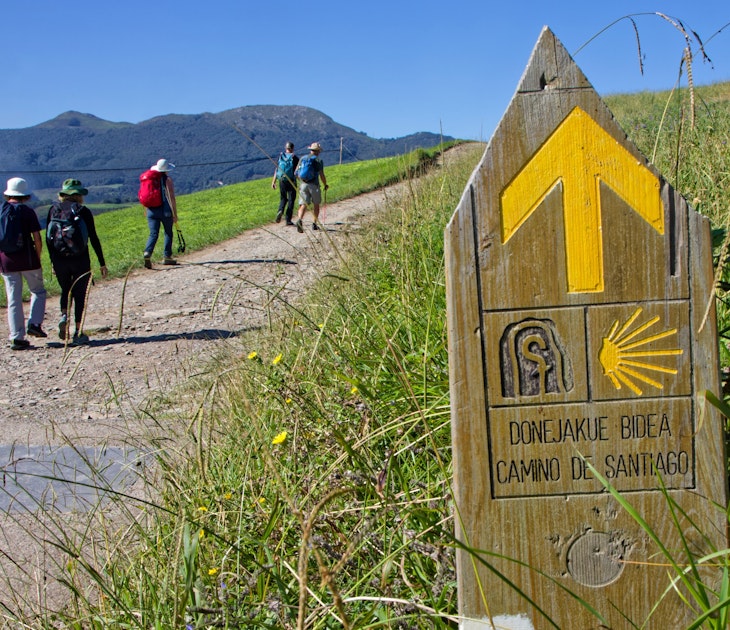
Mar 25, 2024 • 6 min read
Hundreds of thousands walk the Camino de Santiago pilgrimage in Spain every year: here are the most popular routes.

Mar 20, 2024 • 8 min read

Feb 28, 2024 • 3 min read

Feb 10, 2024 • 7 min read

Feb 2, 2024 • 6 min read

Sep 22, 2023 • 11 min read

Aug 22, 2023 • 7 min read

Aug 11, 2023 • 8 min read
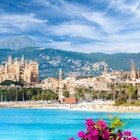
Jul 25, 2023 • 5 min read

Feb 15, 2023 • 6 min read
MORE SECTIONS
- Dear Deidre
MORE FROM THE SUN
- Newsletters

- News Travel
I live in Spain – here’s the tiny Spanish island with no protests but beautiful beaches
- Hope Brotherton , Travel Reporter
- Published : 12:01, 8 Jun 2024
- Published : Invalid Date,
SPAIN attracts millions of Brits every year, so finding somewhere away from the crowds can be quite tricky.
Luckily enough, there's one tiny Spanish island hat seems to have gone unnoticed by most British holidaymakers.

Timon van Basten has lived in Spain for the last five years and works as a tour guide in the country.
With his knowledge of the travel industry, it's safe to say he knows exactly where holidaymakers to stay our their next trip to the country.
While Canary Islands like Tenerife, Lanzarote and Fuerteventura remain popular among Brits, Timon recommended a trip to El Hierro - the second smallest of the islands.
Timon told Euro News : "The tiny, remote island has an end-of-the-world vibe with lava flows, volcanic craters, and lush cliffs plunging into the Atlantic.
"Explore at your own pace, with quaint towns, secluded beaches, and tranquil hiking trails to discover."
Because the island is the furthest south of the group, it boasts some of the best weather in the Canary Islands.
The island has a volcanic and mountainous landscape complete with lush pine forests and natural pools.
One of the island's top attractions is the El Tamaduste Pool , which is described as an "ideal place to swim or enjoy water sports like diving or paddle boarding" on the attraction's website .
Most read in News Travel

Major Ireland AM shake-up leaves fans confused as hosts completely missing

Legendary Irish singer & TV personality Rose-Marie has died suddenly aged 68

Big blow for thousands of Irish drivers as major road charge to rocket to €93.50

Dunnes Stores fans set to love new €20 denim jacket for summer in four colour
The natural pool is a great place to take a refreshing dip while being protected from strong waves.
There's also La Restinga - a marine reserve located at the southernmost tip of El Hierro.
The protected area is home to an abundance of sea creatures, including rays, tunas, groupers, barracudas and dolphins.
Several diving centres organise scuba diving tours of the marine reserve, with holidaymakers able to explore underwater tunnels and caves in clean and pollution-free water.
There are plenty of activities on land, including the Guinea Tunnel - a 90-metre-long volcanic tunnel that's open to visitors.
Holidaymakers will be able to explore the tunnel on a Guided Tour, with visitors learning about how the site was formed.
The Guinea Tunnel is open from 9am to 2pm and 5pm to 8pm every day.
El Hierro is also home to several beaches, including Cala de Tacorón, which is a tiny cove on the south side of the island.
The black and red sand beach is easily accessible from the coastal town of La Restinga
Other beaches on the island include El Verodal, Puerto de La Estaca Beach and Las Playas.
Daily flights operate between Tenerife and Gran Canaria to El Hierro.
Flights from Gran Canaria take just 50 minutes and prices start from 29.50 for a one-way fare.
Ferry services also operate from Tenerife to El Hierro, with journeys taking around two and a half hours.
Sun Online Travel have found ferry tickets from 14 per person for a one-way fare.
Other little-known Spanish islands
There are a handful of other little-known Spanish islands, including the Cíes Islands , which are just off the coast of Galicia .
The islands are an archipelago found in the mouth of the Ria de Vigo.
There are three islands altogether, including Monteagudo, Do Faro and San Martín.
The archipelago's official website claims that guests can find "velvety white sand beaches, famous for their turquoise coloured waters" .
However, despite its amazing beaches , there are never many people there to spoil the tranquillity.
That's because the archipelago is a dedicated nature reserve that doesn’t allow more than 2,200 visitors each day.
Read more on the Irish Sun

RTE 'biggest crisis' alert after double departure amid fears more stars to quit

Rory McIlroy & stunning TV reporter spark romance rumours with flirty interview
Everything you need to know about visiting spain.
- Brits must have at least three months left on their passport from the day they plan to leave the country.
- Tourists do not need a visa if visiting for up to 90 days in an 180-day period.
- Make sure your passport is stamped on entry and exit.
- Travellers may be asked to show hotel booking confirmations and that they have enough money for their stay at the border.
- Spain is one hour ahead of the UK.
- The country uses the euro with around €10 working out to £8.55.
- Flights to Spain from the UK take between 2-4 hours depending on the destination.
La Gomera in the Canary Islands is said to be better than its neighbour Tenerife - smaller, lesser-known, more affordable, and possibly more beautiful that its popular counterpart.
The Canaries' secret isle is only a short ferry ride from Tenerife and still features its black sand volcanic beaches, stunning scenery, wonderfully warm temperatures, but without its high-rises blocks, rampant nightlife and busyness.

- Canary Islands

TUI will 'tackle' Canary Islands problem 'head on' after UK tourists told 'go home'
T UI has announced a huge Canary Islands hotels change after a Tenerife protest against "overtourism". The Canary Islands and Balearics have been tense with rising animosity in recent weeks and months, as locals take issue with the sheer amount of tourists and holidaymakers visiting the popular destinations from Britain.
TUI have announced they will "tackle the issue head-on" by investing in residential housing. TUI Group has announced plans to invest in residential housing in the Canary Islands instead of constructing new hotels, according to reports in the Canarian Weekly.
The CEO of TUI, Sebastian Ebel, explained the company's and said: "We are offering to create living spaces for employees and other residents; we are happy to tackle the issue head-on." He went on: "It is not our place to dictate how many tourists a destination can accommodate; that is the responsibility of local politicians."
READ MORE Brits in Spain and Portugal told to prepare for 'dramatic' shift starting today
Mr Ebel noted that Mallorca and Ibiza are also expected to see a surge in tourists this summer. "We might reach capacity limits in the Balearic Islands," he warned. The TUI boss also recently revealed that he had just discussed opening up Algeria for beach holidays.
“There was a very clear message that the security situation is not as bad as you might think from what you hear in Europe. But it’s not in a way that we could send customers to. I would hesitate to do something before the overall situation improves.” Tui lost its position as number-one Atol operator to Jet2holidays last year.
Earlier this year, Mr Ebel insisted: “We see lots of opportunities to improve our result [given] the gap between the performance of a competitor and us.” He noted: “The market is maybe slower. The macroeconomic [situation] is not giving the sector a headwind. But the demand for travel is very strong. It’s even more important for us that we do better than our competitors.”

- Search Please fill out this field.
- Manage Your Subscription
- Give a Gift Subscription
- Newsletters
- Sweepstakes
- Destinations
This Sunny Spanish City Is Known for Amazing Tapas and a ‘Magical Vibe’ — and It Won’t Break the Bank
Here's everything you need to know to plan a perfect trip to Granada, Spain.
:max_bytes(150000):strip_icc():format(webp)/Stacey-Leasca-2000-631fabdcfe624115bea0ce8e25fdec96.jpg)
- Best Hotels & Resorts
- Best Things to Do
Best Restaurants
Best time to visit, how to get there, how to get around.
Rory Fuller/Travel + Leisure
Granada is about as captivating a city as they come. The city, tucked at the base of the Sierra Nevada Mountains in Spain's Andalusia region, is filled with more historic charm than perhaps one place deserves. Here, travelers can walk through winding cobblestone streets, drink in views of Moorish architecture, and stroll through buildings dating back to the 14th century, all within the span of an afternoon.
"Granada is a gem filled with history, culture, and stunning scenery," Tim Hentschel, the CEO and co-founder of HotelPlanner , shares with Travel + Leisure . "Granada is also known for its delicious cuisine, particularly its tapas culture. You can enjoy various mouthwatering dishes while exploring the city's vibrant culinary scene. And what is especially remarkable is that Granada doesn't break the bank like other big Spanish cities, but it still oozes authentic charm. The locals are friendly, the vibe is lively, and your wallet stays happy without missing out on that classic Spanish charm."
And, as Alicia Benito, a Spanish language and culture specialist at Promova , notes, it's a place where you really can kick up your heels, too.
"It's like the perfect mix of history, amazing sights, and a very lively culture. Also, the people there really know how to live," Benito says. "There are cool street markets everywhere, cozy tapas bars on every corner, and passionate flamenco shows in Sacromonte. It's just got this magical vibe that grabs you and doesn't let go."
Not only that, but Granada is also a destination that experiences some 3,000 hours of sunshine a year , practically ensuring at least one beautiful day while you're there. Here's how to plan the perfect trip to Granada.
Top 5 Can’t Miss
Stay in a former monastery when you book a room at Parador de Granada.
Explore the stunning Alhambra.
See a zambra flamenco show in Sacromonte.
Go for a tapas and wine crawl around the city’s best bars and restaurants.
Visit in the spring or fall for beautiful weather and fewer crowds.
Rory Fuller/Travel + Leisure
Best Hotels & Resorts
Hospes palacio de los patos.
Hospes Palacio de los Patos is the perfect representation of Granada. It's a 19th-century palace turned modern retreat located in the heart of the city. Here, guests can unwind in stately rooms with soaring ceilings and royal-ready beds, relax in the Bodyna Spa, or dine on local dishes — including plenty of tapas — on its outdoor terrace.
Parador de Granada
Sleep amid history at Parador de Granada , located within Alhambra's grounds. The former monastery has been transformed into an inviting escape with rooms overlooking the Generalife's lush gardens. It's a modest accommodation, but one that is ideal for those looking for a quieter stay and access to utmost tranquility.
Hotel Casa 1800 Granada
Pining for even more history? Then book a stay at Hotel Casa 1800 Granada . As the name implies, the hotel was once a private home, built in the late 16th century, and it maintains much of its charm — including the original facade. Every room here is unique, but all offer historical touches, including original balconies, shutters, and frescos.
Carmen de la Alcubilla del Caracol
Get a room with a view at Carmen de la Alcubilla del Caracol . The boutique hotel's privileged position atop a hill provides spectacular views from every window of both the Alhambra and the Sierra Nevada Mountains. Spring for a room with a terrace for an unforgettable stay.
Best Things to Do
Explore the alhambra..
We're not sure it's possible to visit Granada without visiting the Alhambra , often regarded as a masterpiece of Islamic architecture and art. "The number one must-see is definitely the Alhambra palace," Benito shares. "It's like the crown jewel of Granada, with its amazing Islamic architecture and beautiful gardens. You can spend hours exploring the different palaces and courtyards, and the views from up there are incredible."
Visit the Granada Cathedral.
The Granada Cathedral , also known as the Cathedral of the Incarnation, is a stunning Roman Catholic church dating back to the 16th century. Outside, travelers can spend hours looking at its imposing arches and pillars, while inside, they'll be in awe of the spectacular dome and frescos lining the walls. Guests can come to worship or go on a cultural tour to learn more about its fascinating history.
See a flamenco show in Sacromonte.
Immerse yourself in local culture with a flamenco show in Granada's historic Sacromonte district . Here, you'll find a unique form of flamenco known as zambra, passed down for generations. It's emotional and rhythmic, and it will leave you fully inspired.
Check out the Parque de las Ciencias.
Have a day filled with fun and science with a visit to the Parque de las Ciencias . Here, guests can learn about everything from the human body to the outer edges of space all in one afternoon. Don't miss the outdoor astronomy garden, where you can play with all the observation instruments.
Stroll through the Albaicín.
"If you're into history and culture, don't miss wandering around the Albaicín neighborhood, where you feel like stepping back in time with all these narrow streets and cool Moorish architecture," Benito says. Indeed, the neighborhood is known as Granada's oldest and most traditional neighborhood. The historic Moorish quarter is a melting pot of cultural influences, including Iberians, Greeks, Romans, and Visigoths, who have all passed through these streets, just like you.
Bodegas Castañeda
Find a traditional atmosphere matched by a traditional tapas menu at Bodegas Castañeda . Go for one of its famous platters that come with a taste of everything, including its tabla fria , with two croquettes, a Russian salad, tortilla española (a potato omelet), ham, cheese, and chicken. They offer plenty of wines by the glass, but make sure to check out the Wine of the Week menu for something special.
Bar Los Diamantes
Famed for its fried fish tapas, Bar Los Diamantes is a hit among both locals and tourists alike. Yes, it's crowded, but that's because it's just that good. There are several locations around the city, but no matter which one you visit, you'll be delighted by the fried prawns, calamari, or daily specials.
La Sitarilla
La Sitarilla , a family-run restaurant, is one more spot where you can find plenty of traditional bites. Go ahead, get the pig feet. But also get the meatballs, the fries, or whatever else is offered to you alongside each beer or wine you order.
Bjoern Bremer/Getty Images
According to Benito, the best time to visit Granada "really depends on what you're looking for. But generally speaking, spring and autumn are probably the best bet." That, Benito says, is when the weather is at its best, as it's not too hot nor too cold, and the crowds are at their thinnest, allowing you to explore more and wait in line less. "But honestly, Granada is beautiful year-round, so whenever you go, you're going to have an amazing time," Benito adds.
Spring also offers travelers the chance to take part in festivals like the Cruces de Mayo , celebrated on the third of May. And in the fall, guests can swing by the Granada Film Festival to check out the latest cinematic talents or visit all September long to honor Virgen de las Angustias , the patron saint of the city.
Courtesy of Parador de Granada
By plane: The nearest airport is Federico García Lorca Granada-Jaén Airport , located about 12 miles outside the city. The airport offers mostly domestic flights and a few international connections (most flights connect through Spain's larger cities, Madrid and Barcelona).
By train: Travelers can also make their way to Granada by train from both Madrid and Barcelona. Madrid to Granada takes about four hours, while the Barcelona to Granada train takes about six. By car: Anyone can get to Granada by car as well, as the city is well-connected to major highways traveling to and from Madrid, Seville , and other coastal cities.
KavalenkavaVolha/Getty Images
By car: Renting a car in Granada is simple. Several major rental car companies have outposts here, including Sixt, Europcar, and Avis. Having a car will allow you to explore the outer regions of the city and into the mountains, but be warned — parking in the heart of town can be difficult.
By public transit: Buses are the main form of public transport in Granada. The system covers most of the city, making it simple to hop on and off between neighborhoods. A regular bus ticket runs at about $1.50. See the map and full fare schedule here .
By taxi: Taxis are also easy to come by throughout Granada. As Love Granada explains, there are two types of fares — daytime rates for weekdays and nighttime rates for late weeknights and holidays. Just like in cities around the world, you can hail a cab on the street by throwing up your hand in the air and by trying to spot any taxi with a green light on its roof (which indicates it's open for a ride).
Related Articles

IMAGES
COMMENTS
The Canary Islands offer many options for travelling to all the islands and being able to travel between them quickly and easily. They all have airports and ports served by different companies and covering a variety of routes. Besides, the distances are so small that it won't take you long to get from one place to another.
How to travel between Canary Islands - a quick overview Photo by Joseph Richard Francis. Now we've got the geography lesson out of the way, let's take a look at how you can hop and cross that 300 miles of Atlantic Ocean from west to east, east to west, all in search of perfect beaches and the best volcano hikes. Let's begin by stating ...
How to travel between the Canary Islands by plane. PHOTO: MARIA BOBROVA/UNSPLASH. Here's the good news: Every single major island of the eight in the Canaries has its own airport, while Tenerife - one of the most popular - even has two. That probably makes this one of the best-connected regions for aviation in the whole of Europe ...
6. La Palma - best for jaw-dropping scenery. 7. La Gomera - best for heavenly hiking. 8. El Hierro - best for utter escape. How to get to the Canary Islands: The information in this article is inspired by The Rough Guide to Spain, your essential guide for visiting Spain. Travel ideas for Spain, created by local experts.
Named the eighth Canary Island in 2018, serene sand-swept La Graciosa lies just a half-hour boat ride north of Lanzarote. On this low-lying beauty of an island, wild honey-gold beaches wrap around scorched volcanic cones, and the only way to explore is on foot, by bicycle or by rented jeep.
Canary Islands Travel Tips. Best Months to Visit. The best times to visit the Canary Islands are between March and May and from September to November. Winter and summer bring loads of tourists ...
Island hopping and ferry travel in the Canary Islands. Traveling by ferry in the Canary Islands is easy. There are frequent ferry connections between all the islands. You can catch a ferry throughout the year, and go island hopping with one of the following ferry companies: Líneas Romero; Fred. Olsen Express
Build a memorable collection. Get to the heart of Canary Islands with one of our in-depth, award-winning guidebooks, covering maps, itineraries, and expert guidance. Spain $ 28.99. Andalucia $ 22.99. Pocket Bilbao & San Sebastian $ 14.99. 02 / Articles.
Preparing for the Canary Islands. The Canary Islands form part of the EU. So as long as you plan on spending fewer than 90 days within the archipelago, you don't need a visa to travel to the Canary Islands. All you need is a passport that's valid for at least three months following your planned departure date from the Canary Islands.
Ferries are a common way to travel between the Canary Islands. You will find a range of frequent connections, offering you the option of bringing your vehicle aboard. The journey time between islands depends on the distance and type of ship. Journeys range from 35 minutes to ten hours. For example, you can travel between Gran Canaria and ...
TRAVEL GUIDE. For over 80 years, Fodor's Travel has been a trusted resource offering expert travel... A historic way station between the Old and New Worlds, the Canary Islands have been influenced ...
The cities of Cadiz or Huelva allow you to reach the islands of Las Palmas or Gran Canaria by ferry! The crossing lasts between 30 and 40 hours depending on the weather conditions. We didn't know about it, until we saw cars with Swiss plates or German plates driving in the Canary Islands.
Esme Fox 28 January 2020. The Canary Islands lie approximately 100 kilometres from the south coast of Morocco. An archipelago of seven main islands, they may be part of Spain, but seem to have more in common with the Caribbean due to their laid-back vibe, island time and stunning beaches. Many of the Canary Islands have been awarded UNESCO ...
If you'd like to island hop, once here, you may fly between the Canary Islands on airlines such as the local Binter Canarias, as well as Air Europa and CanaryFly. Another option is to take a ferry ...
Canary Islands, fourth place in Spain with most holiday rental homes. Published on June 06, 2024. The Canary Islands had 46,784 registered tourist accommodation properties at the end of last February, according to the latest figures published by the National Institute of Statistics (INE). This places the Canary Islands as the fourth region with ...
28°24′54″N 15°54′0″W. Map of Canary Islands. The Canary archipelago consists of 8 inhabited islands, and a few smaller uninhabited ones. 28.268611 -16.605556. 1 Tenerife - The largest and most populous island with an area of 2,034 km² and also the most popular tourist destination of the archipelago, with about 6 million tourists ...
A good option both to get to the Canary Islands as to travel between each other is to take a ferry. If you wish to use the ferry you should know that there are many regular trips per day and usually they are very punctual. You might also take your own car on the Ferry. According to your departure, there are different ferry types which will take ...
There you can get nonstop flights on various airlines, such as Iberia, Air Europa and low-cost carriers, to five of the seven islands: Tenerife, Gran Canaria, Lanzarote, Fuerteventura and La Palma. You can also reach many of the islands from European hubs, flying on full-fare carriers or low-cost carriers like Wizzair, Ryanair, Vueling, Jet2 or ...
Published on September 12, 2023. As the Canary Islands are one of Spain's most popular tourist destinations, many visitors wonder whether they'll need to pay a tourist tax, similar to those that already exist in places like Catalonia or the Balearic Islands. Travel advice for Fuerteventura Transportation in Fuerteventura.
Island hopping in the Canary Islands. 23rd October 2020 Skyscanner. With the Canary Islands back on the UK's travel corridors list, we can start dreaming about a relaxing winter break to Lanzarote, Fuerteventura, Tenerife, or one of the other beautiful islands of the Canary archipelago. From 4 am on Sunday 25 October, UK travellers returning ...
Prices to travel by boat on the Canary Islands: The boat trips' prices might depend on the journey. for example: Lanzarote - Fuerteventura: around 20€. Gran Canaria - Tenerife: 25€. You might buy these tickets on-line on the following web-page: www.navieraarmas.com.
Travel by plane in the Canary Islands. Traveling by plane is the quickest way of traveling from one island to the other in the Canary Islands. But, even though all the main islands have an airport, not all of them have flight connections between each other. If you're in Lanzarote looking for a way to go to Fuerteventura you should catch the ...
14. Don't miss the Canary Islands. Around 1000km (620 miles) southwest of mainland Spain, the eight sunbathed Canaries pack in everything from Atlantic volcanic beaches and eerily beautiful pine forests to hikes up the country's tallest peak, 3715m-high (12,100ft) Teide.
Tour guide Timon van Basten recommended visiting El Hierro in the Canary Islands (stock) ... Sun Online Travel have found ferry tickets from 14 per person for a one-way fare.
The Canary Islands and Balearics have been tense with rising animosity in recent weeks and months, as locals take issue with the sheer amount of tourists and holidaymakers visiting the popular ...
By public transit: Buses are the main form of public transport in Granada. The system covers most of the city, making it simple to hop on and off between neighborhoods. A regular bus ticket runs ...